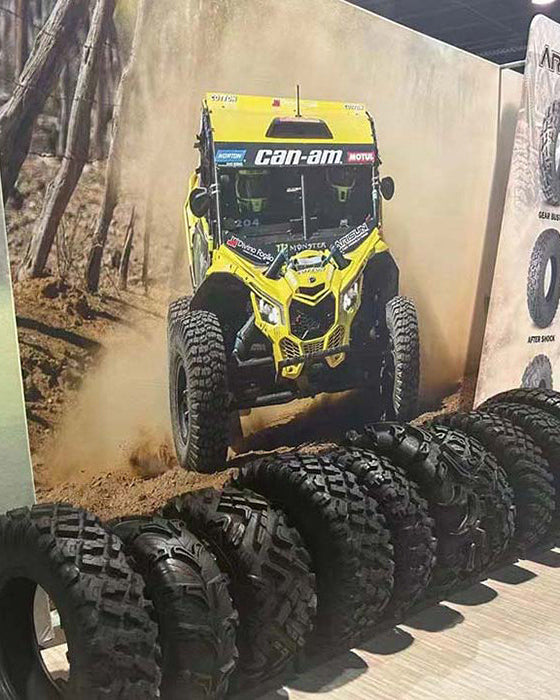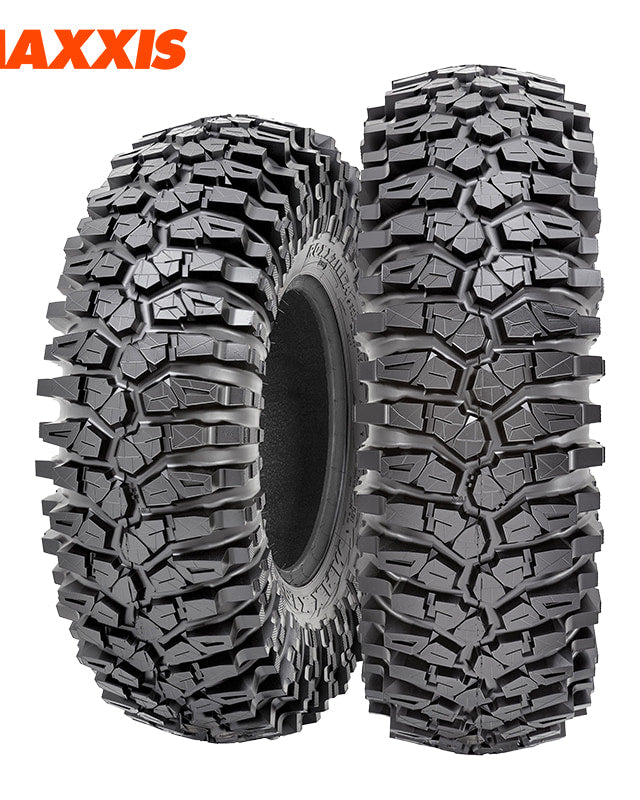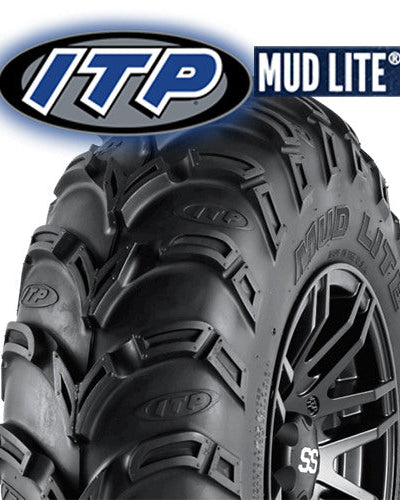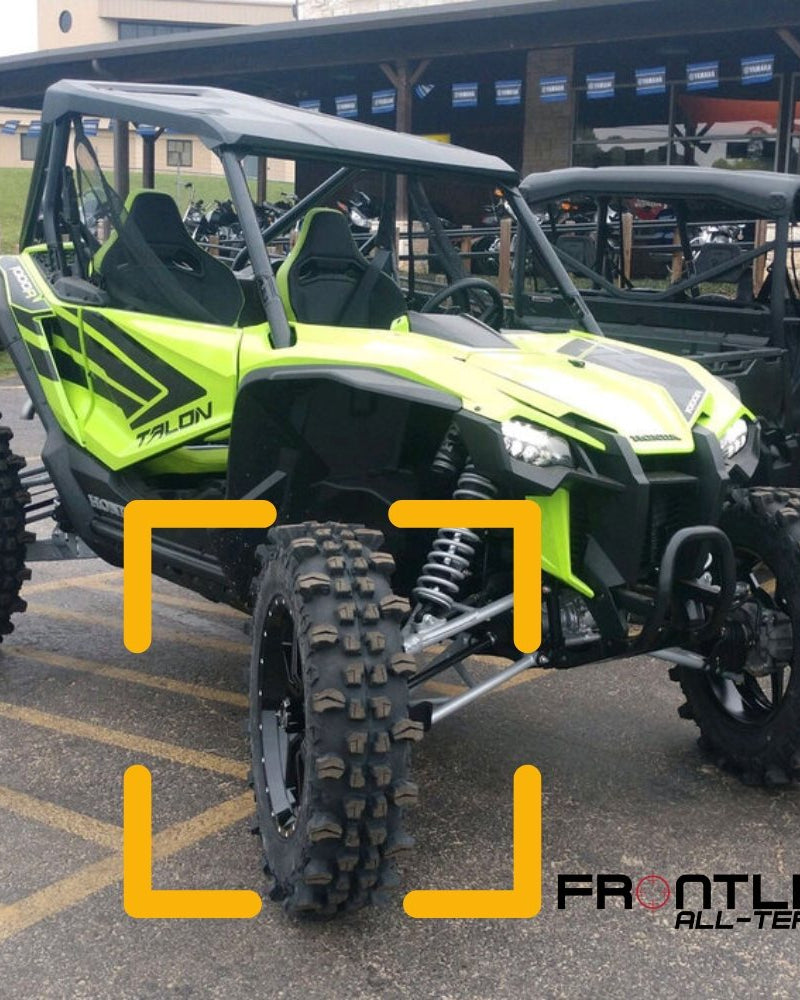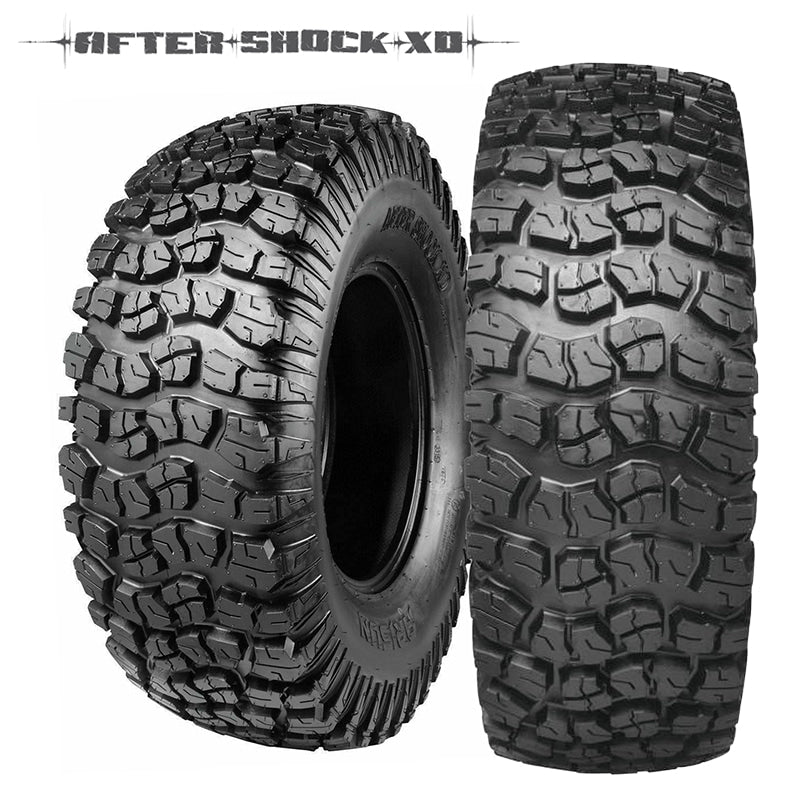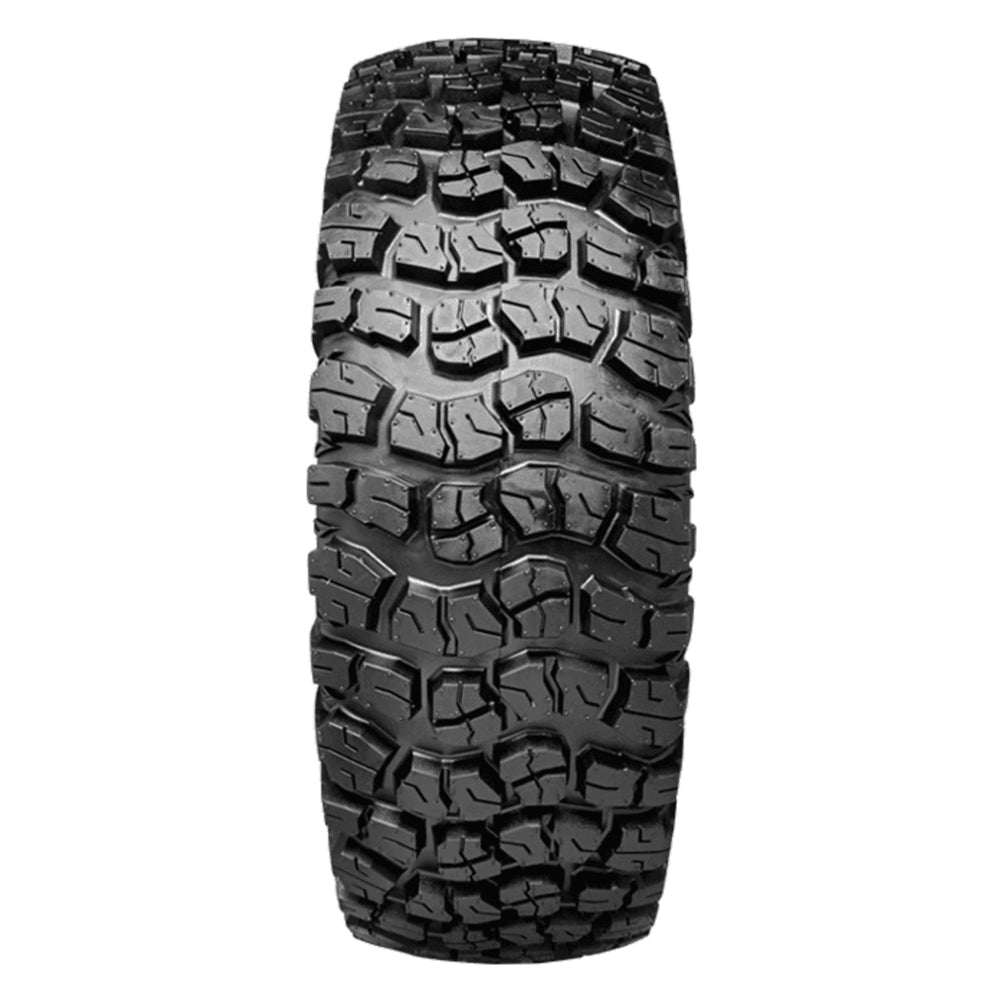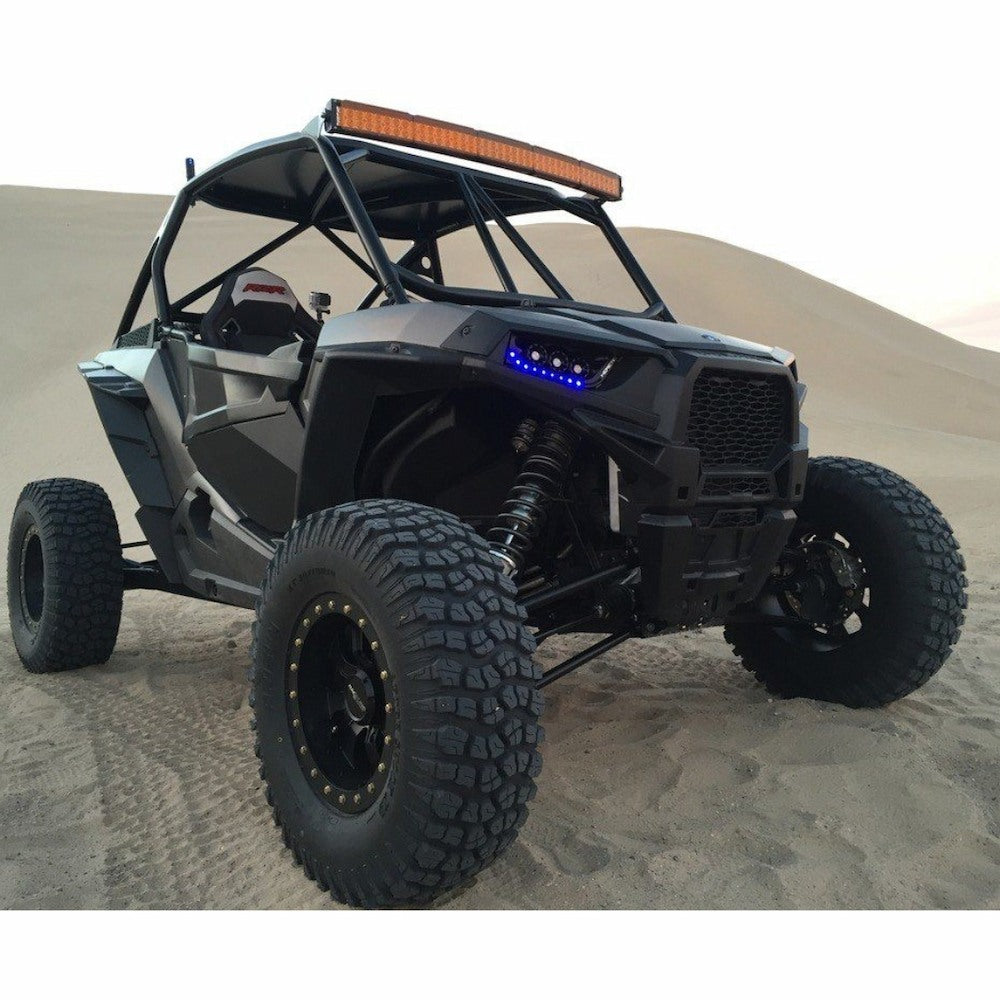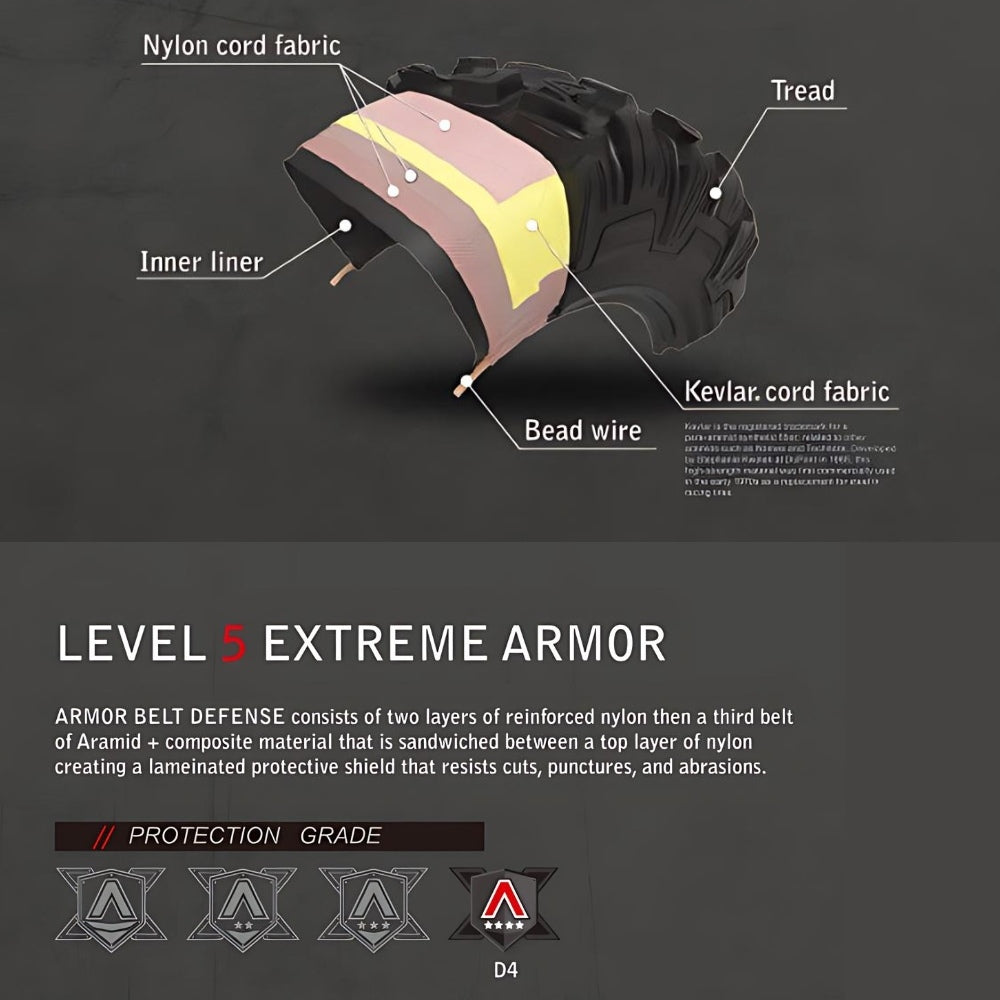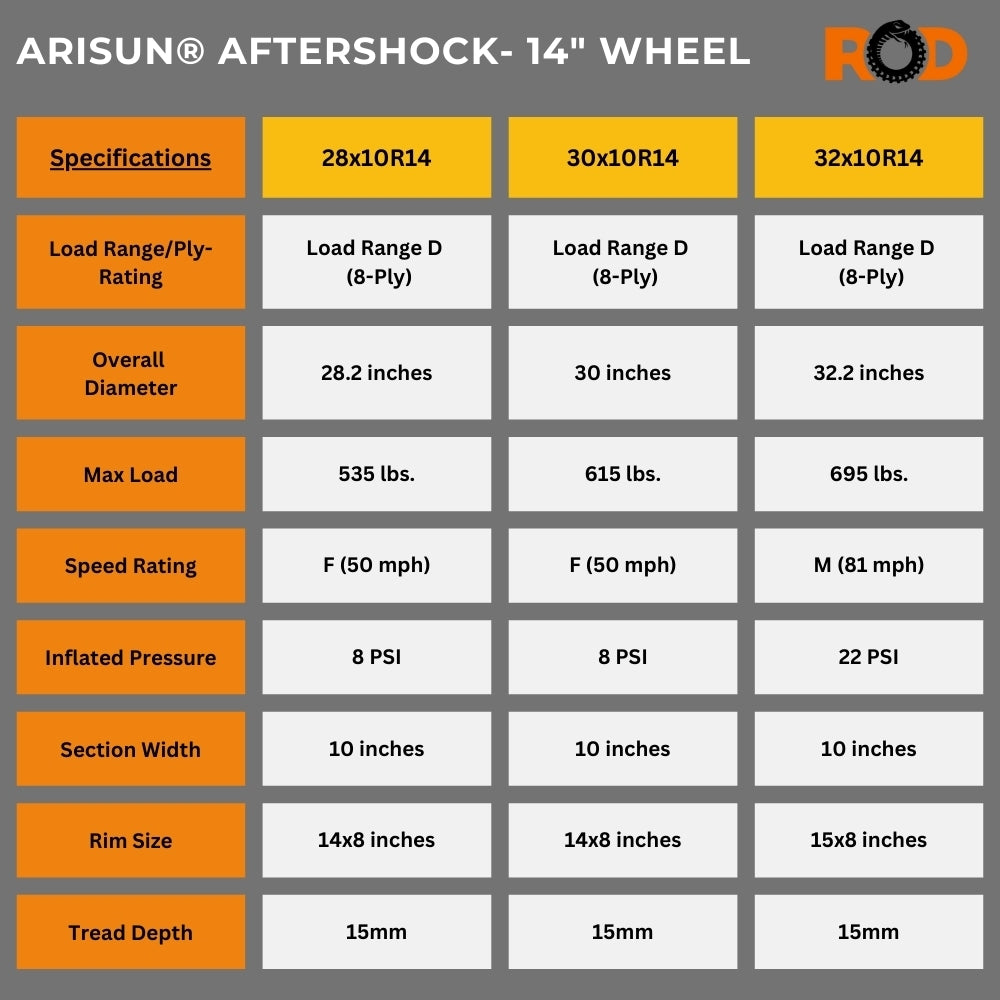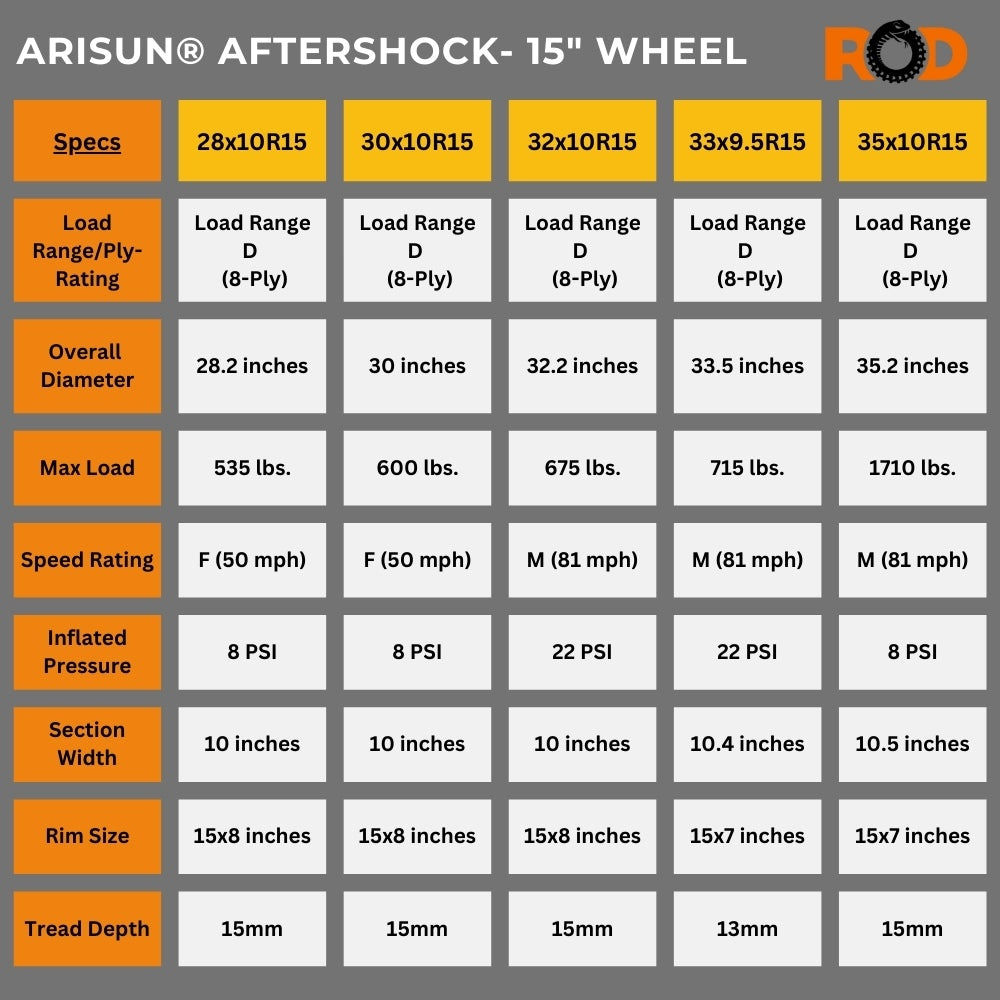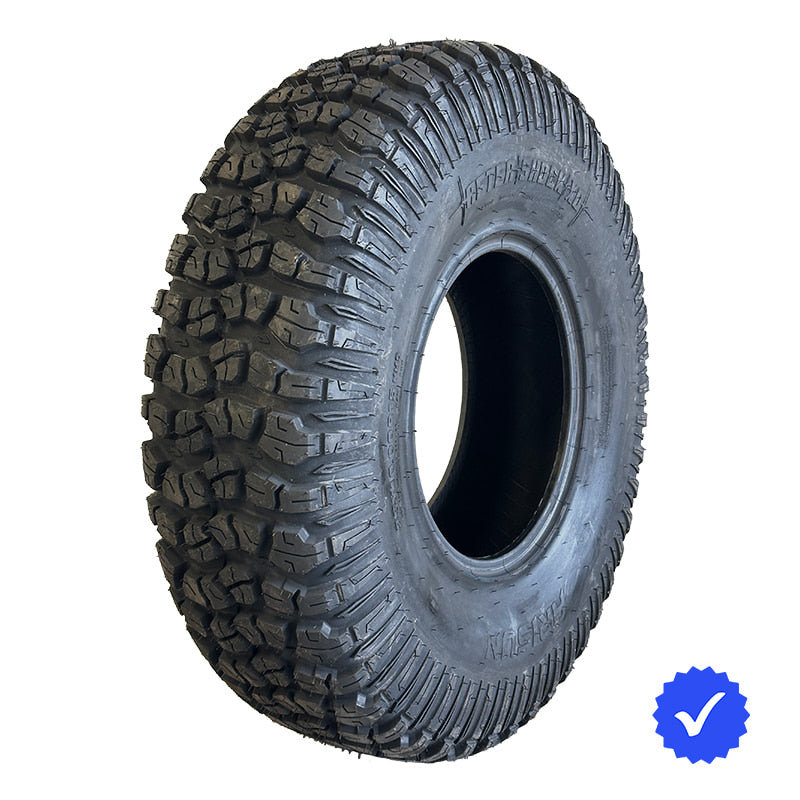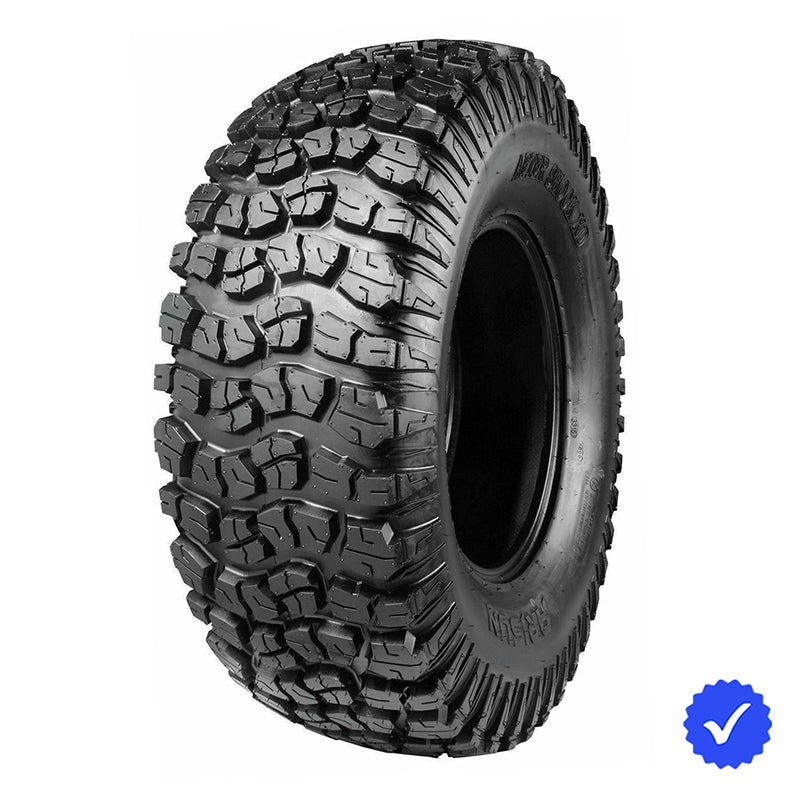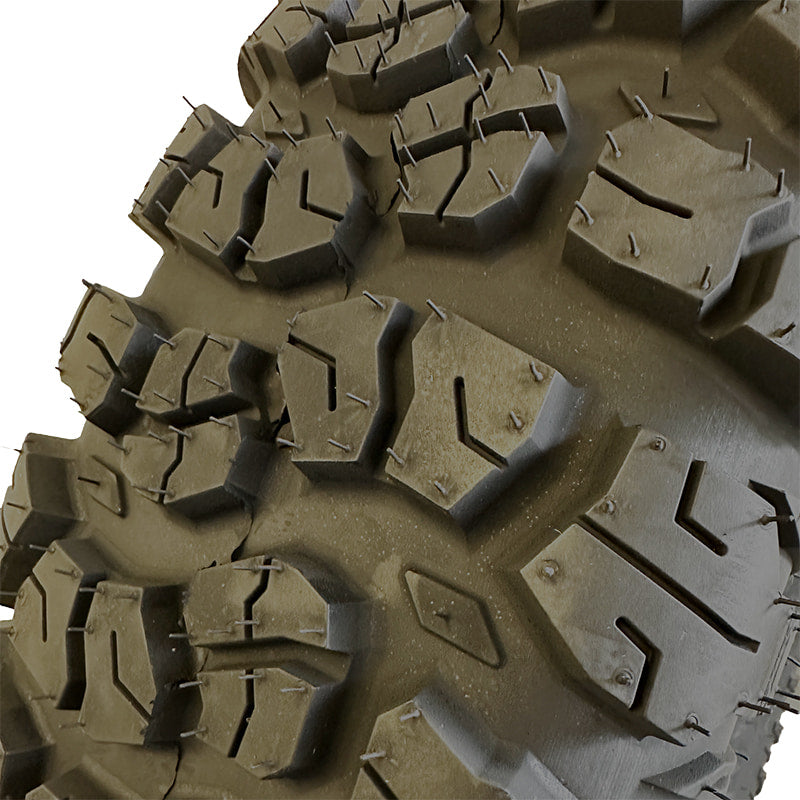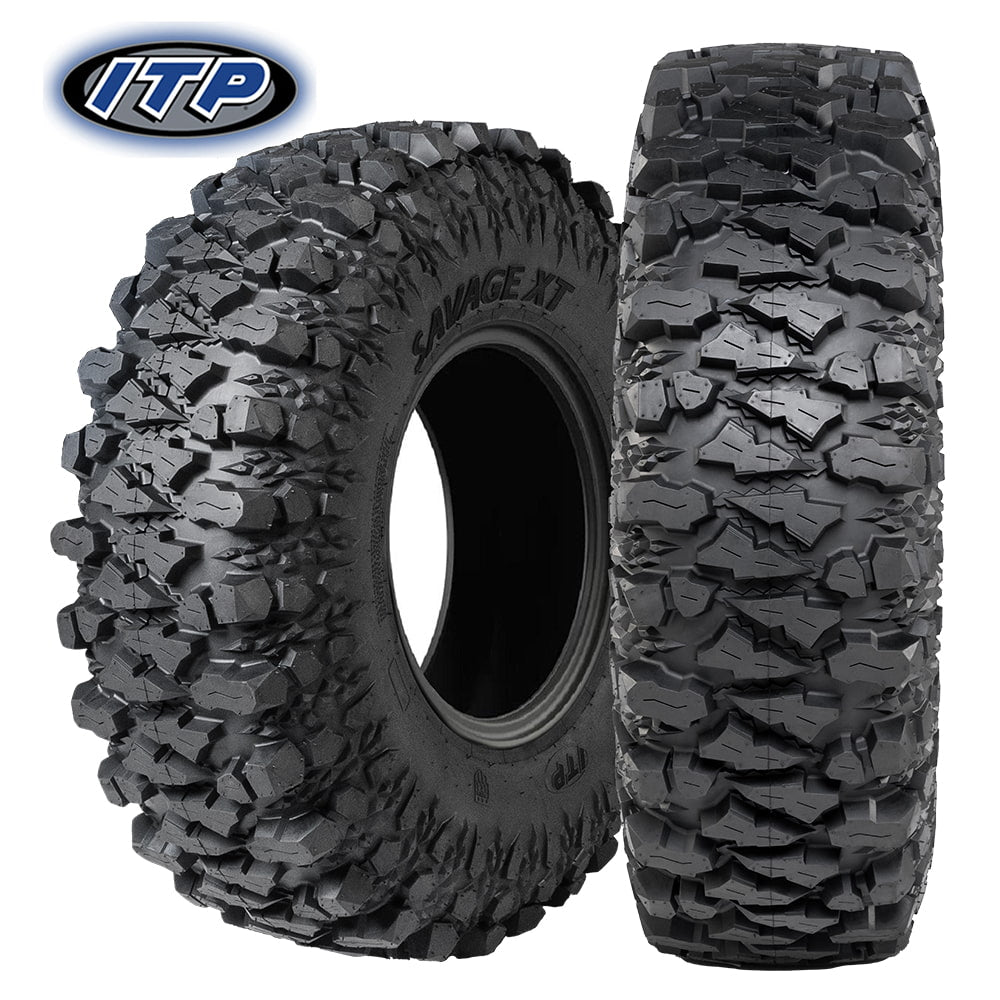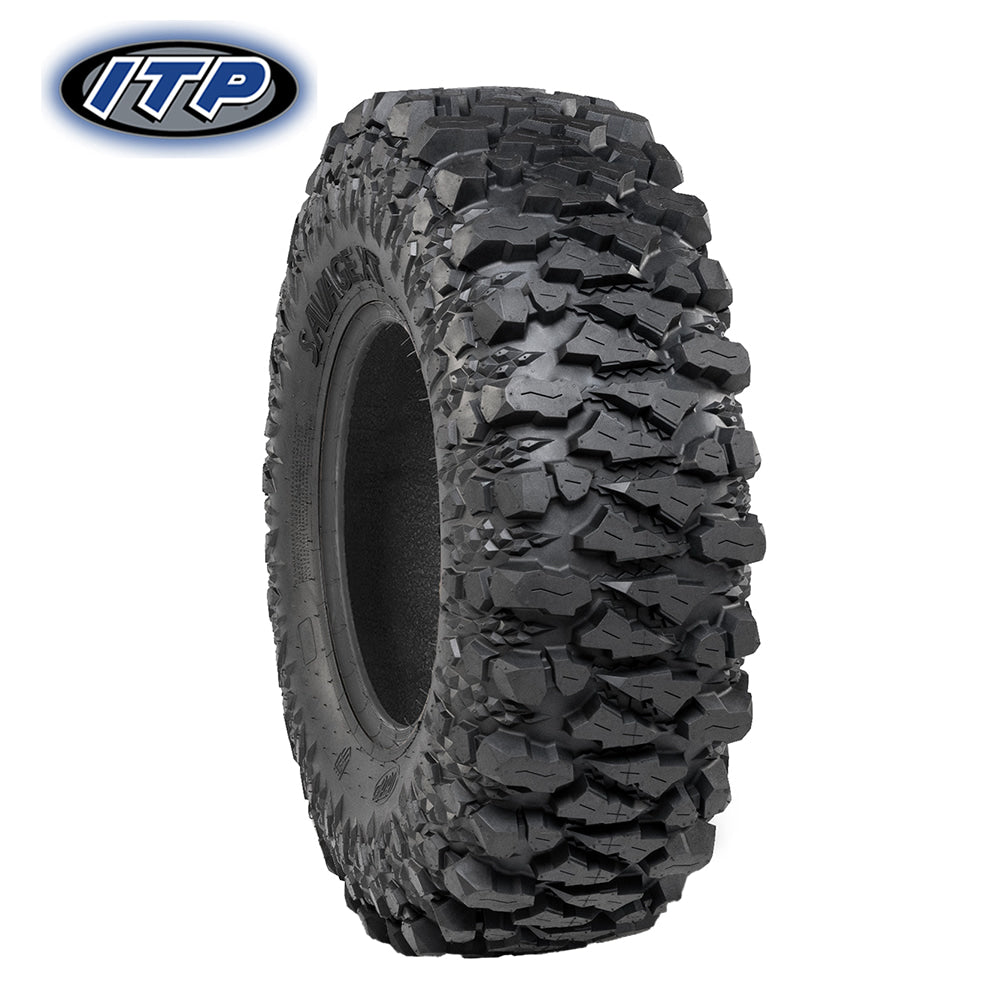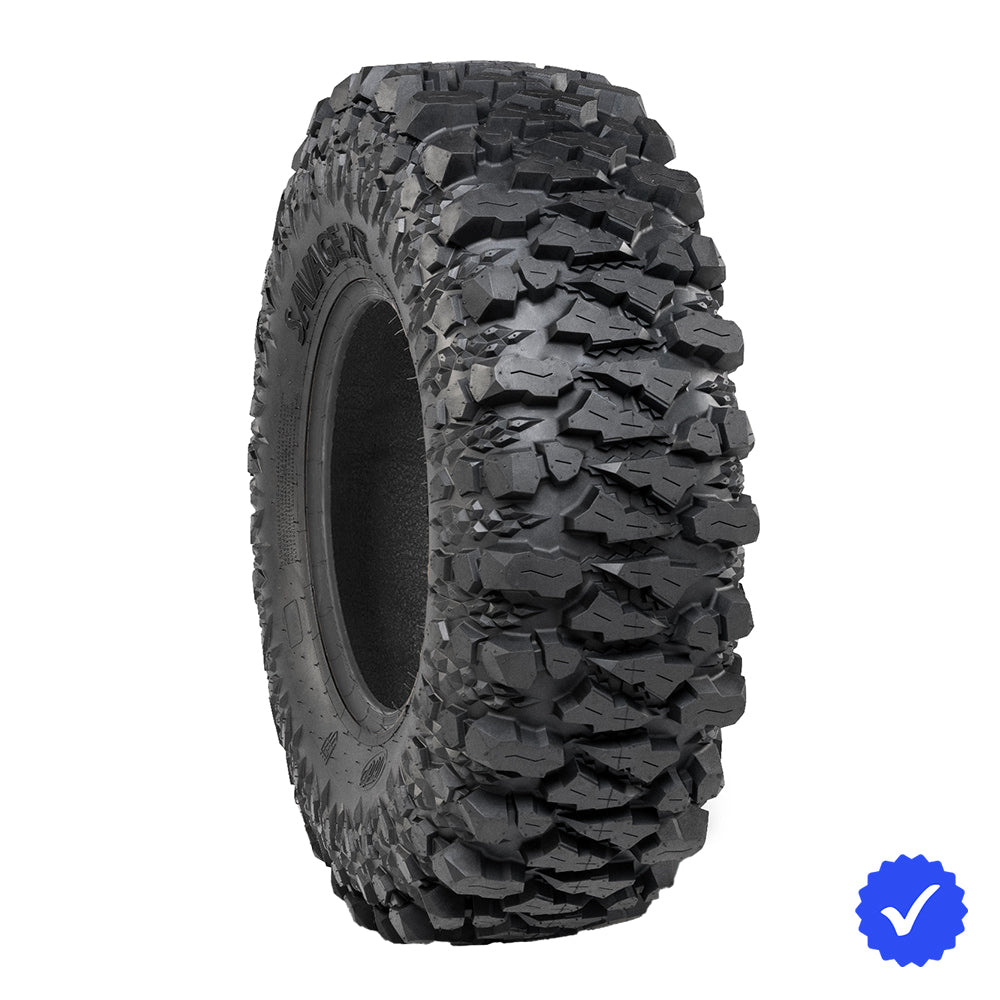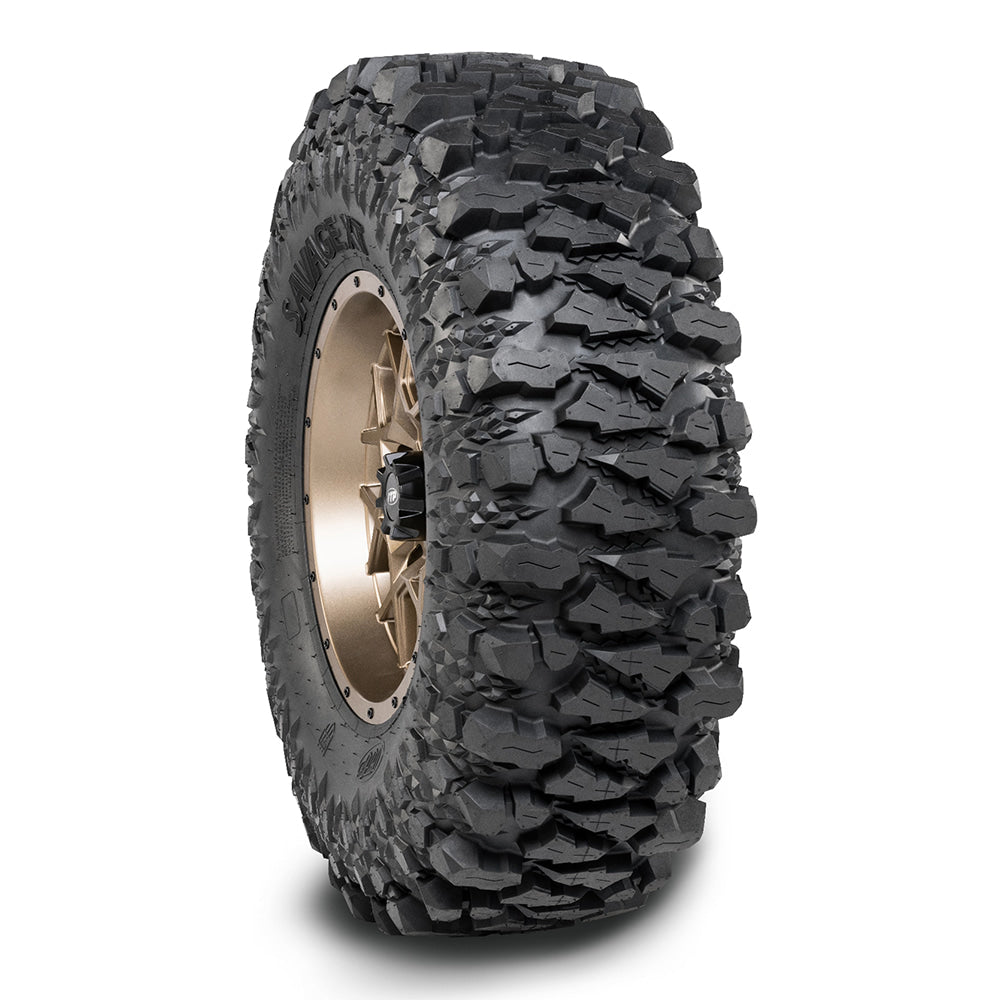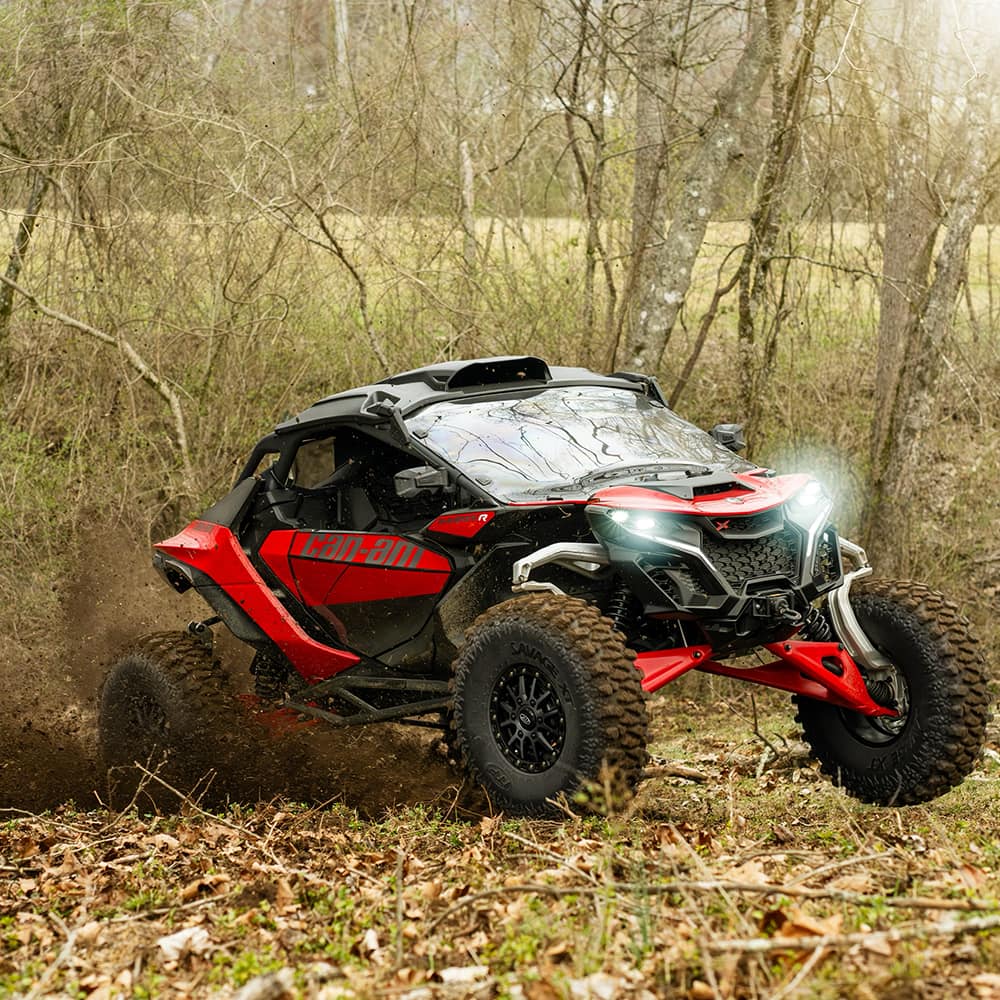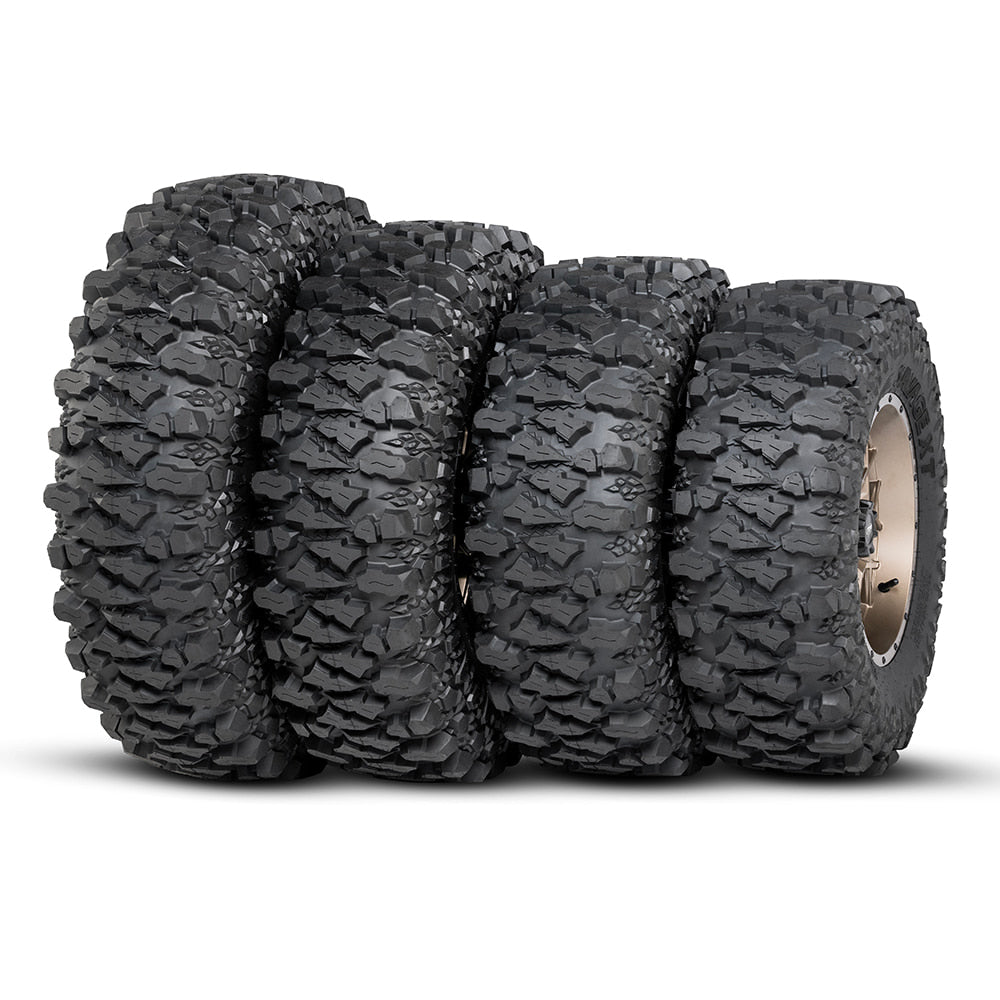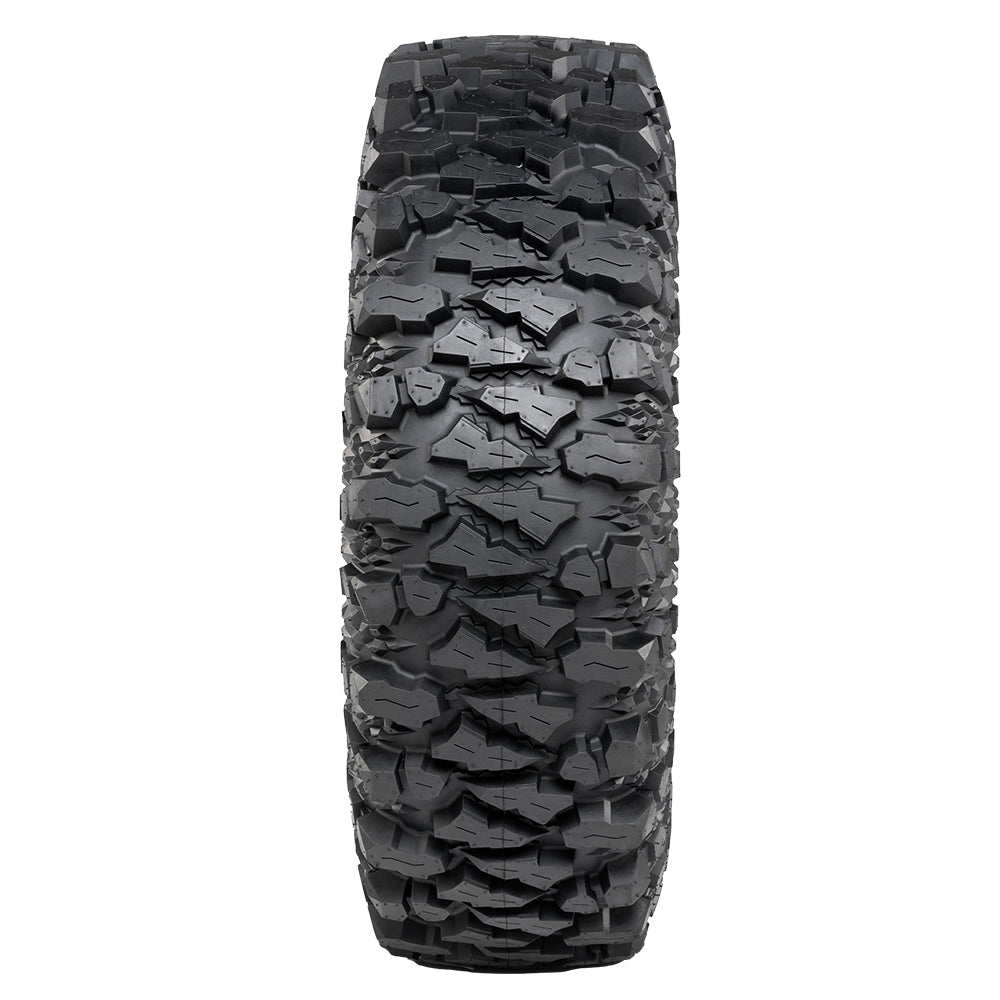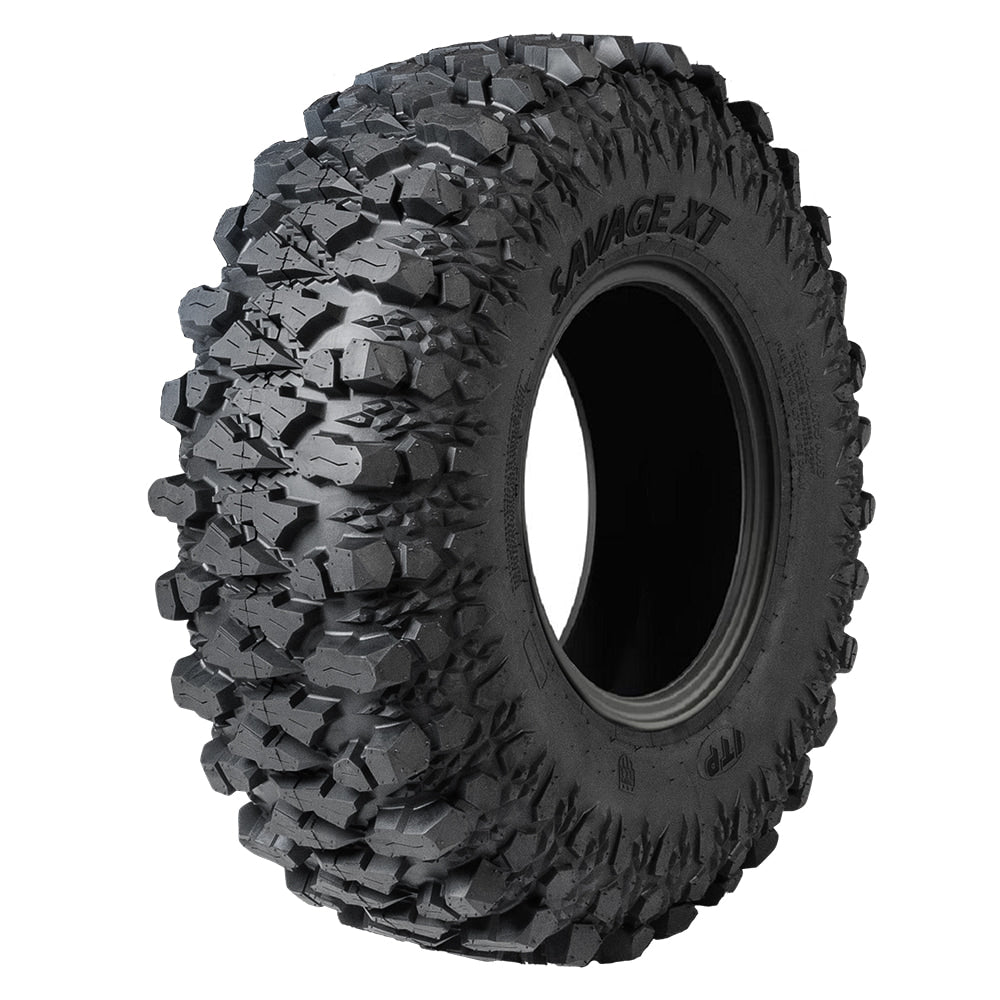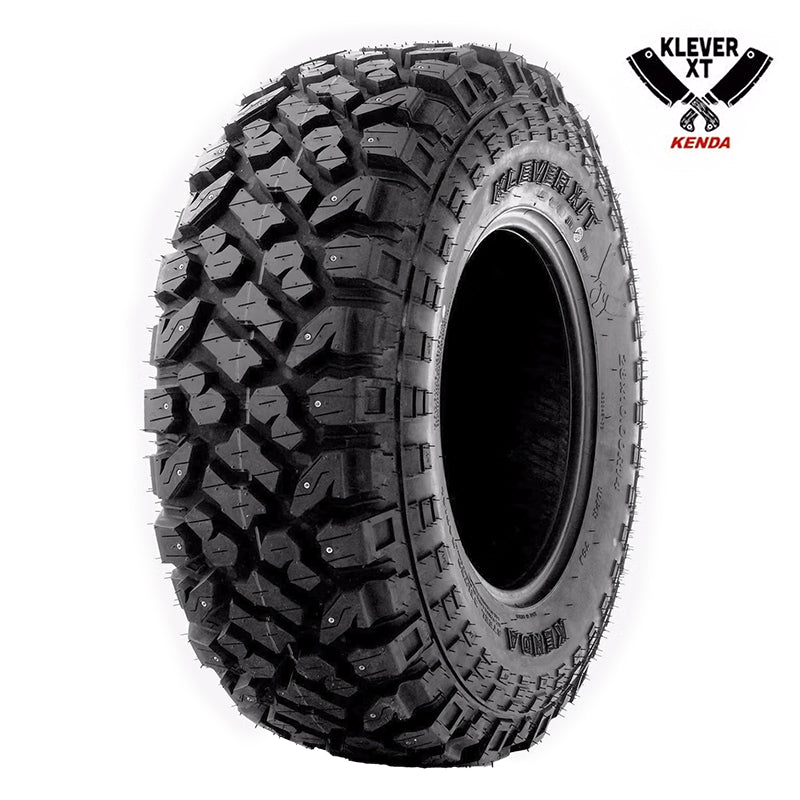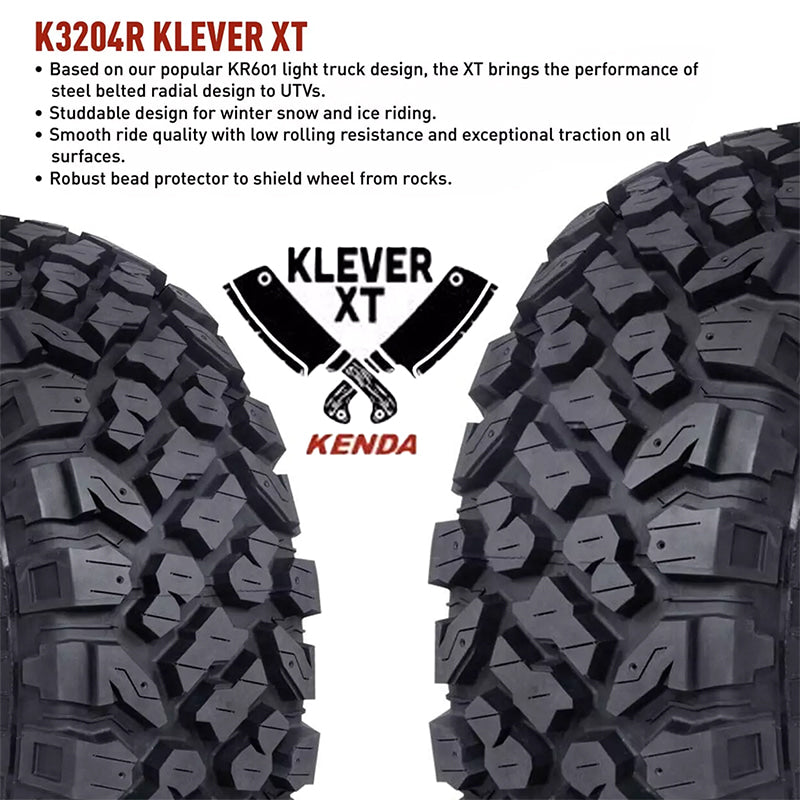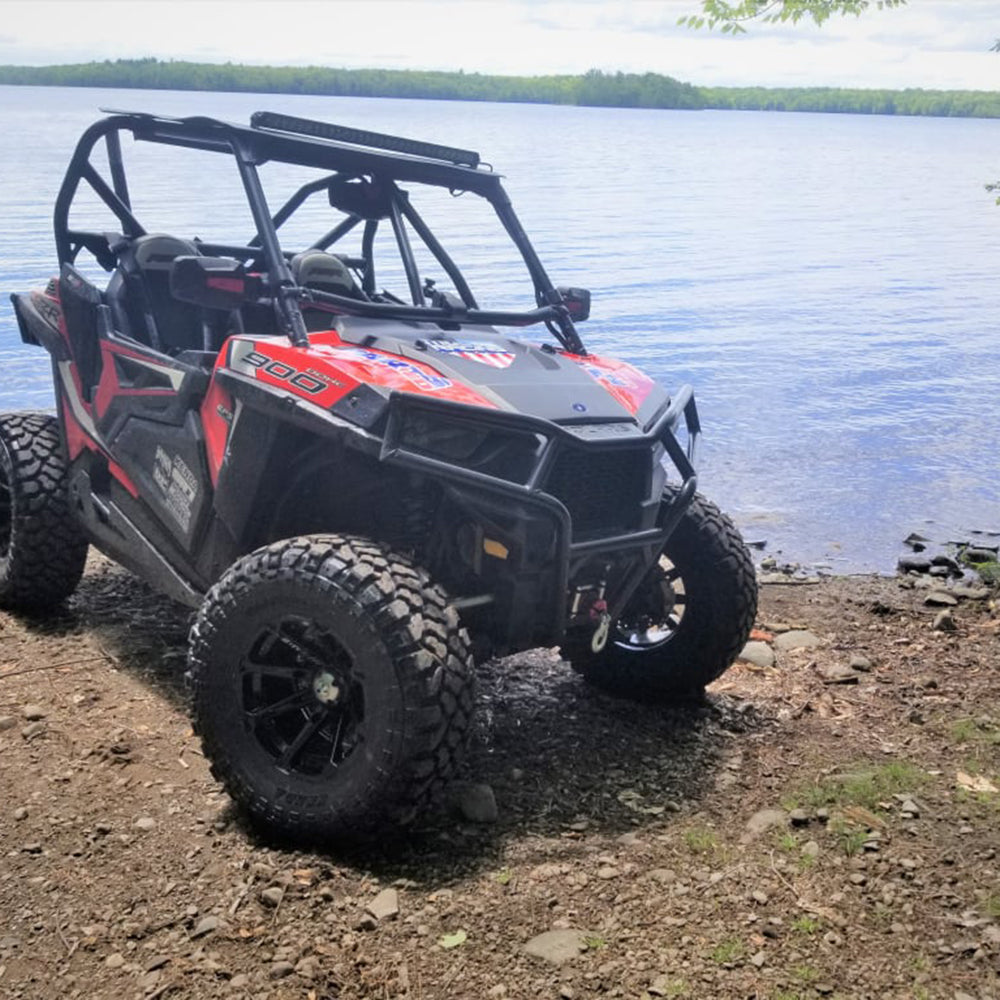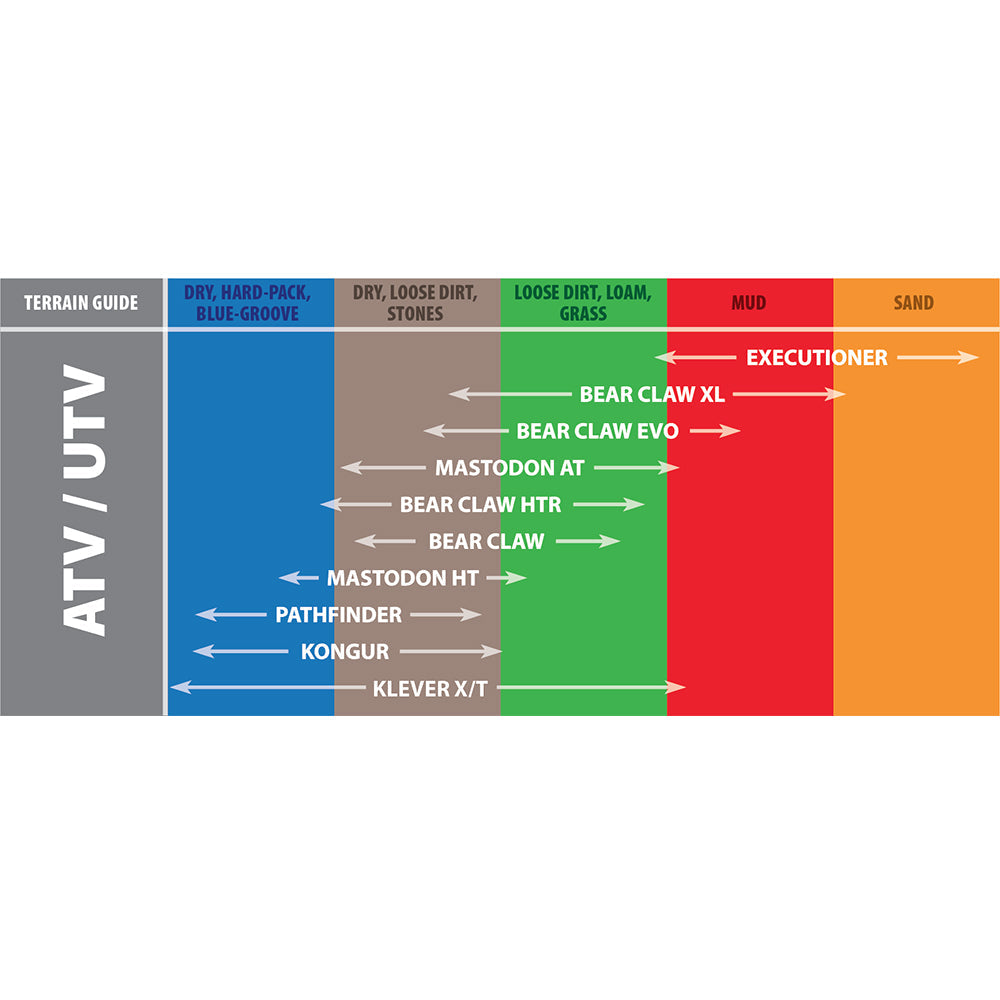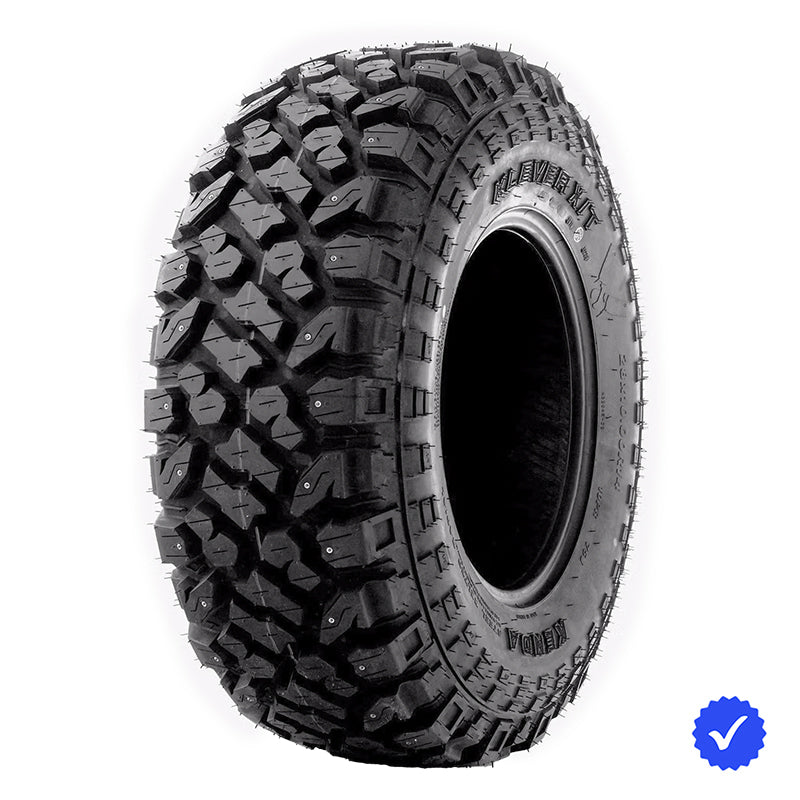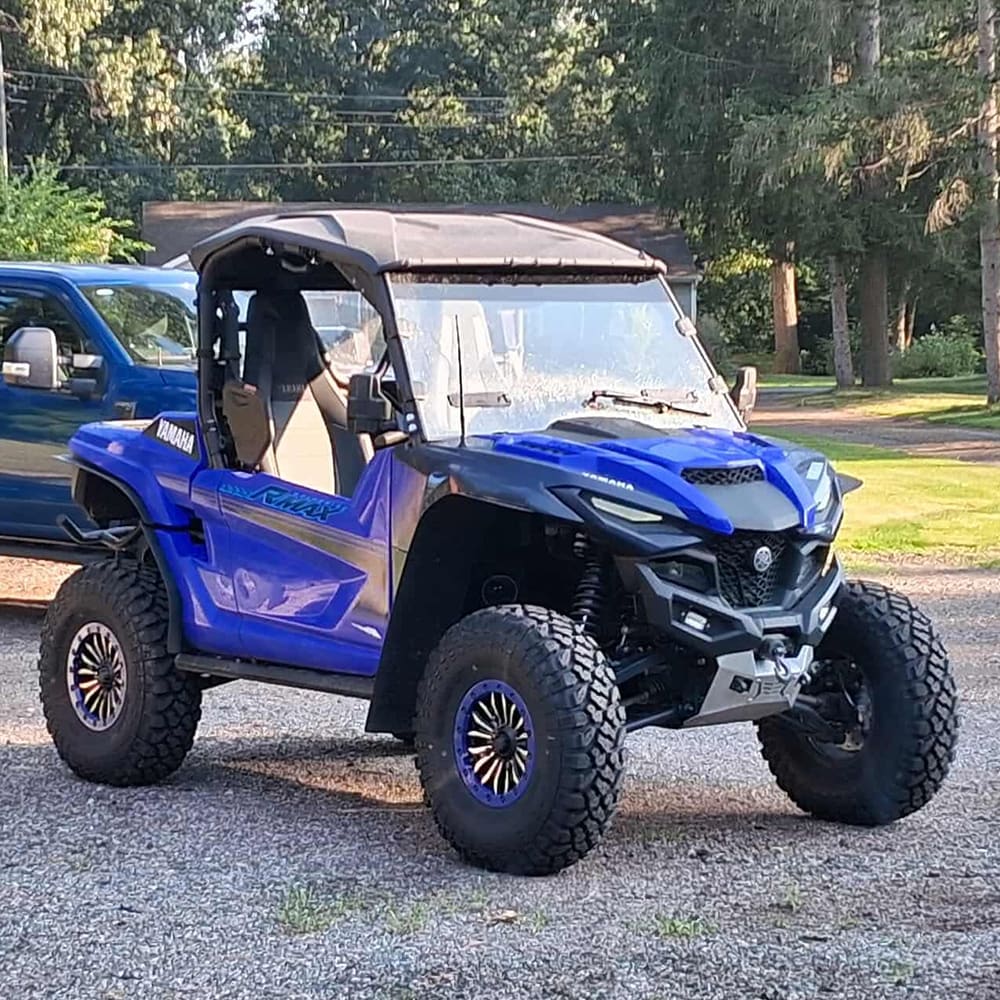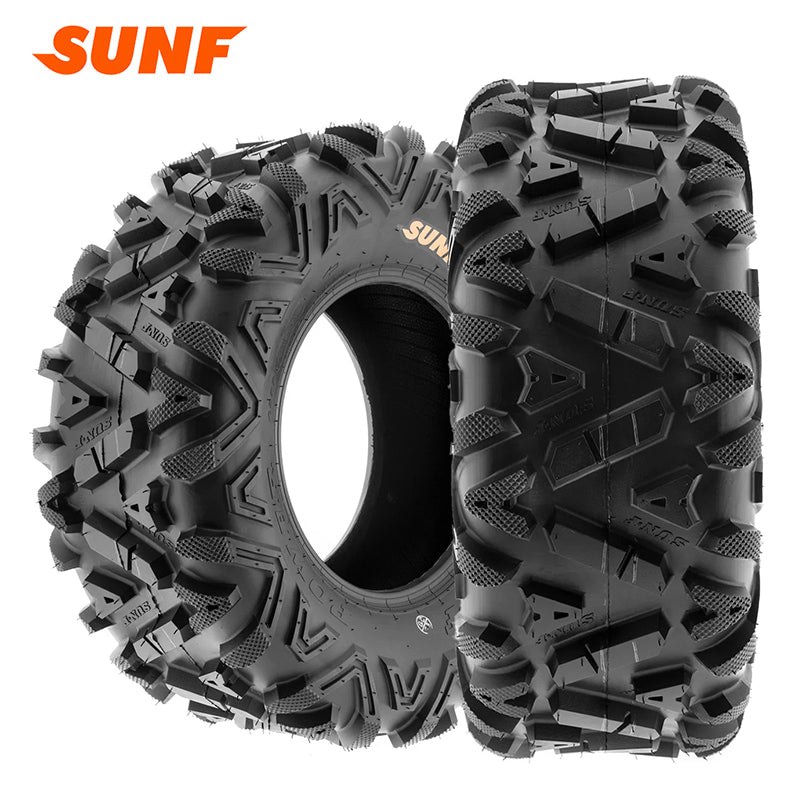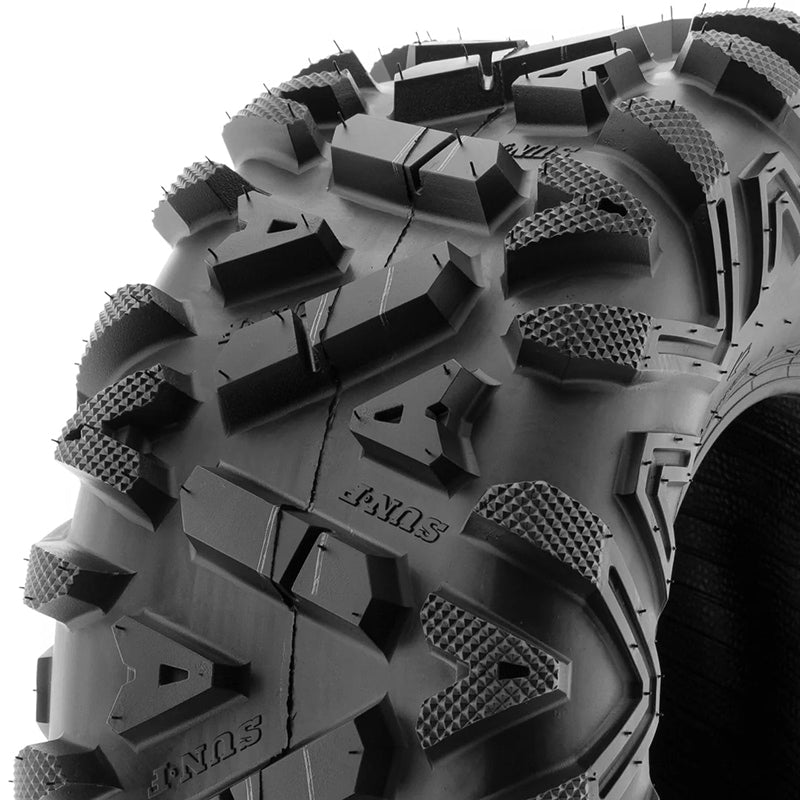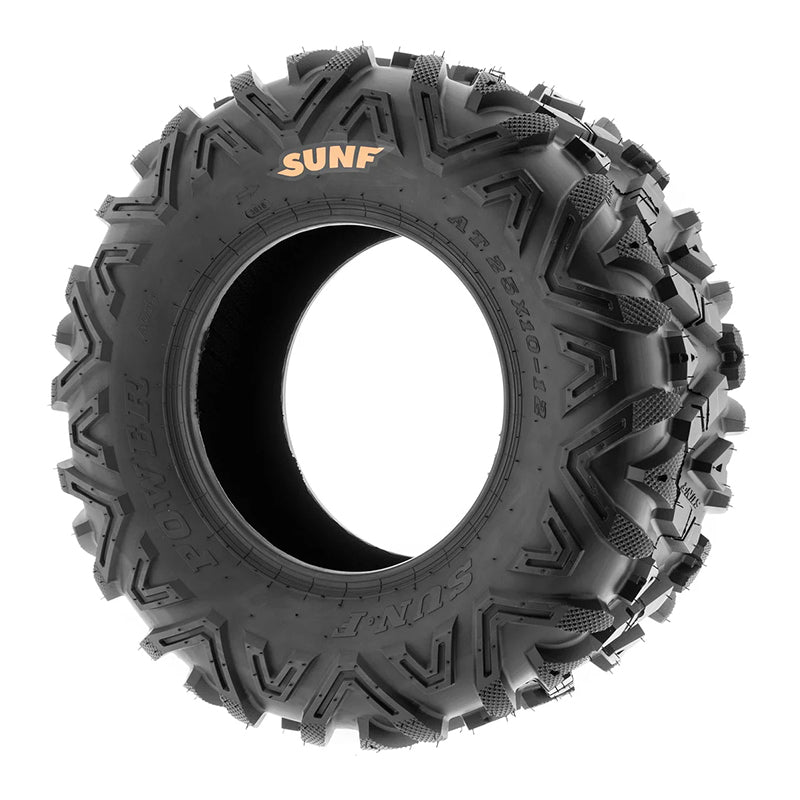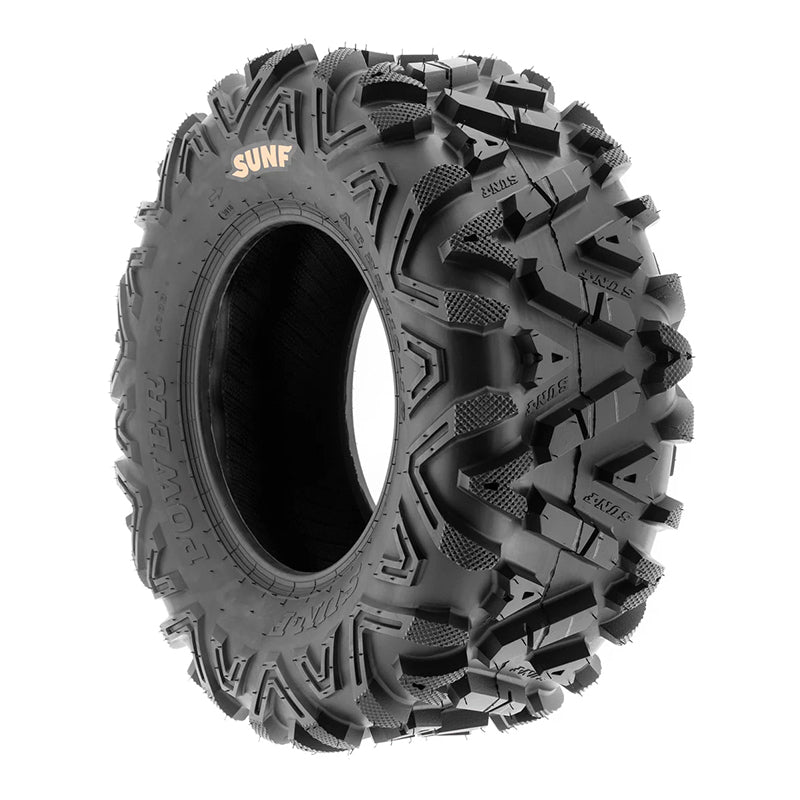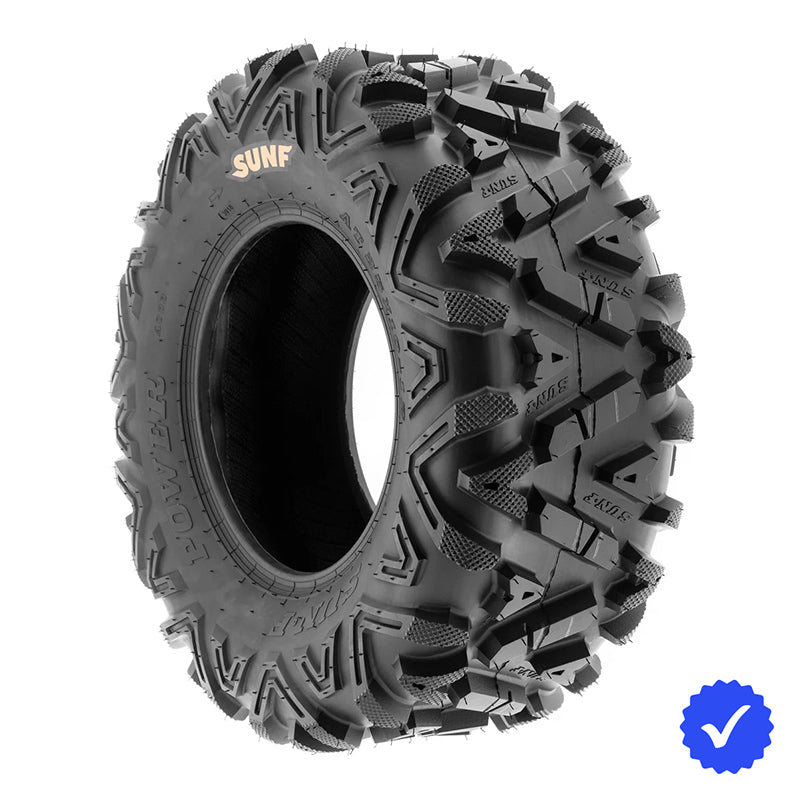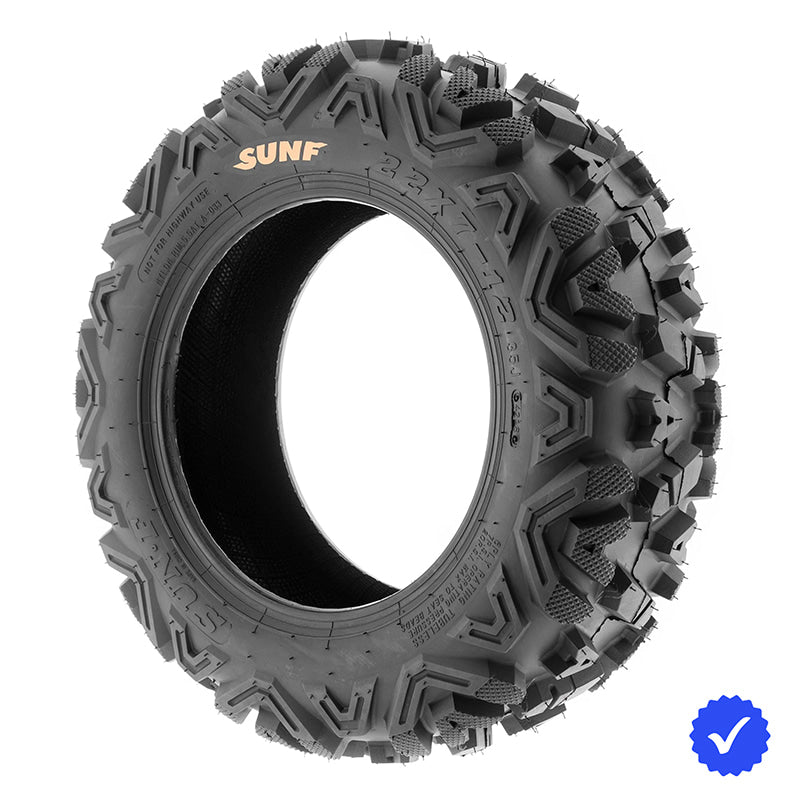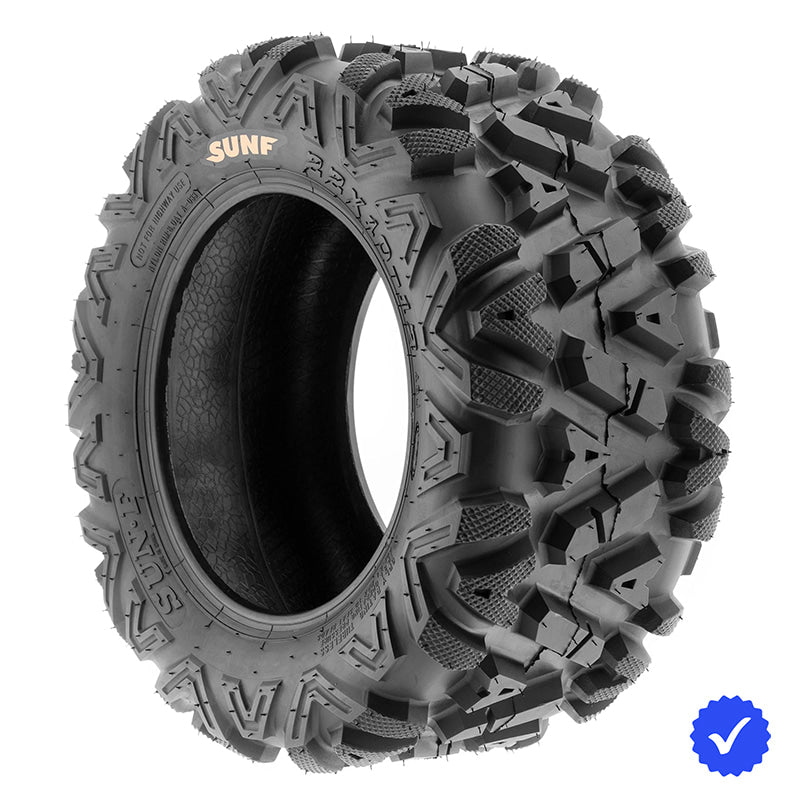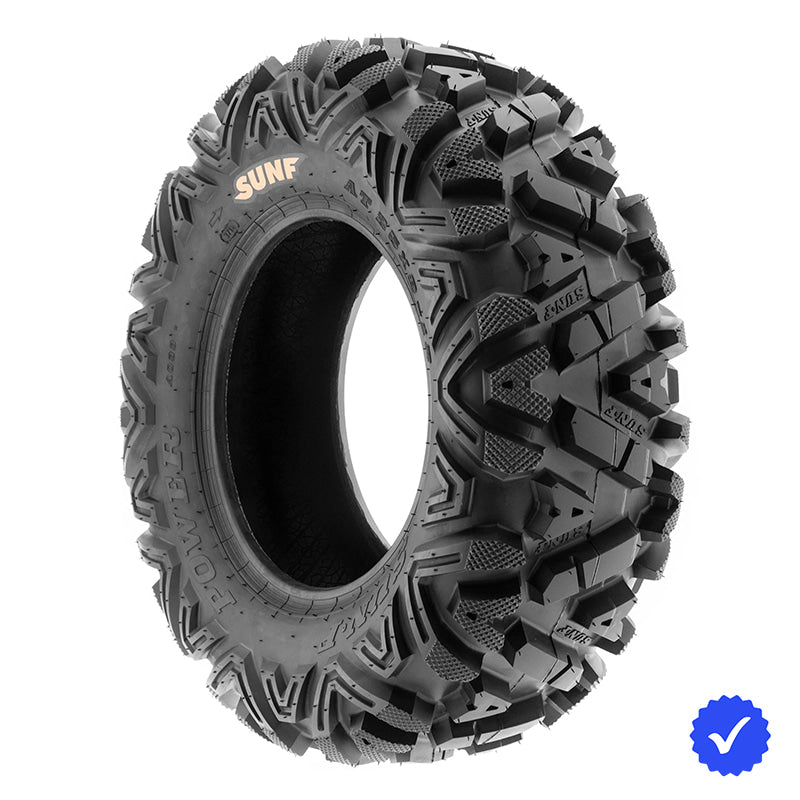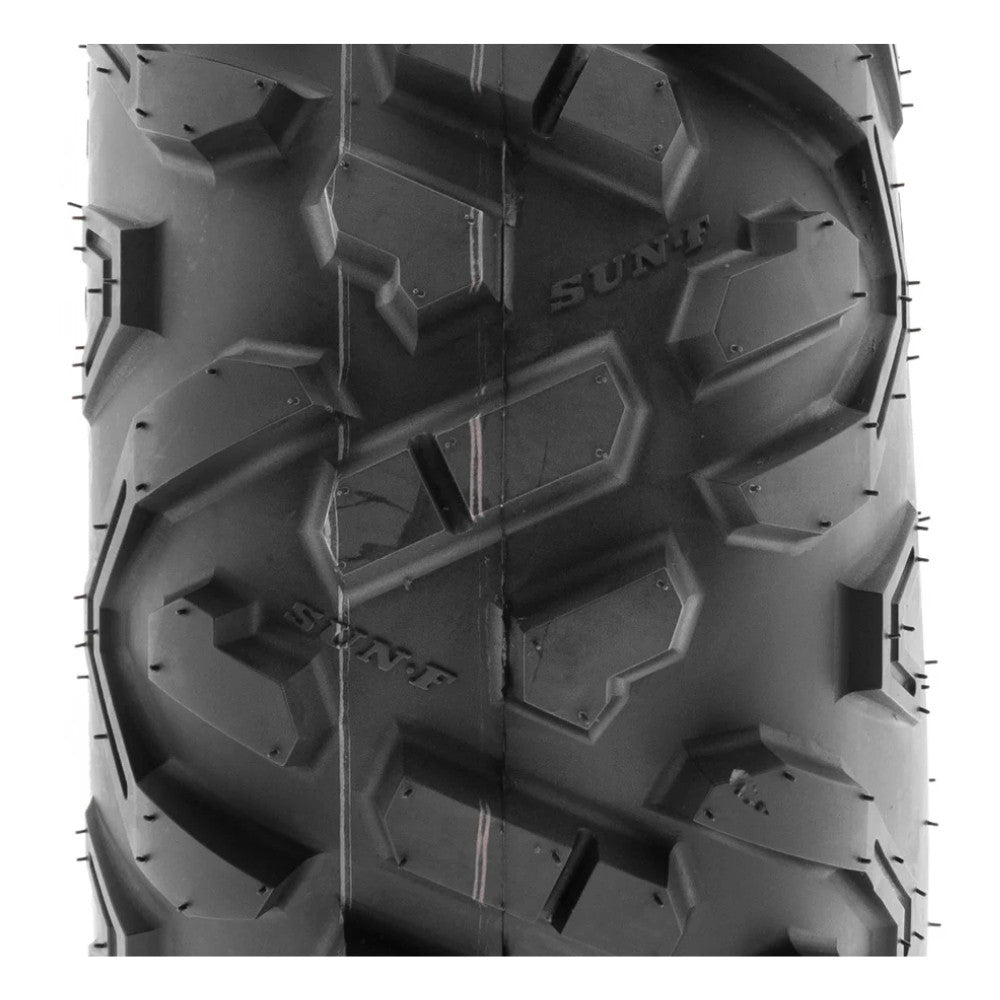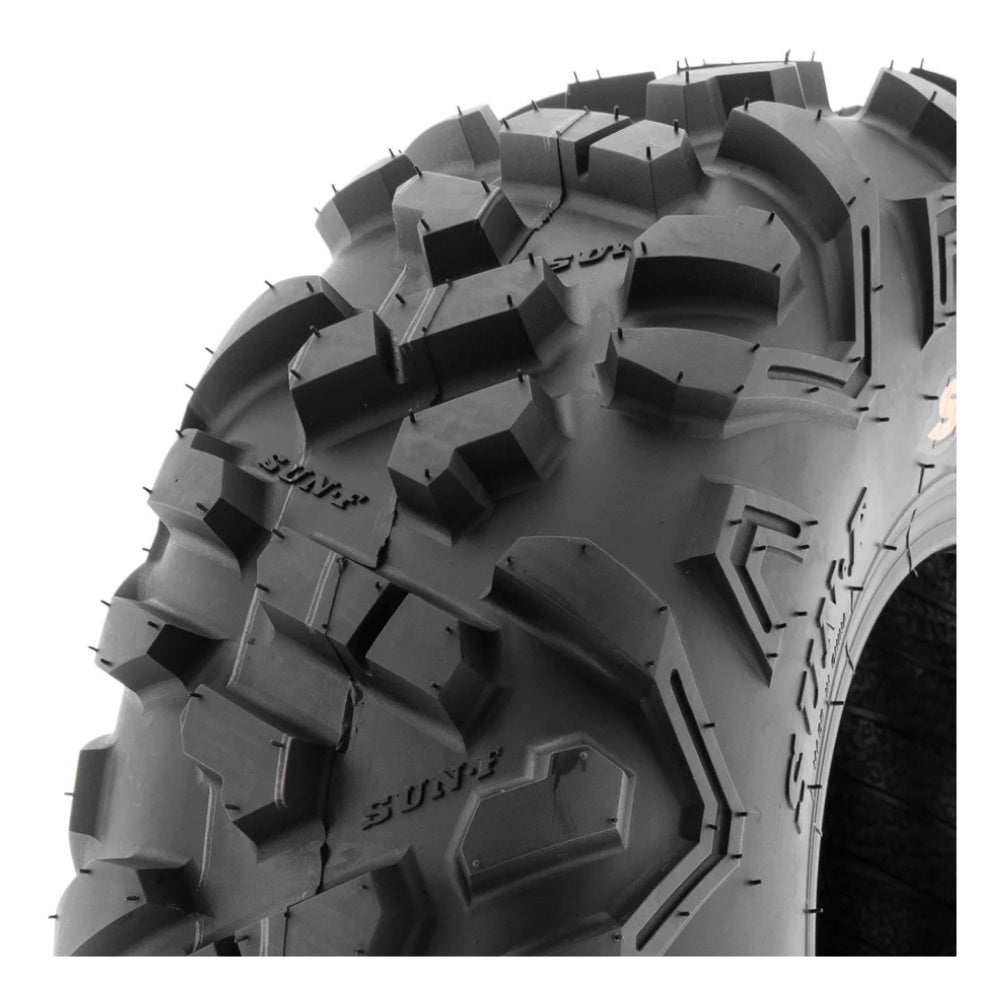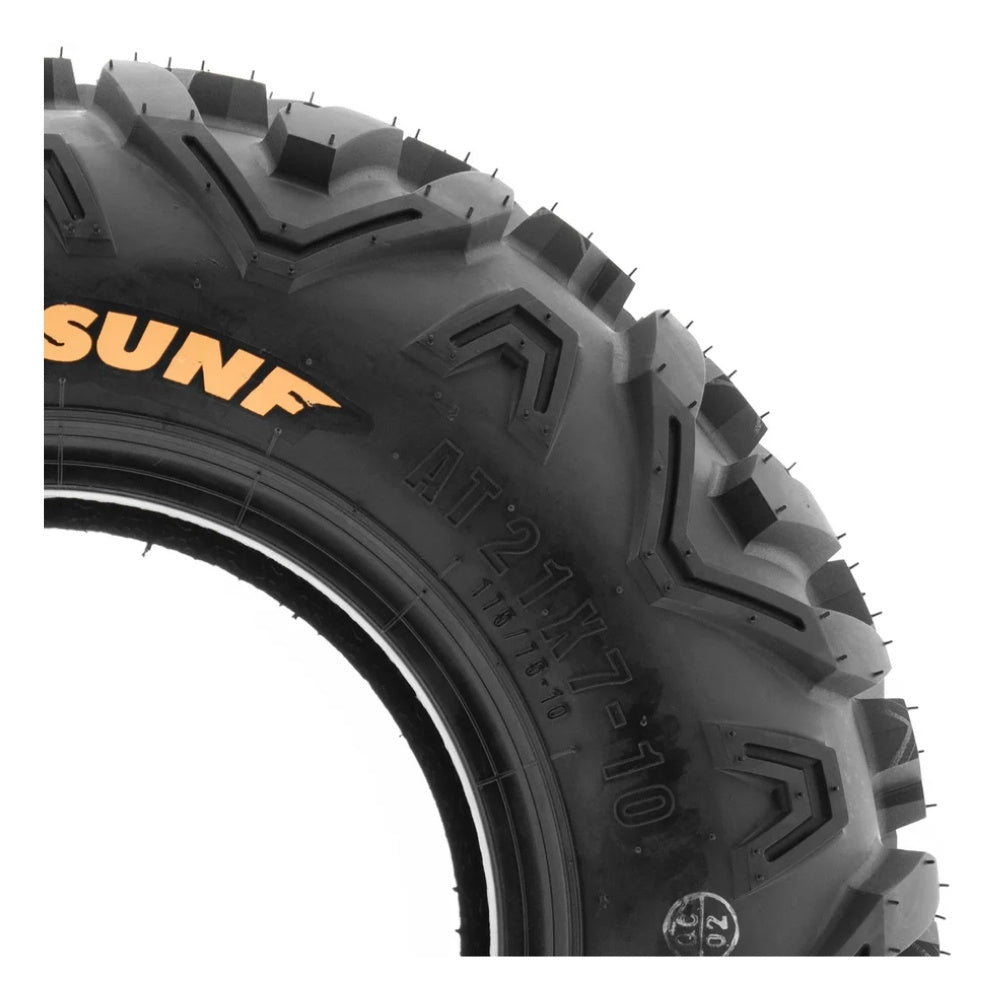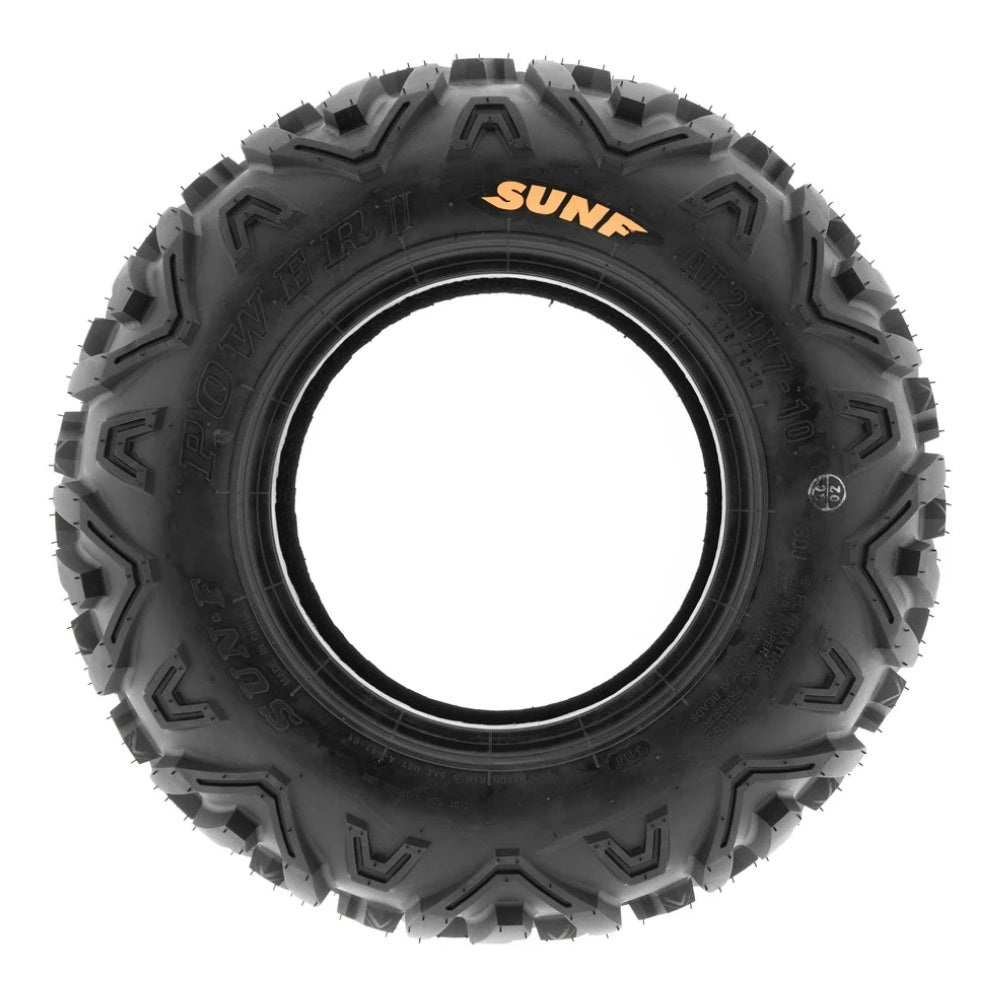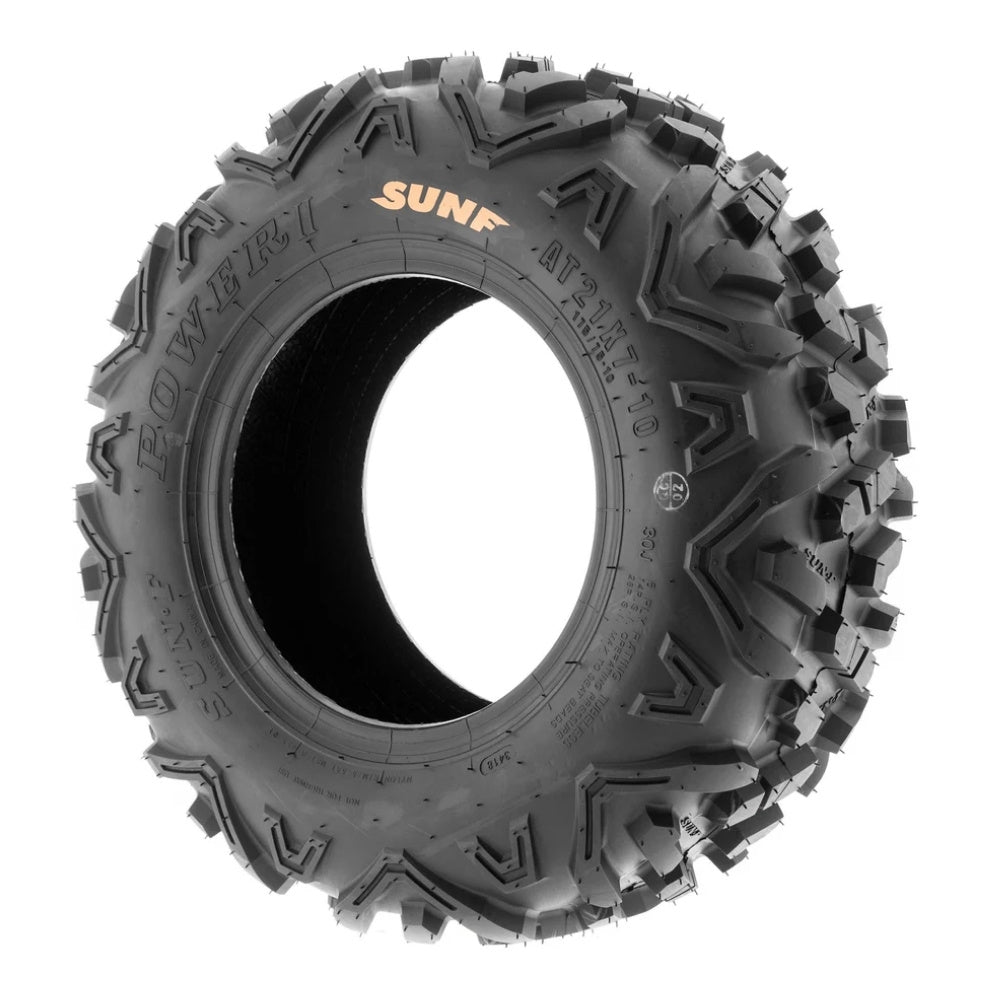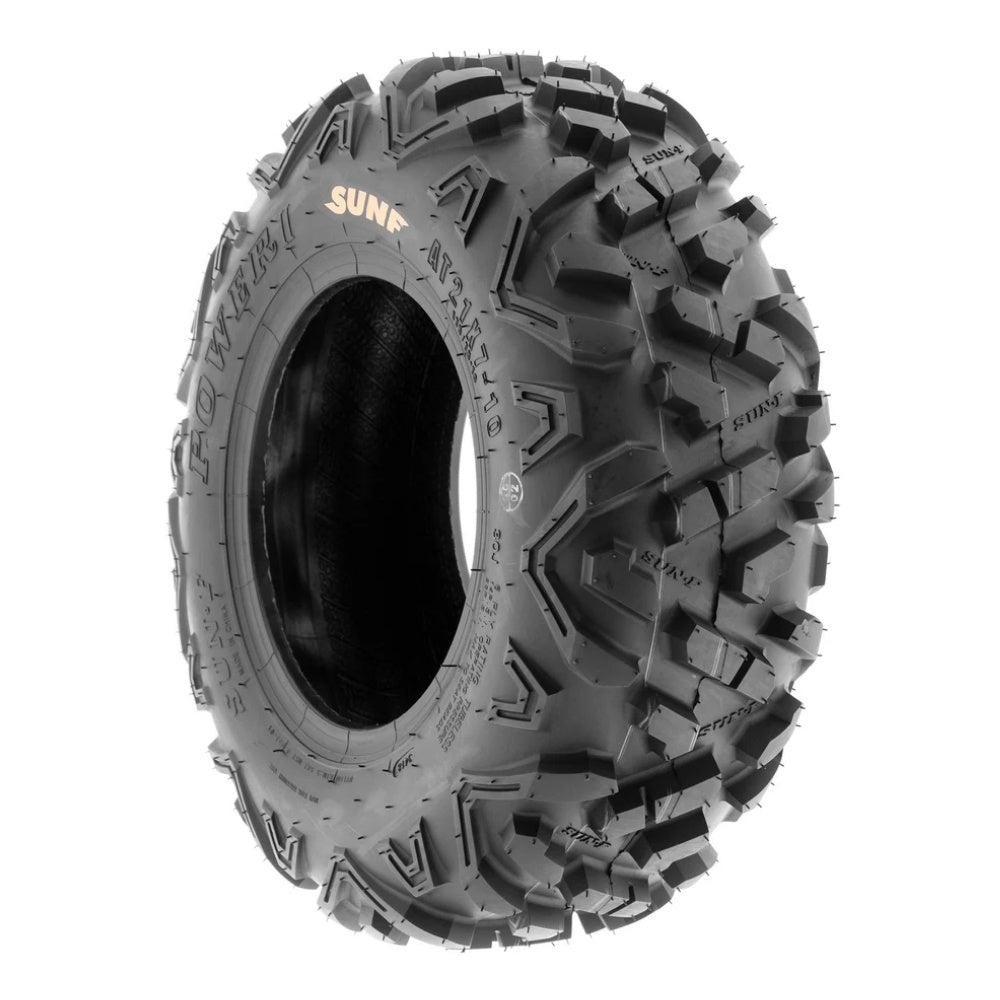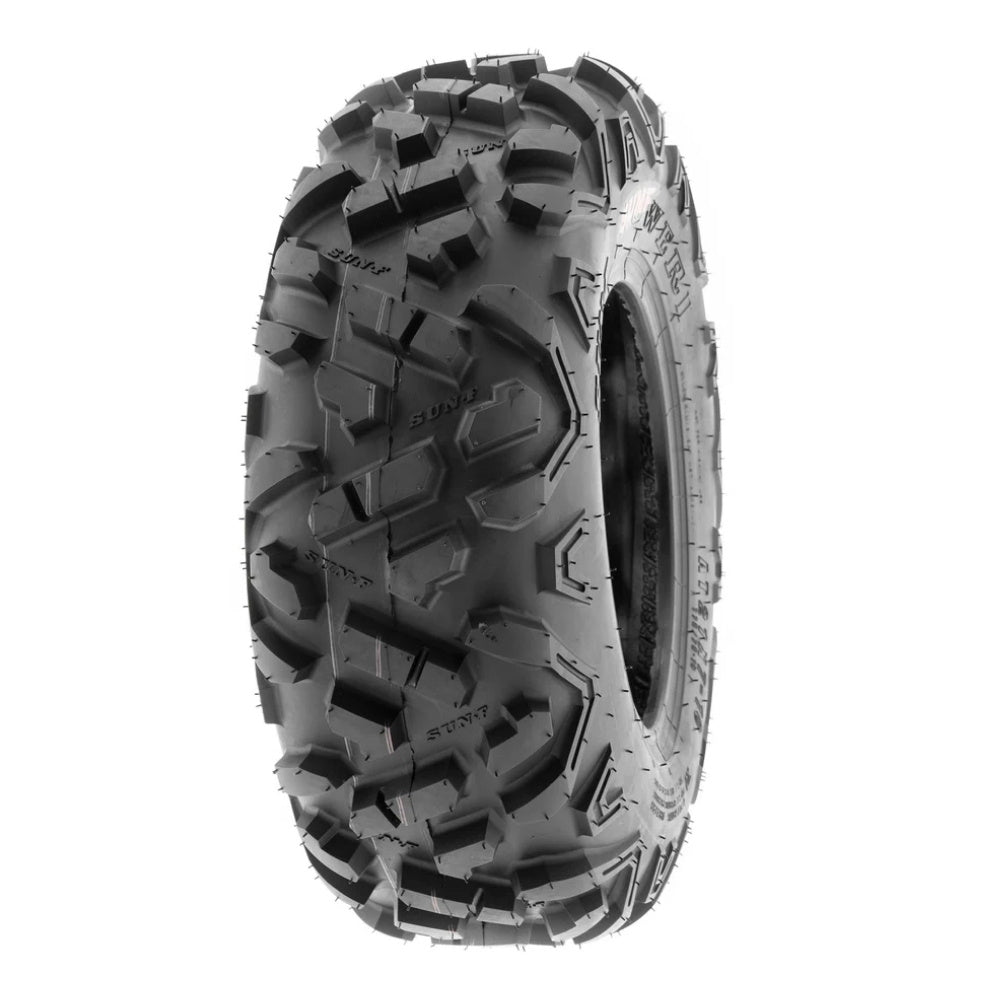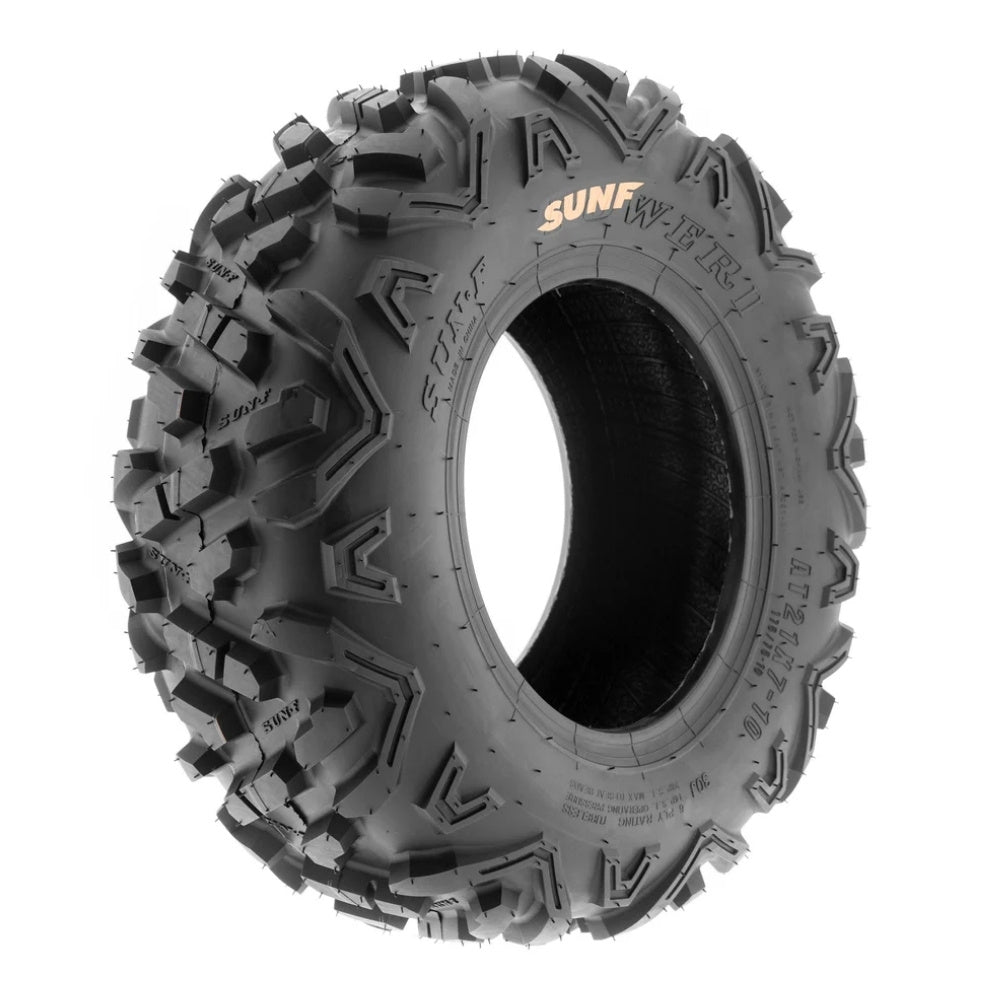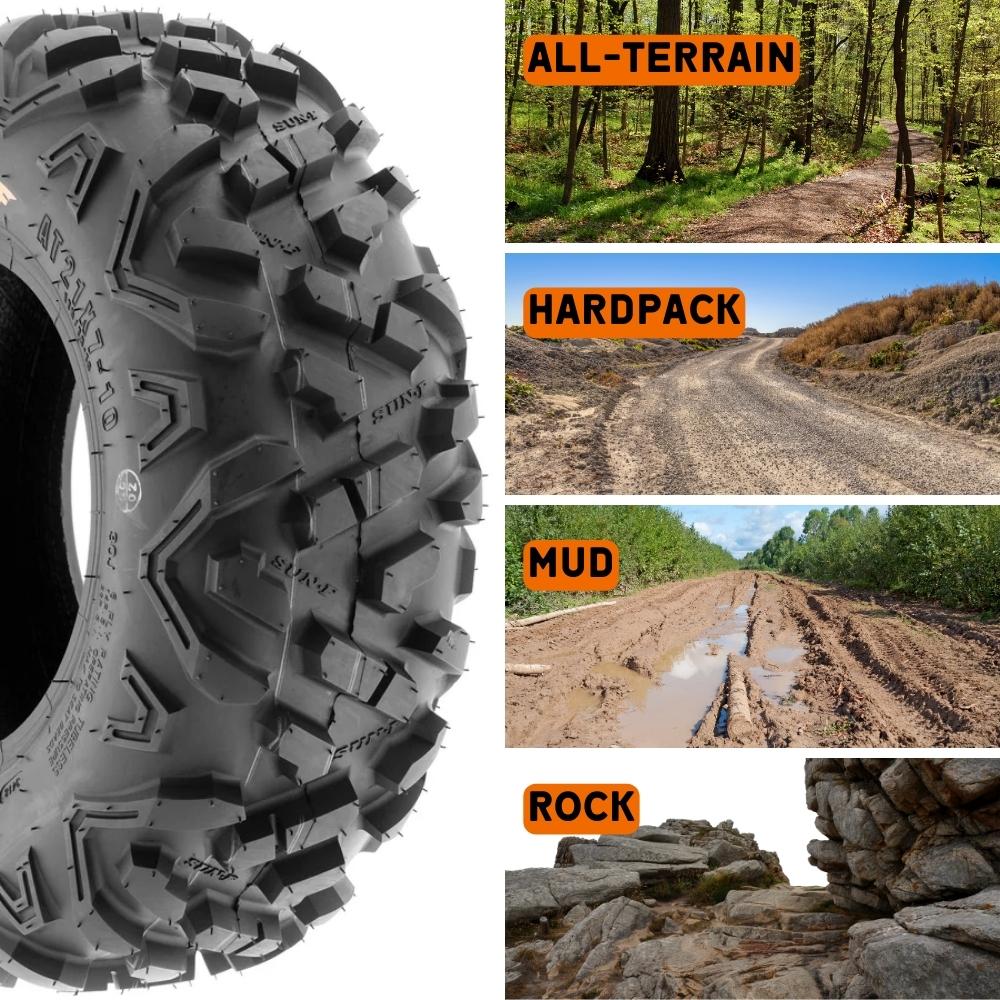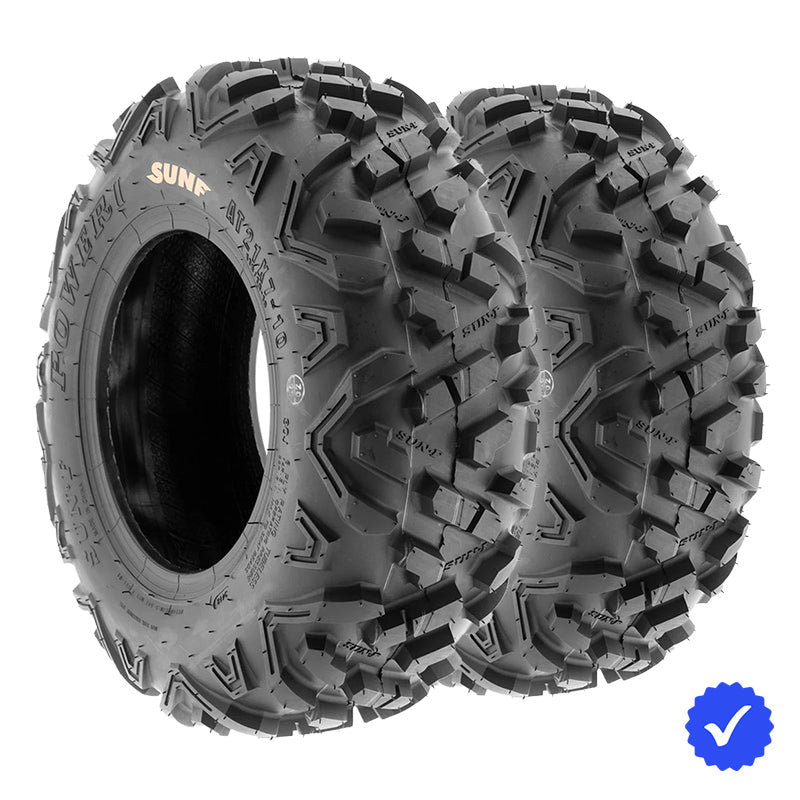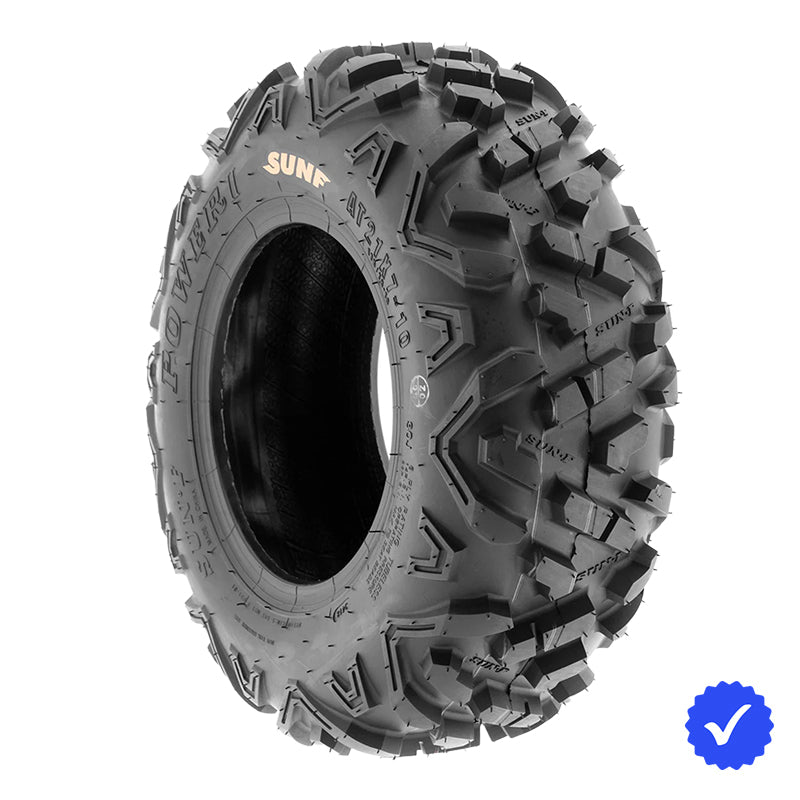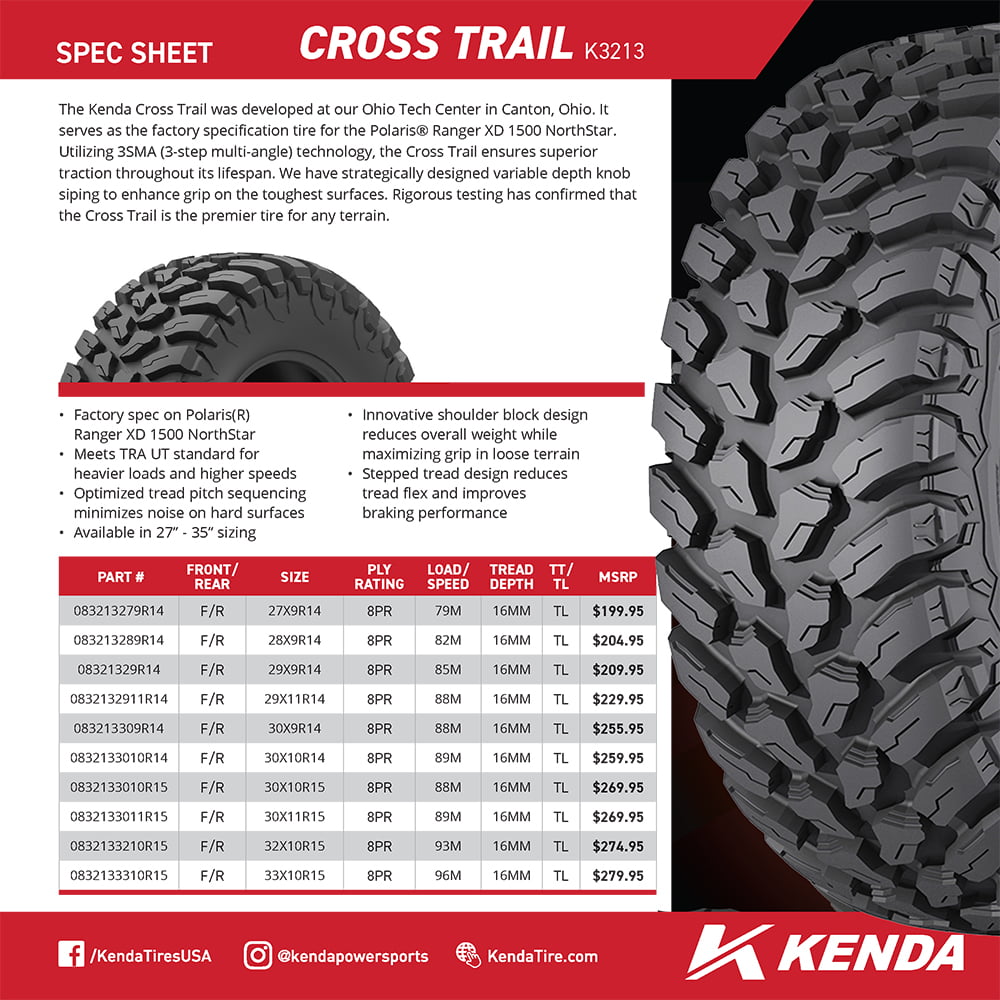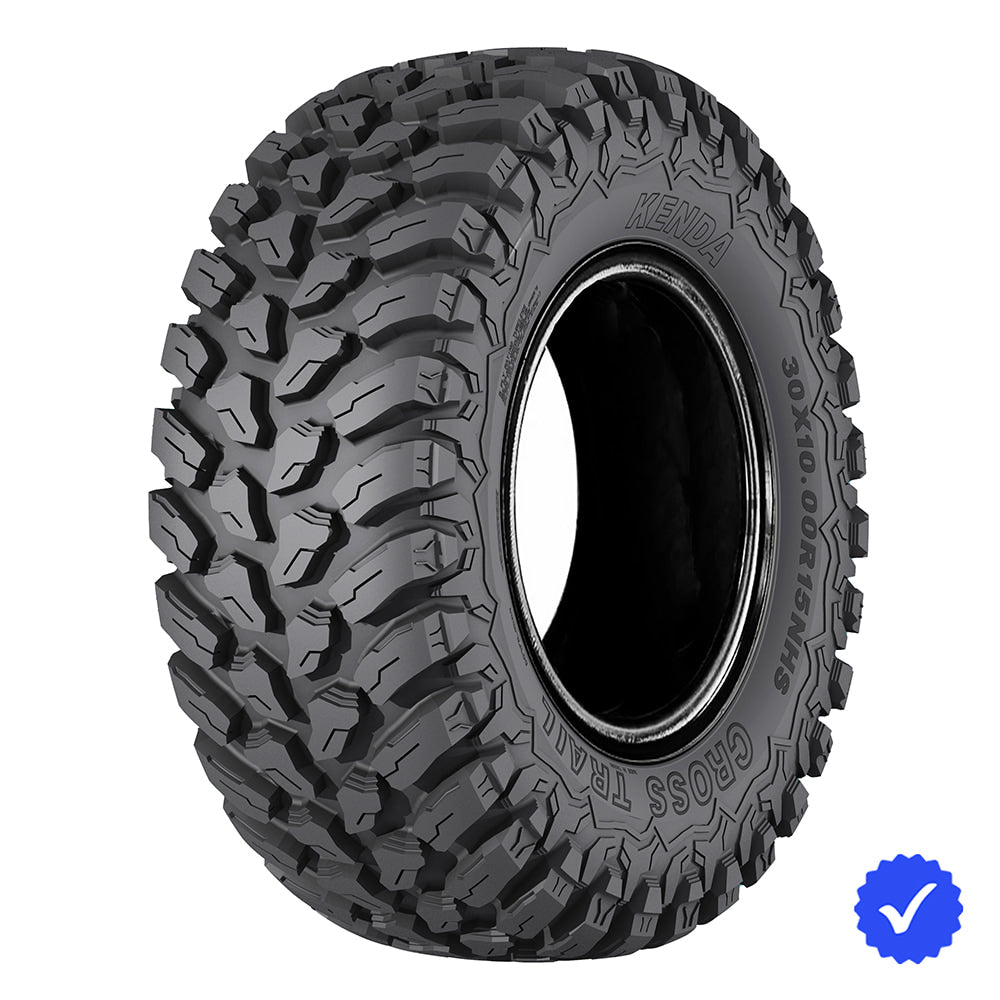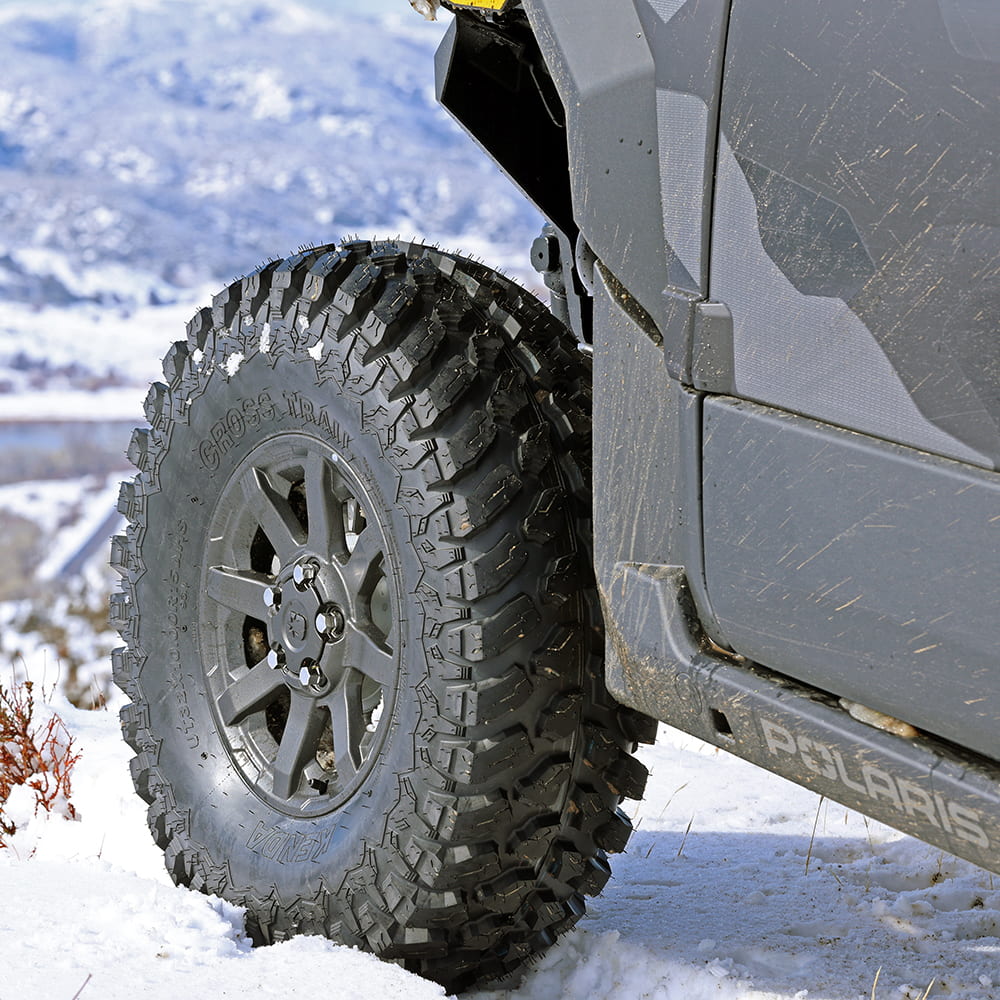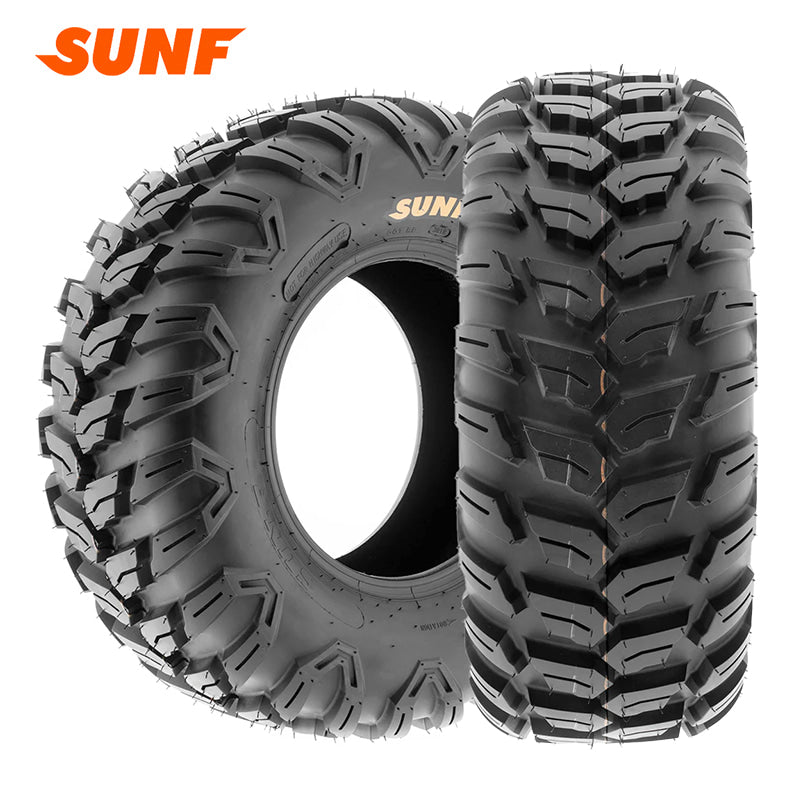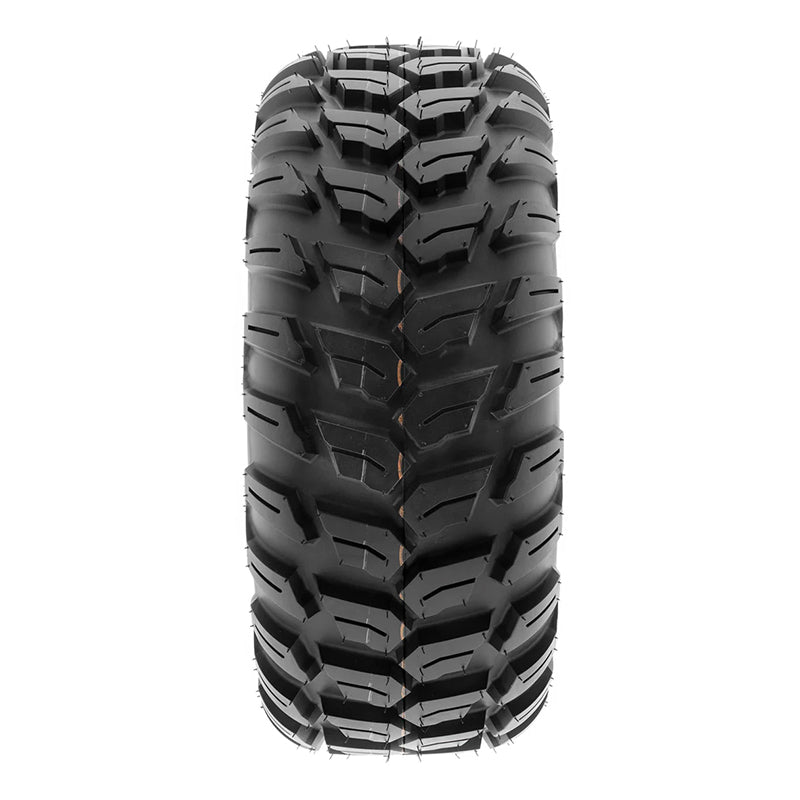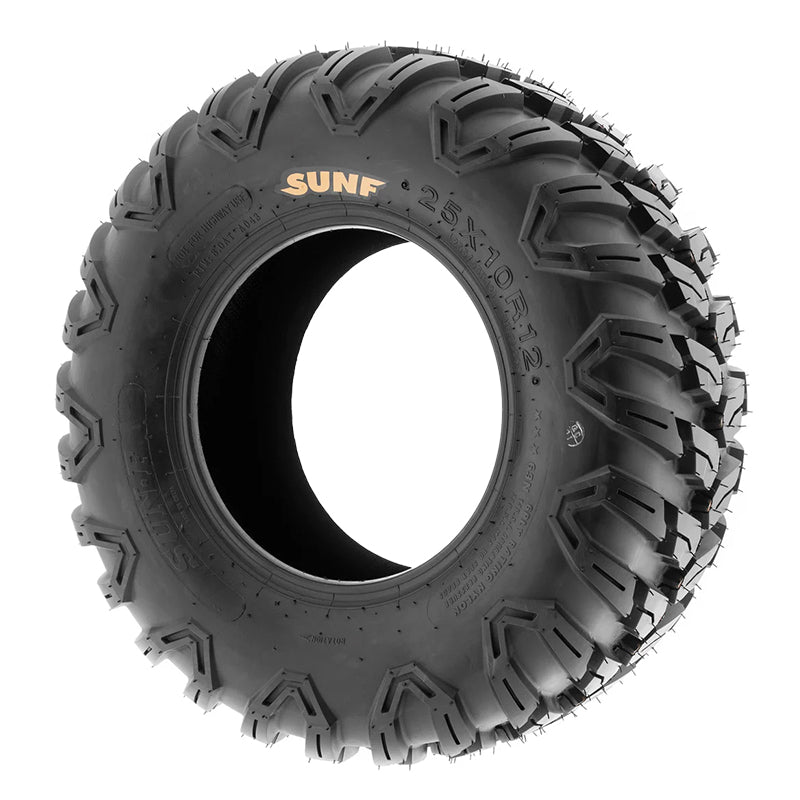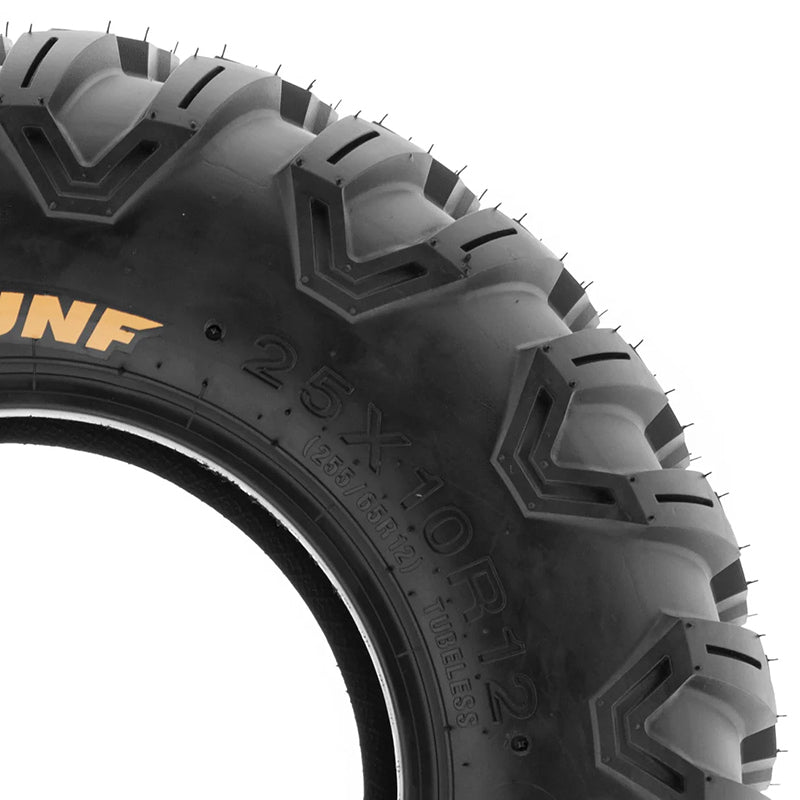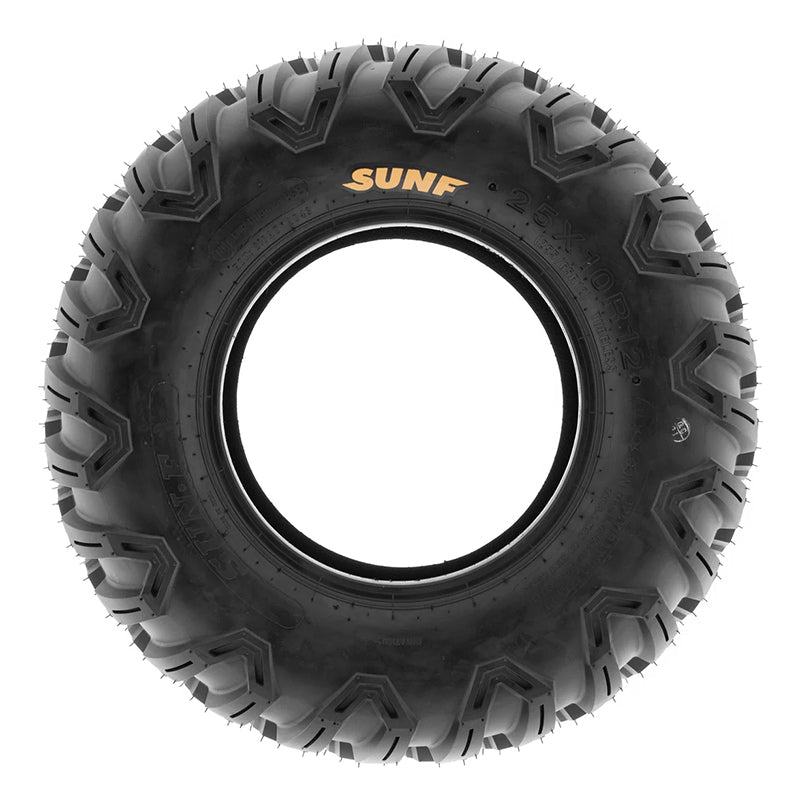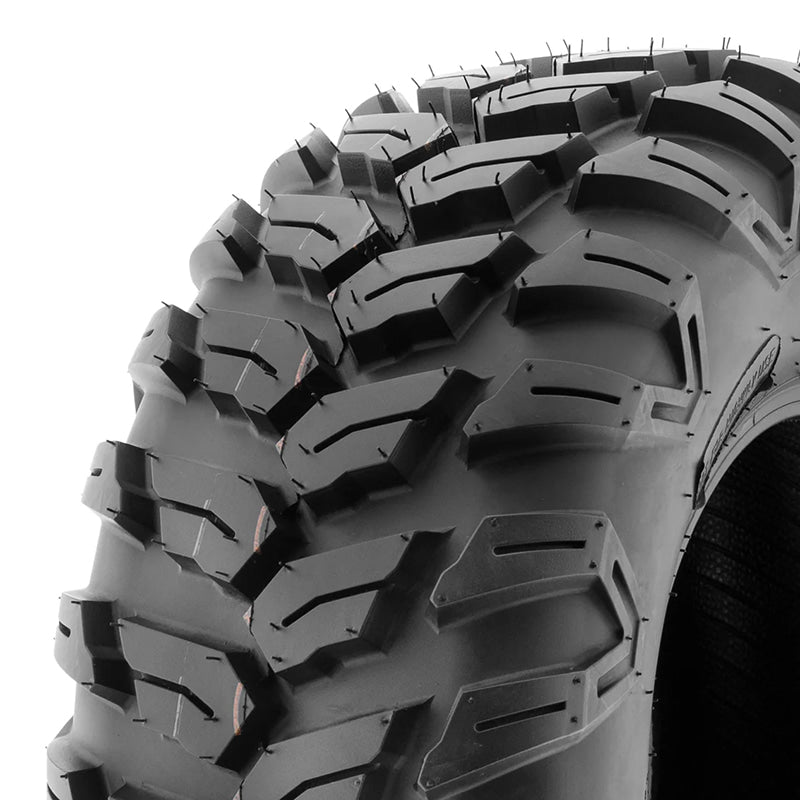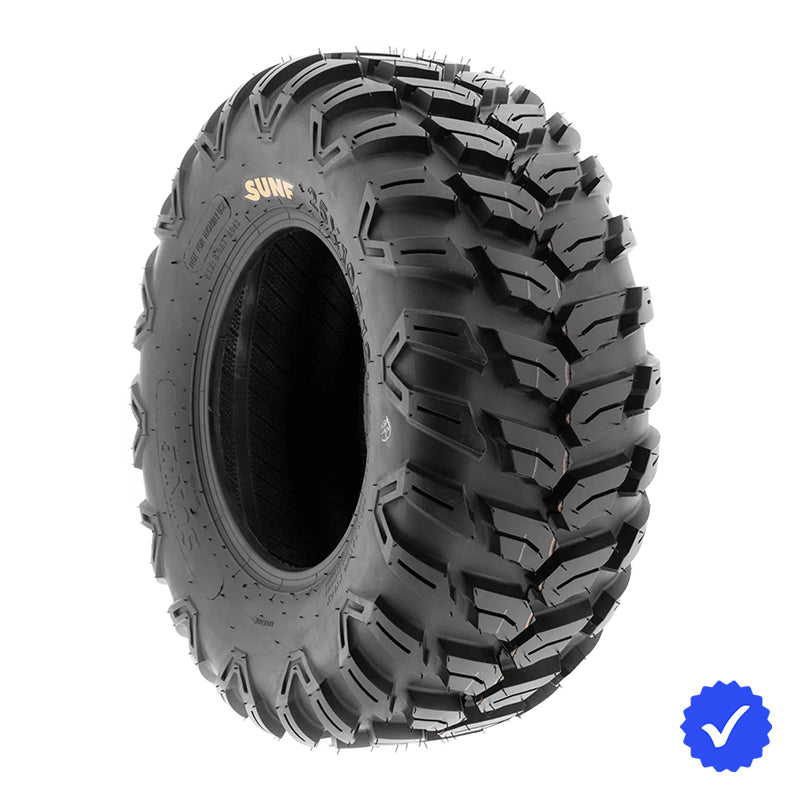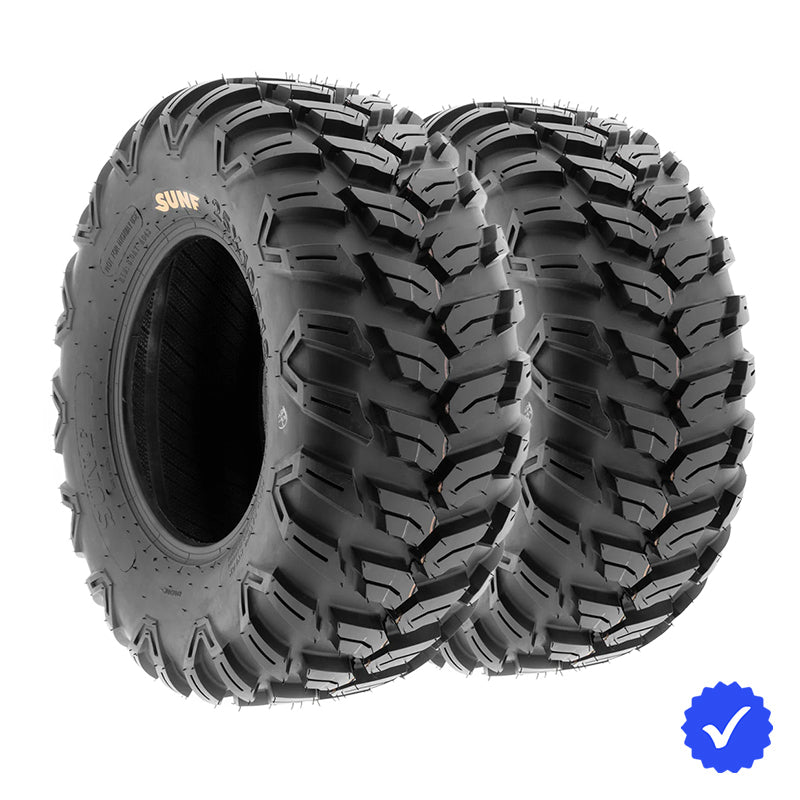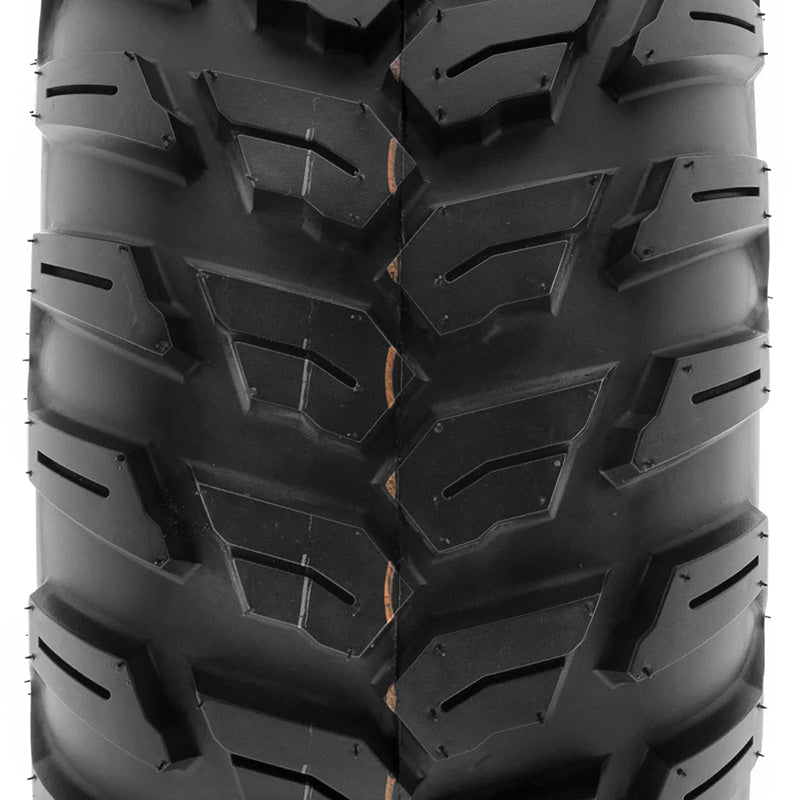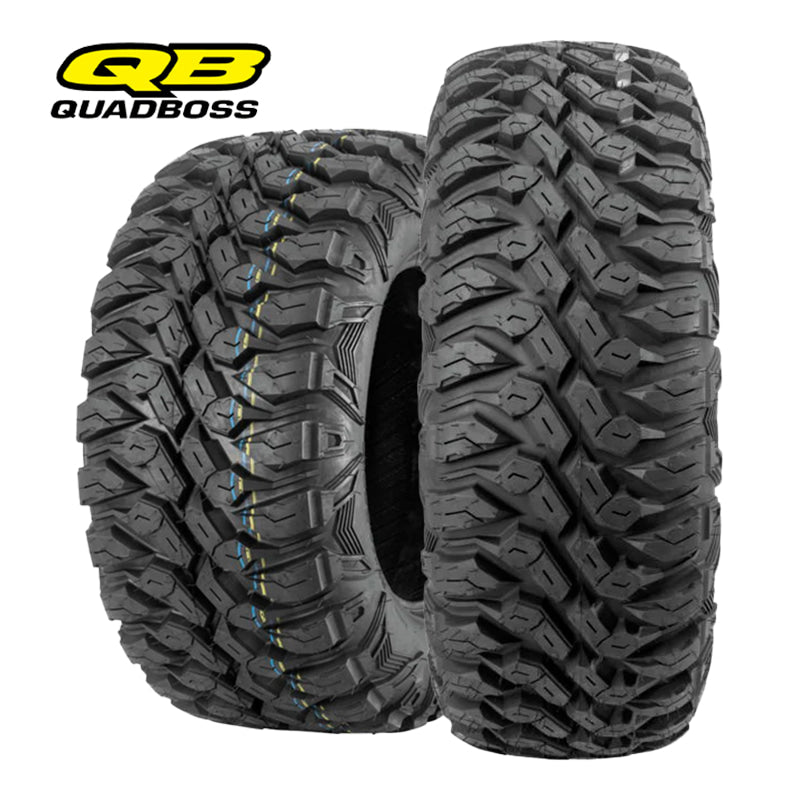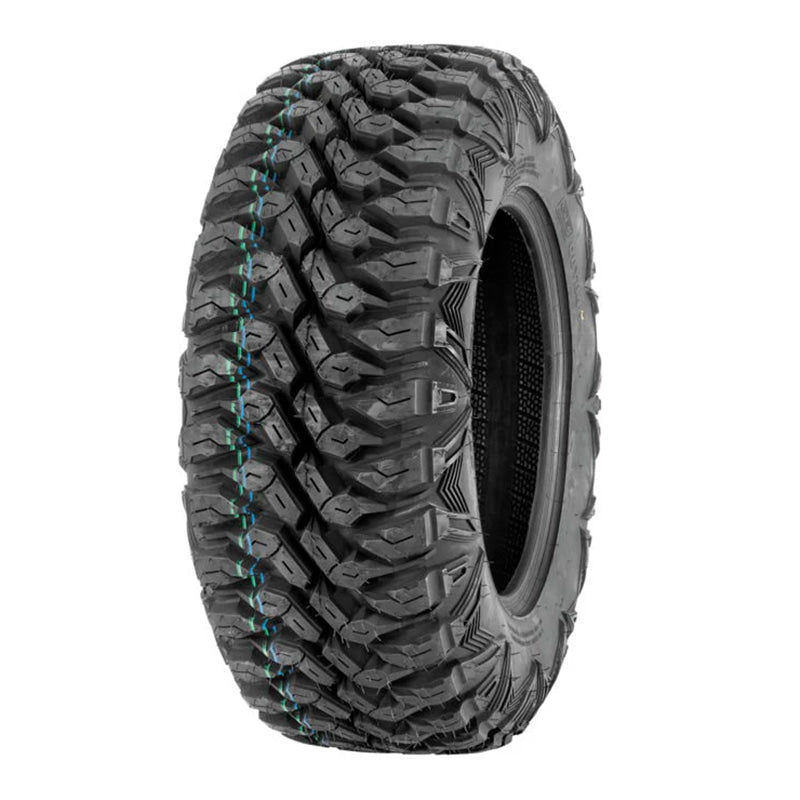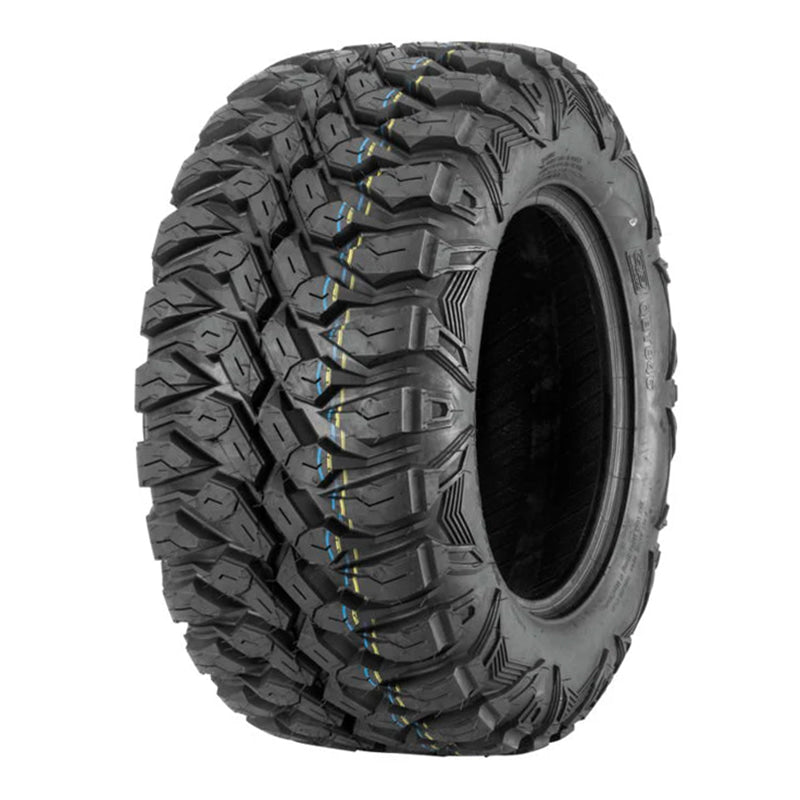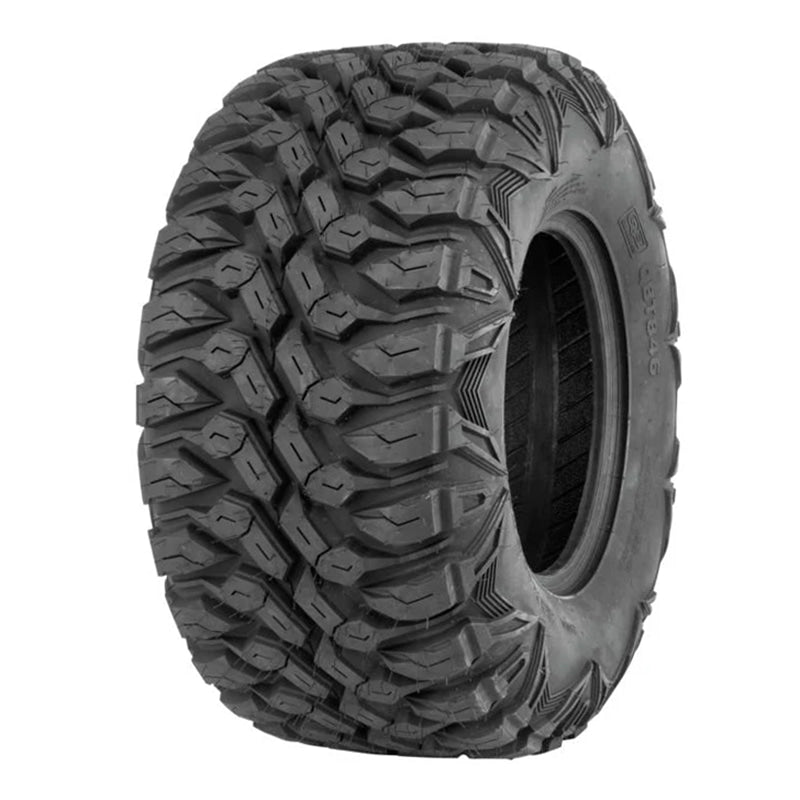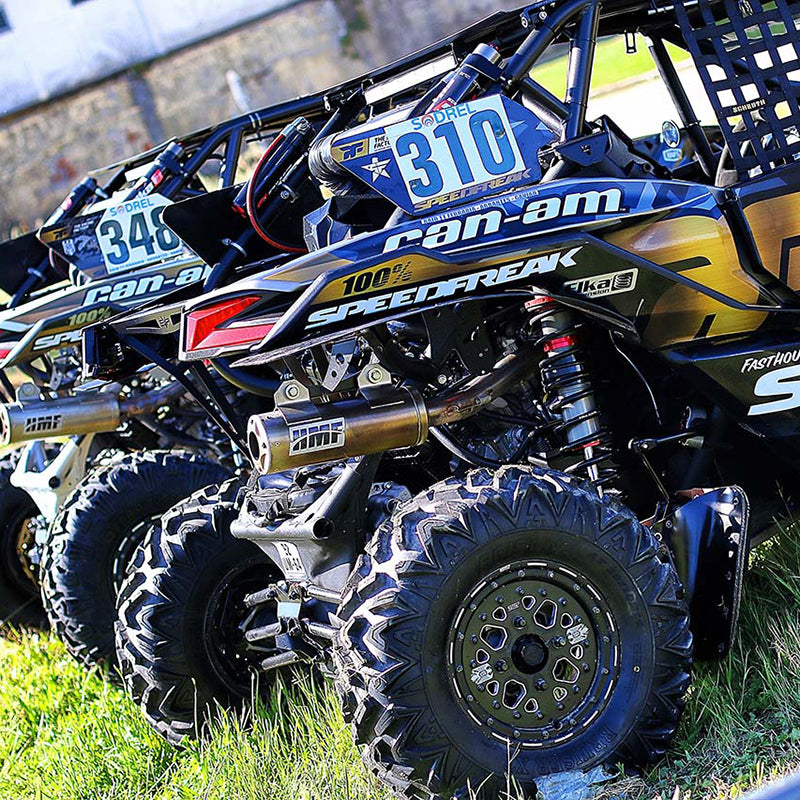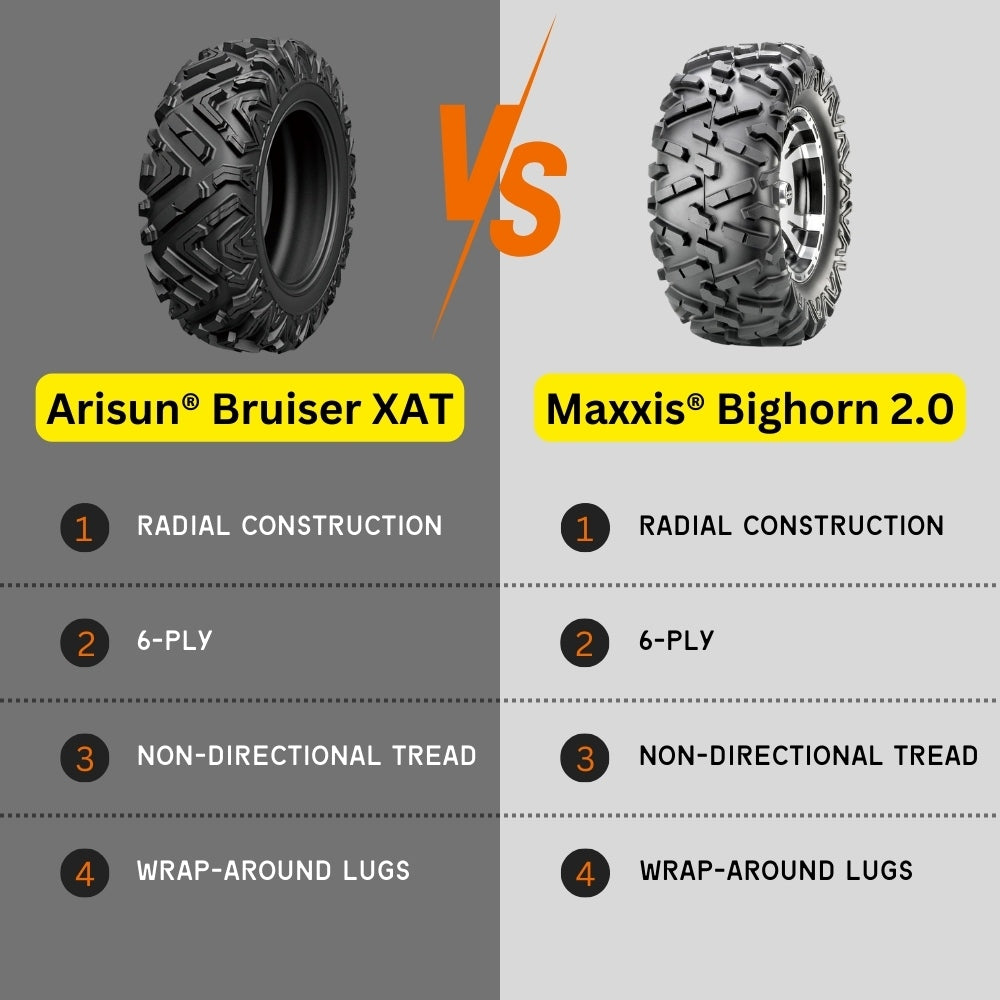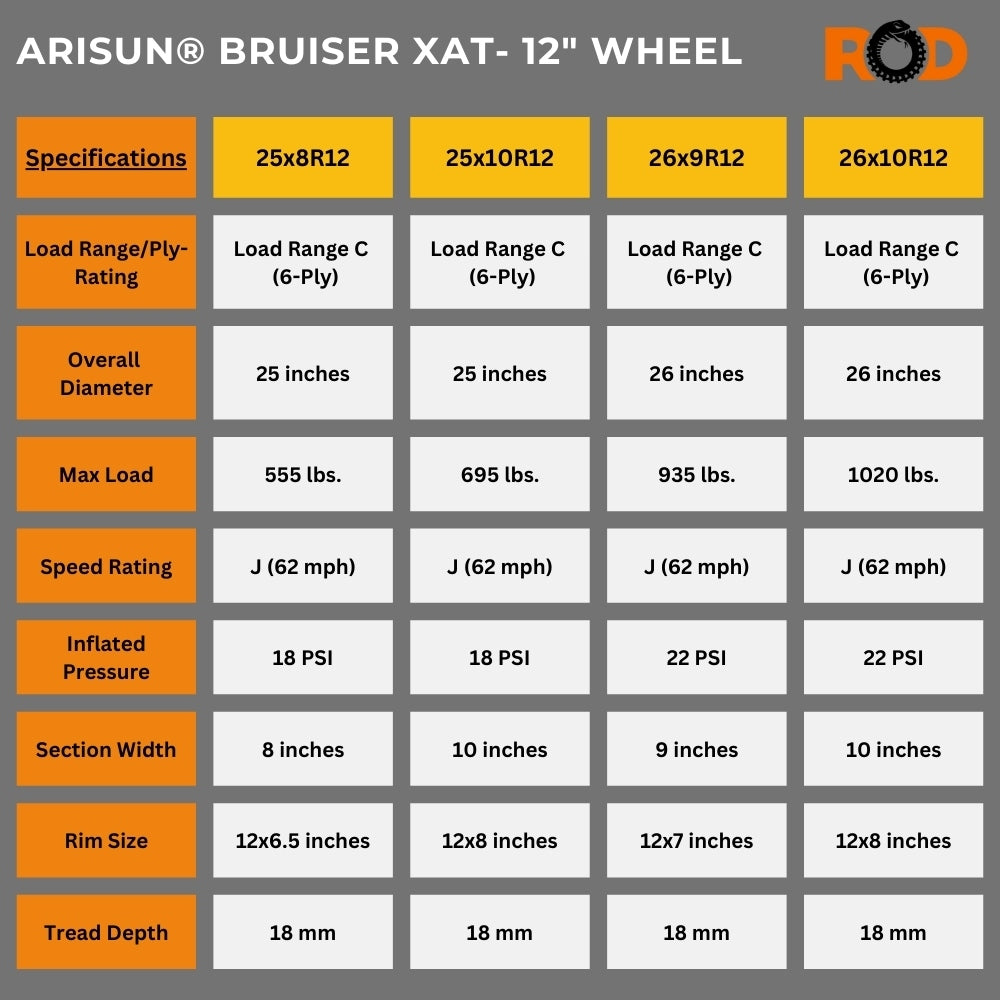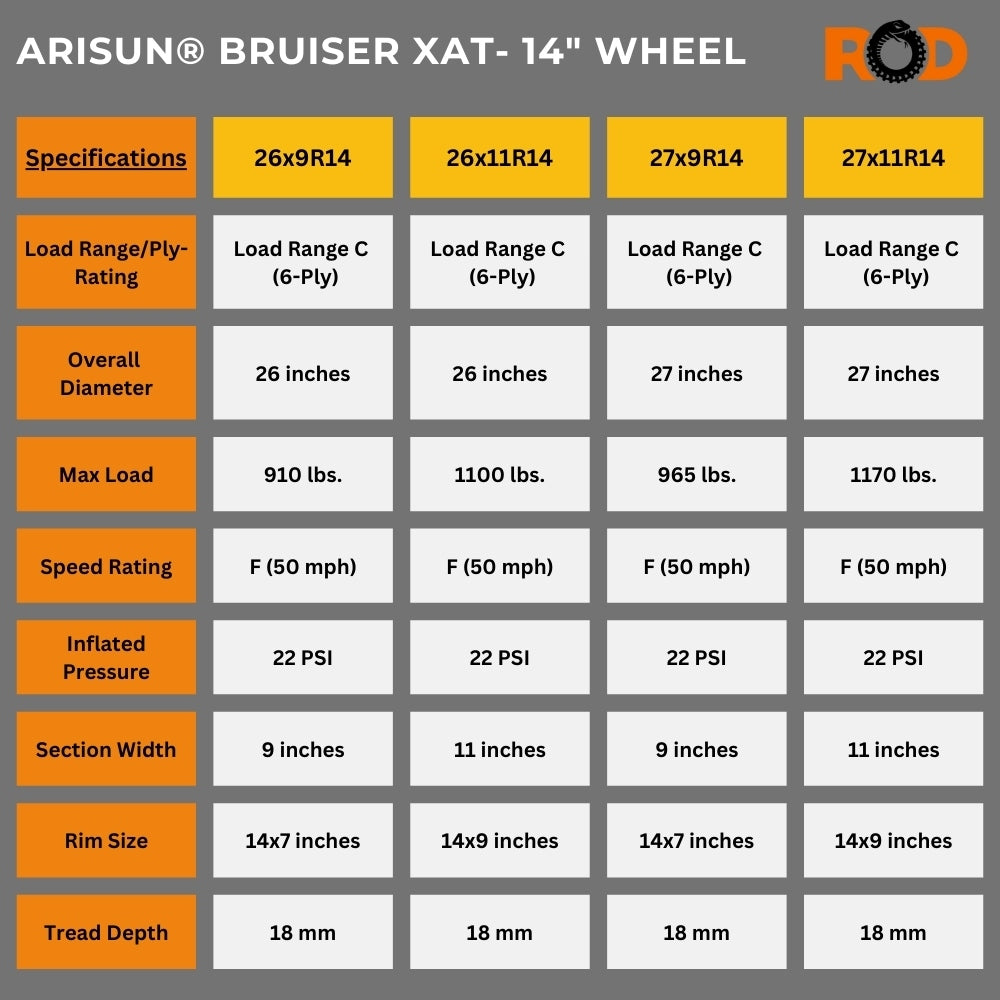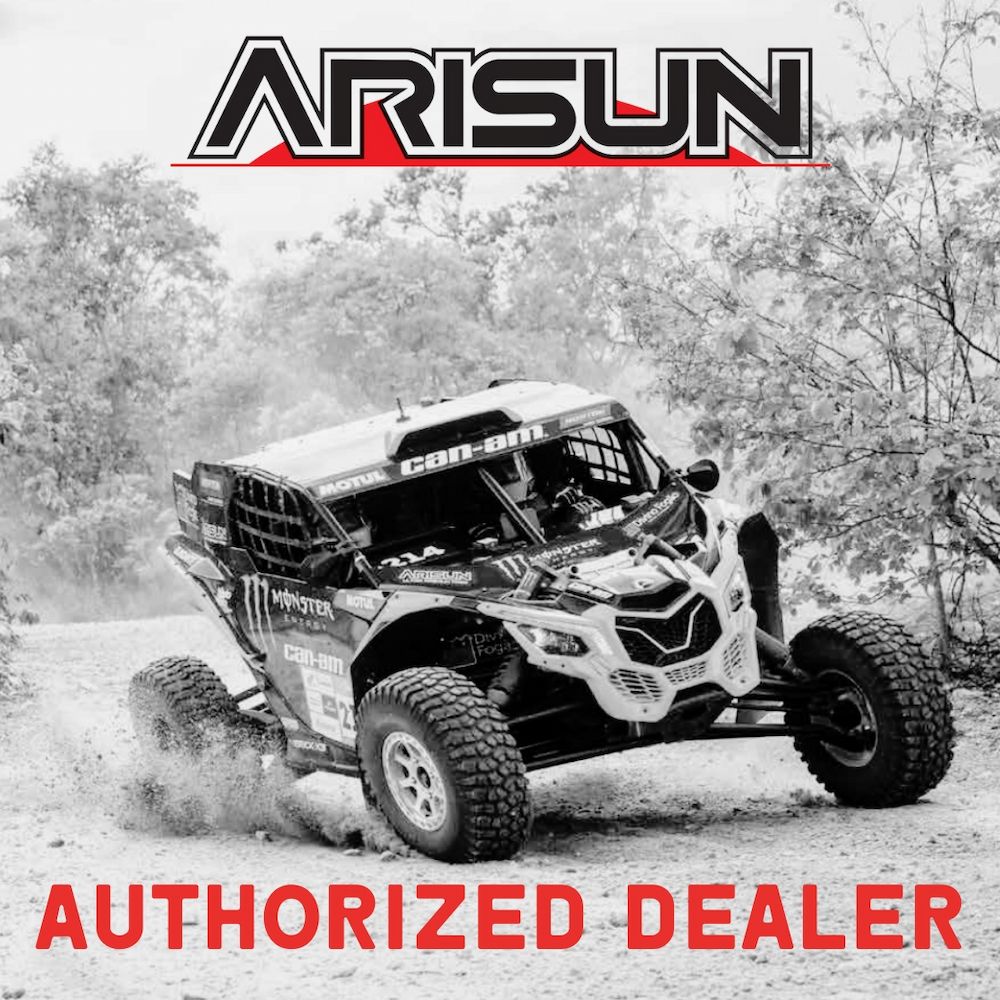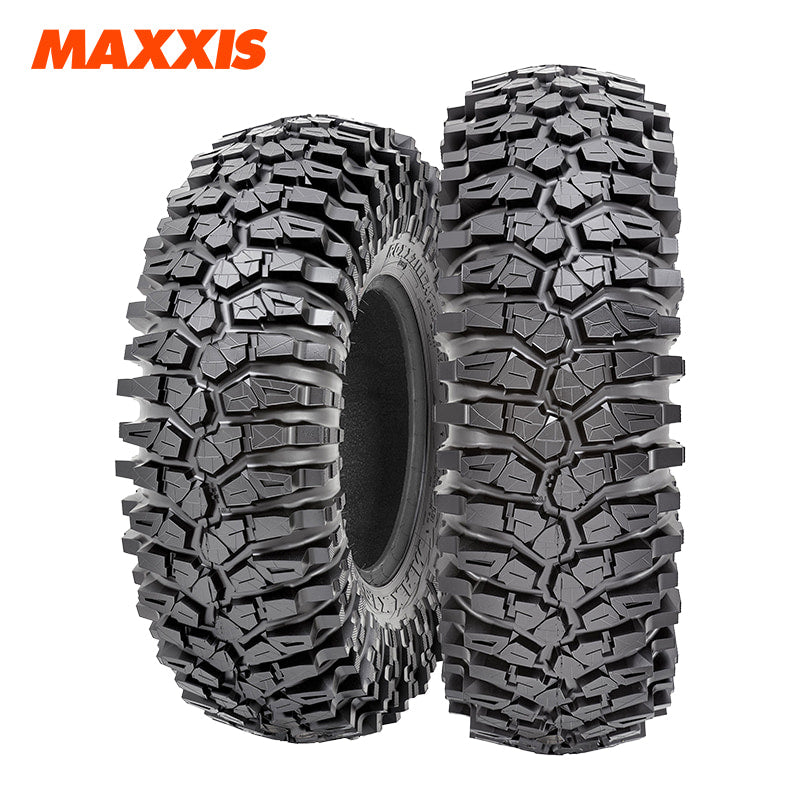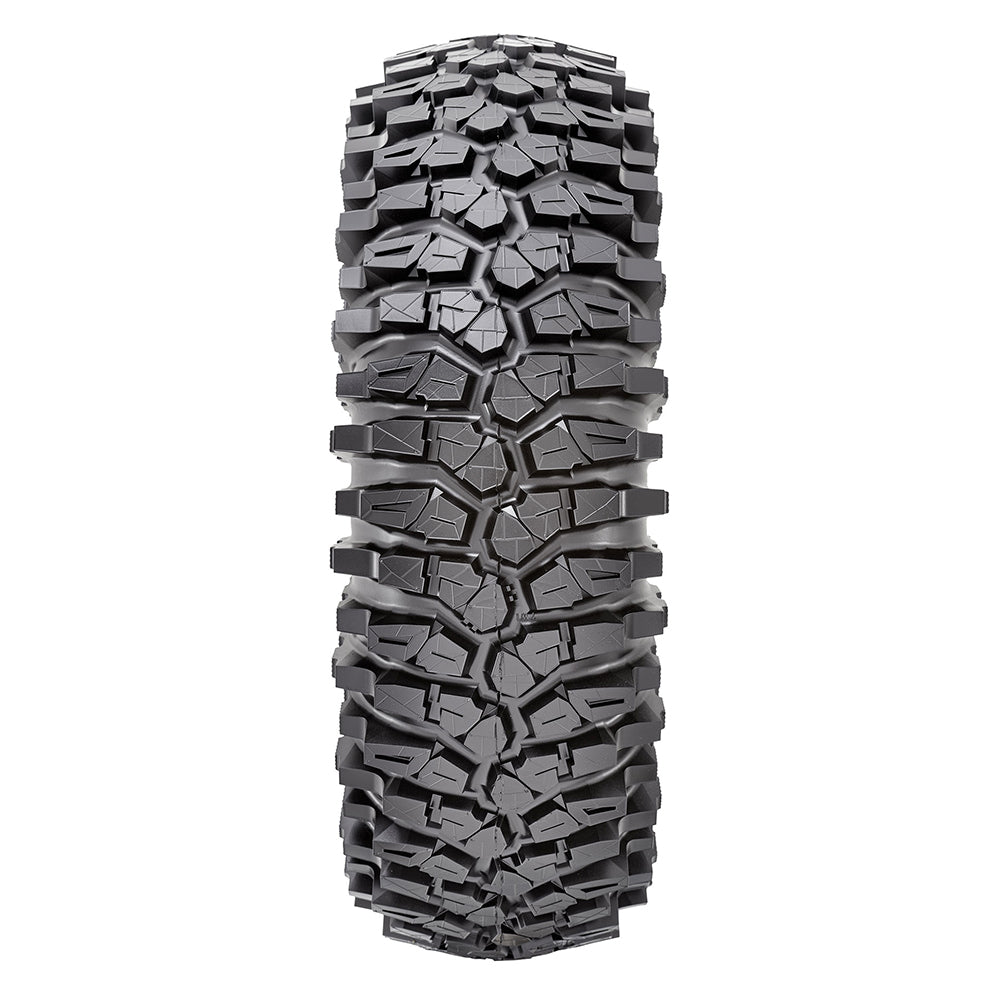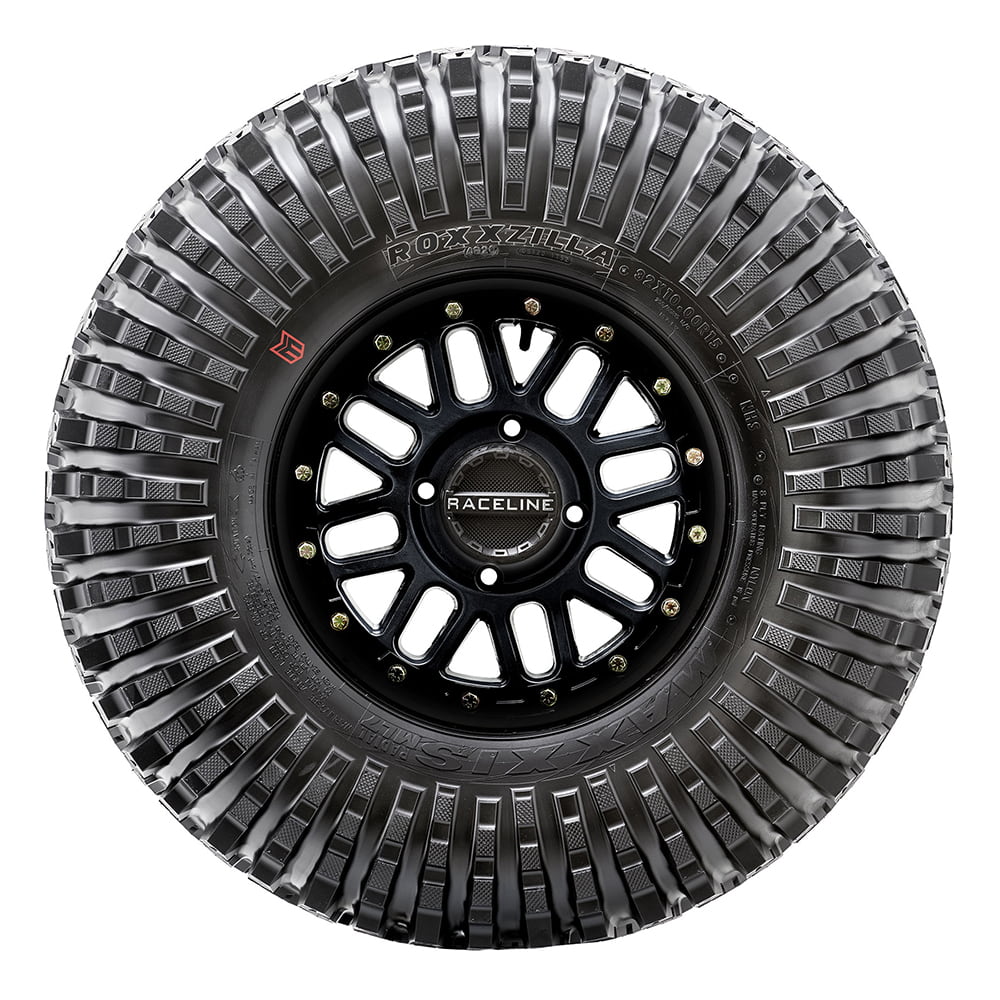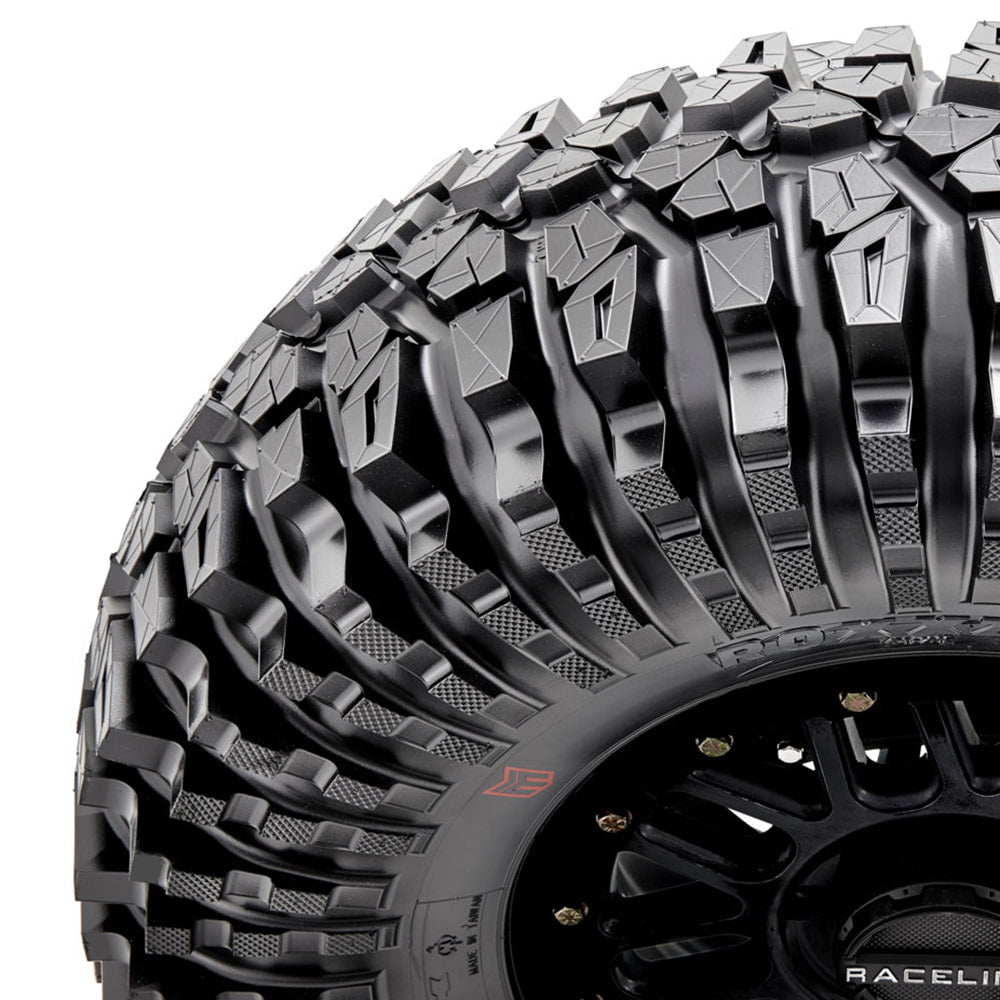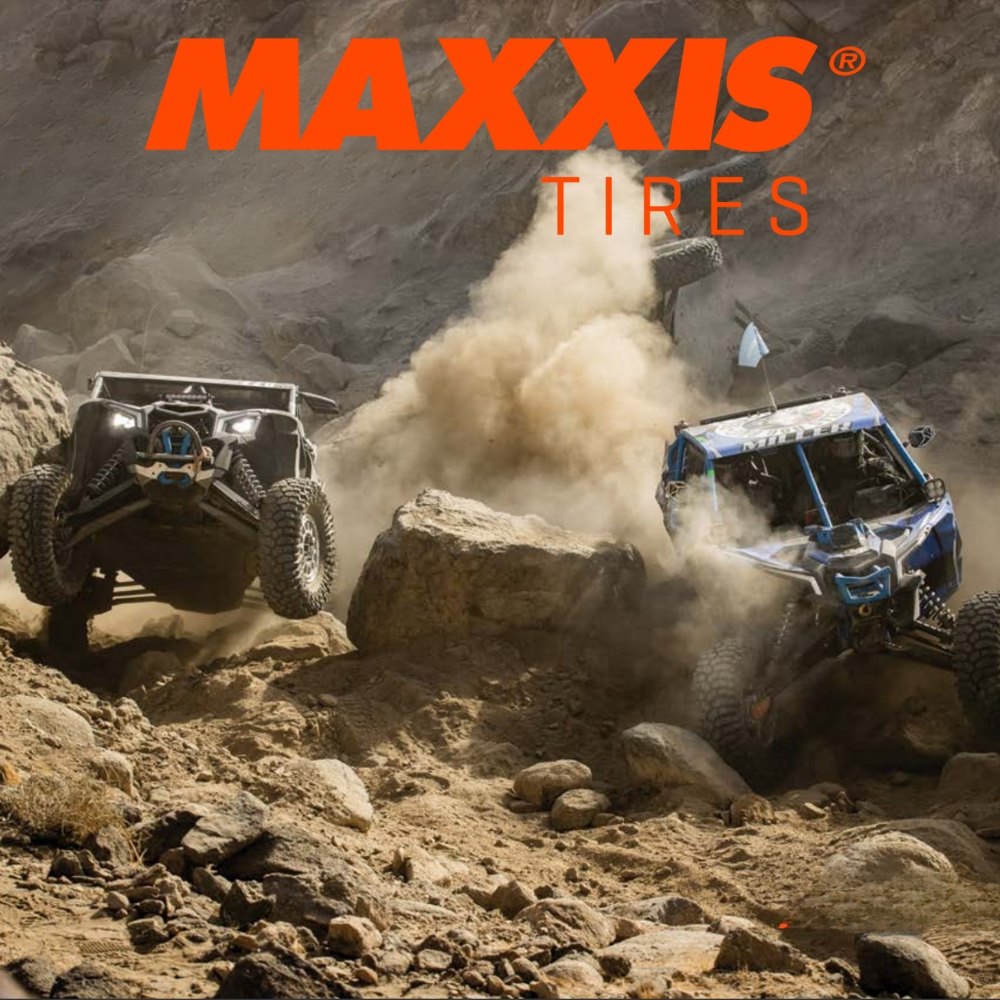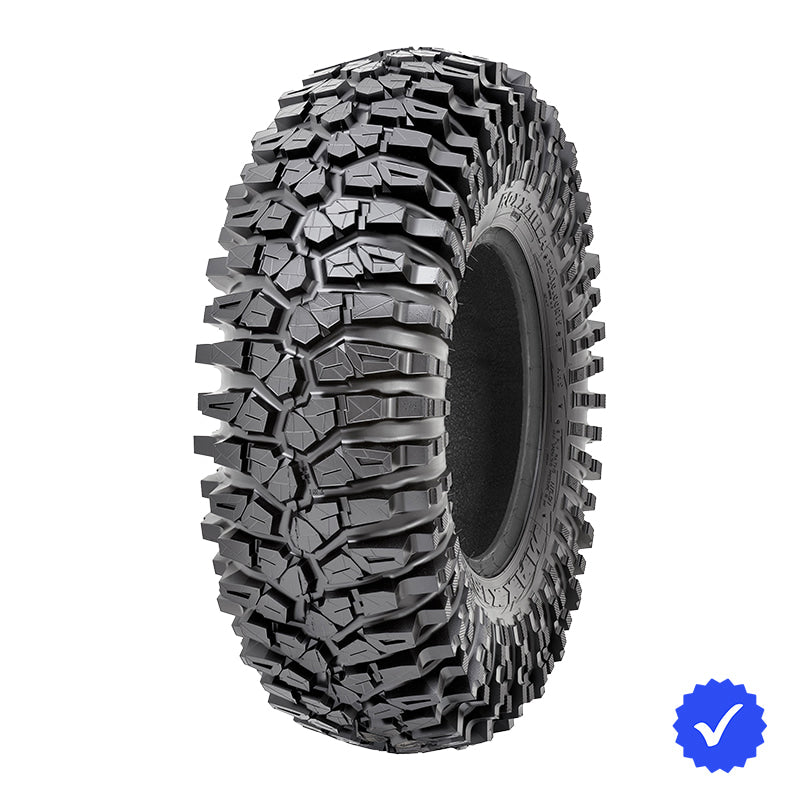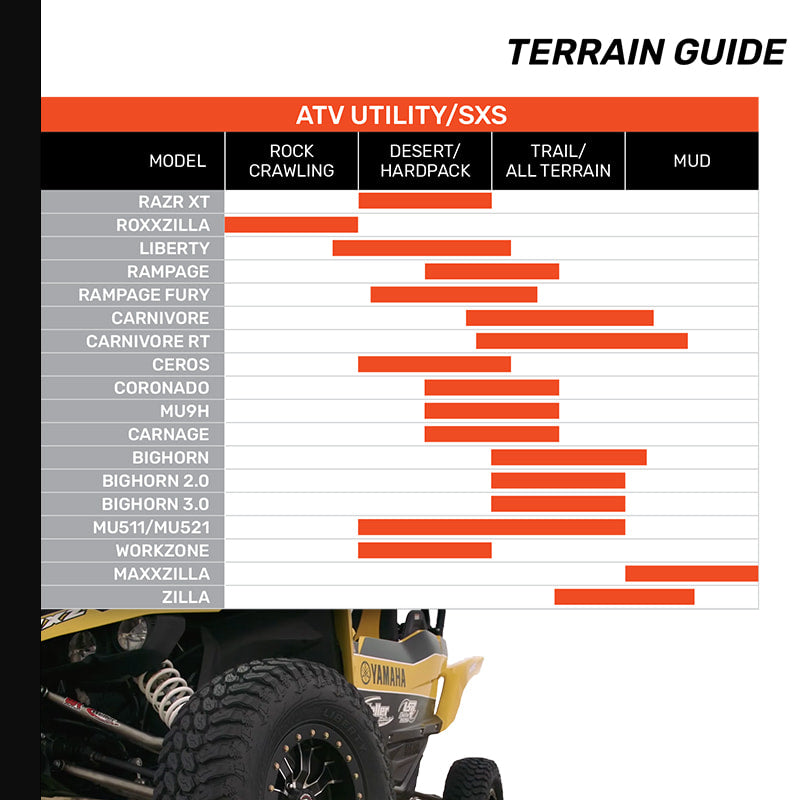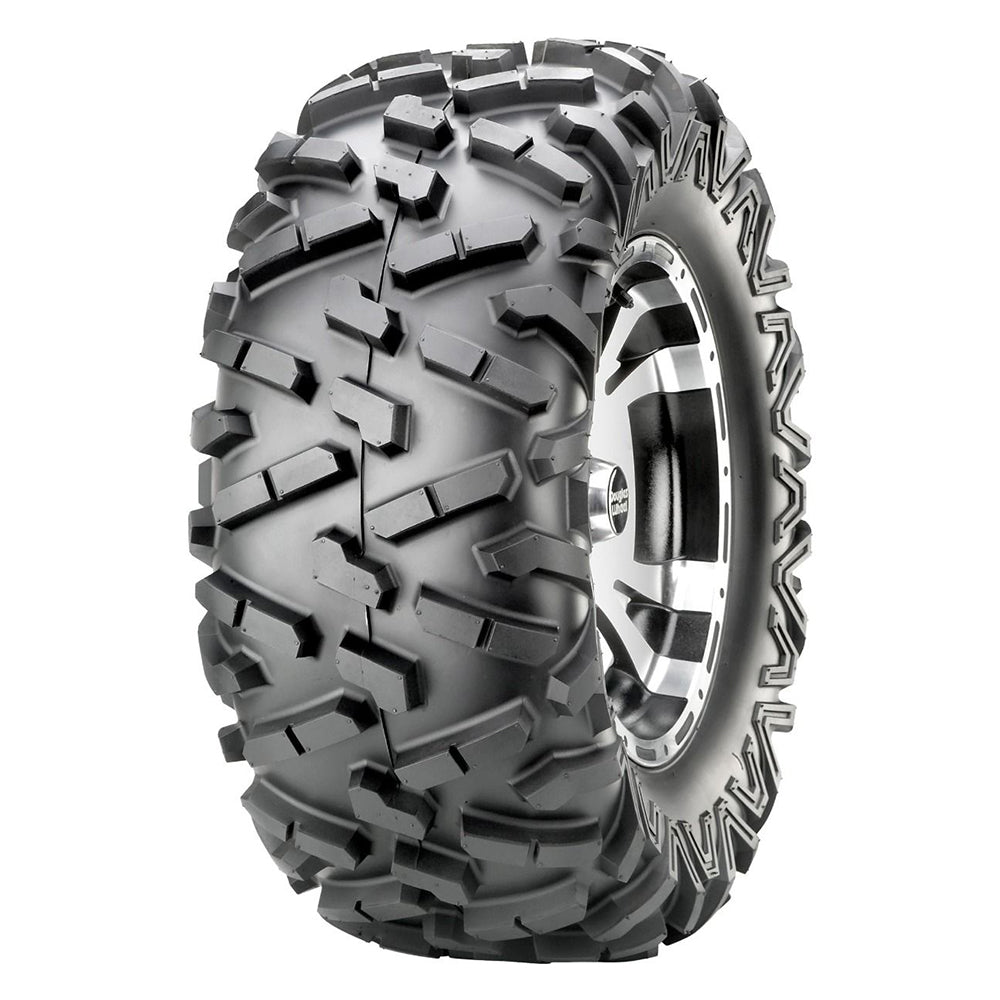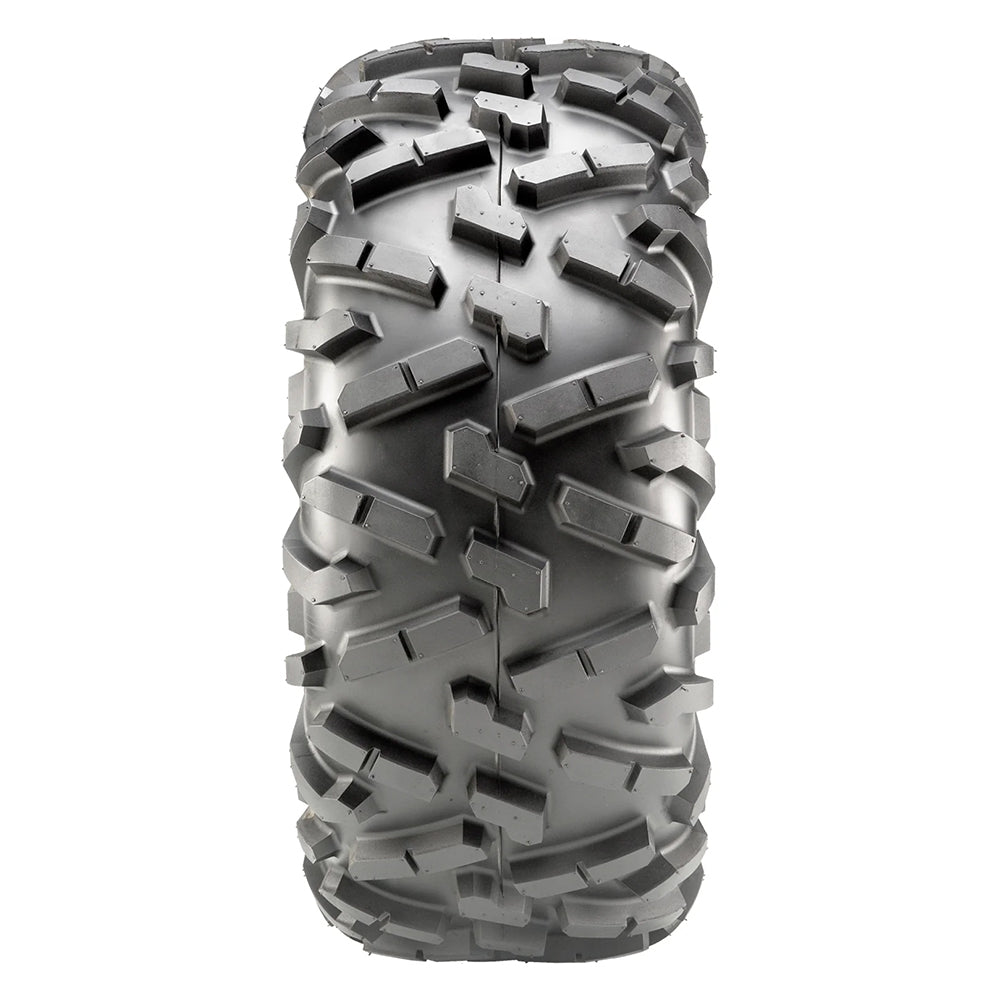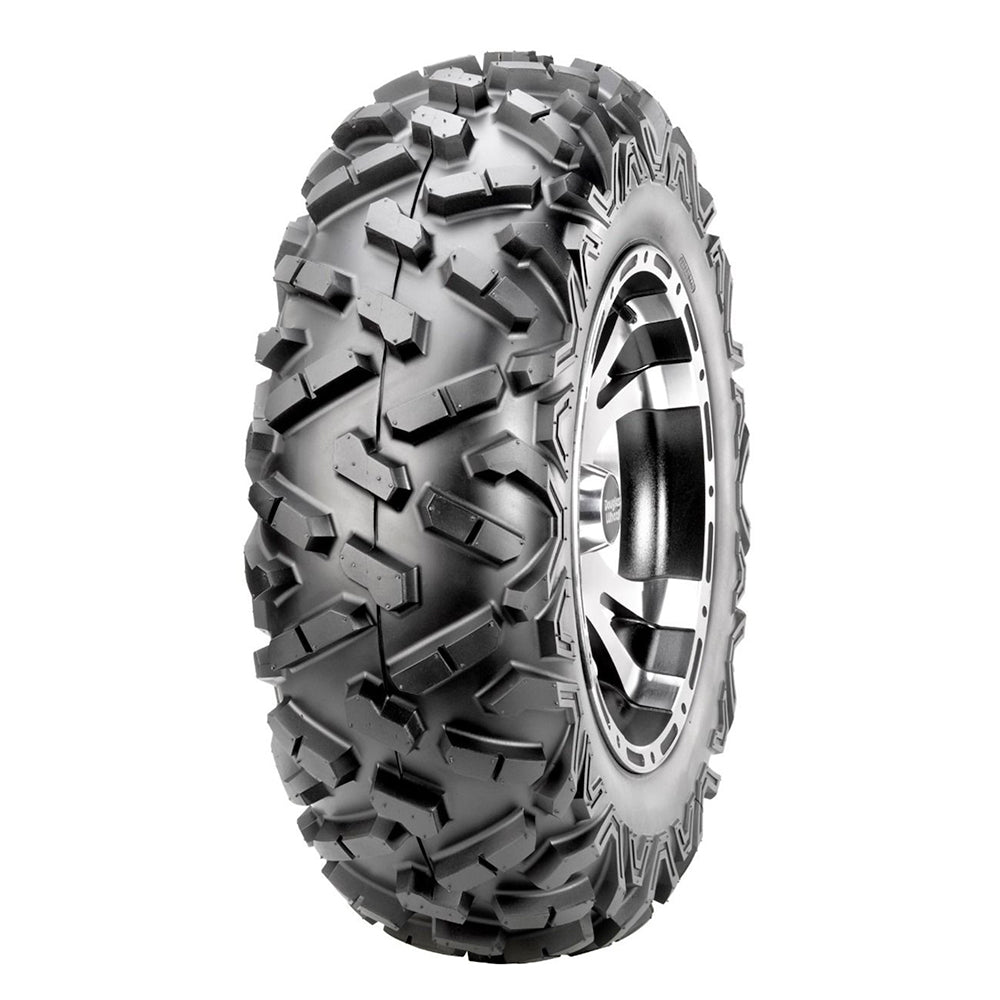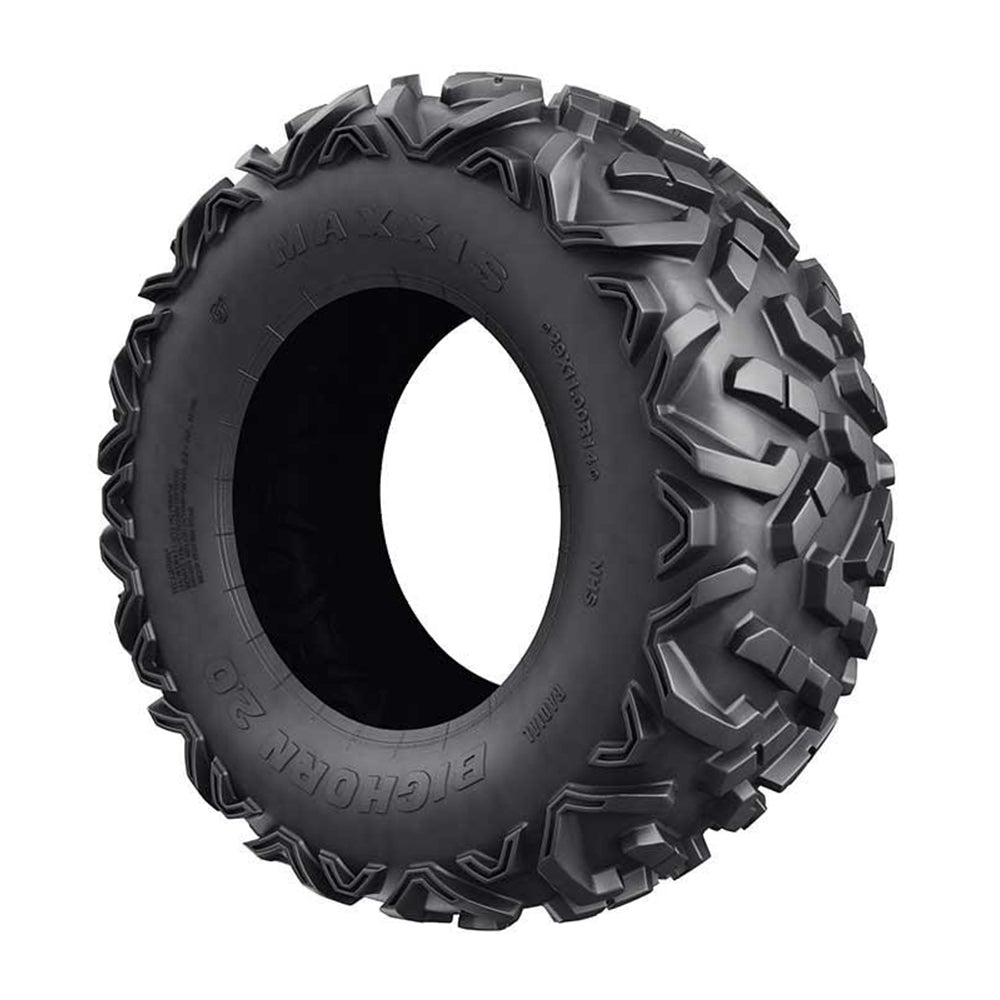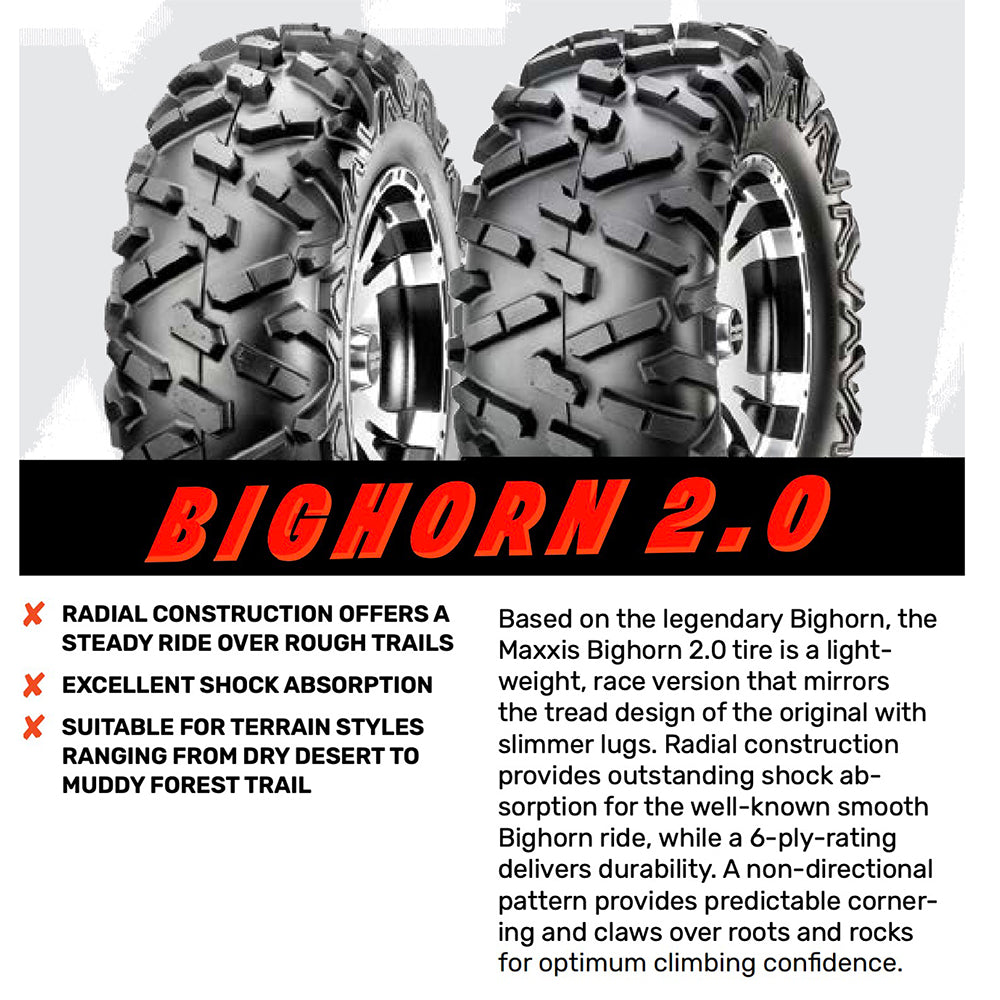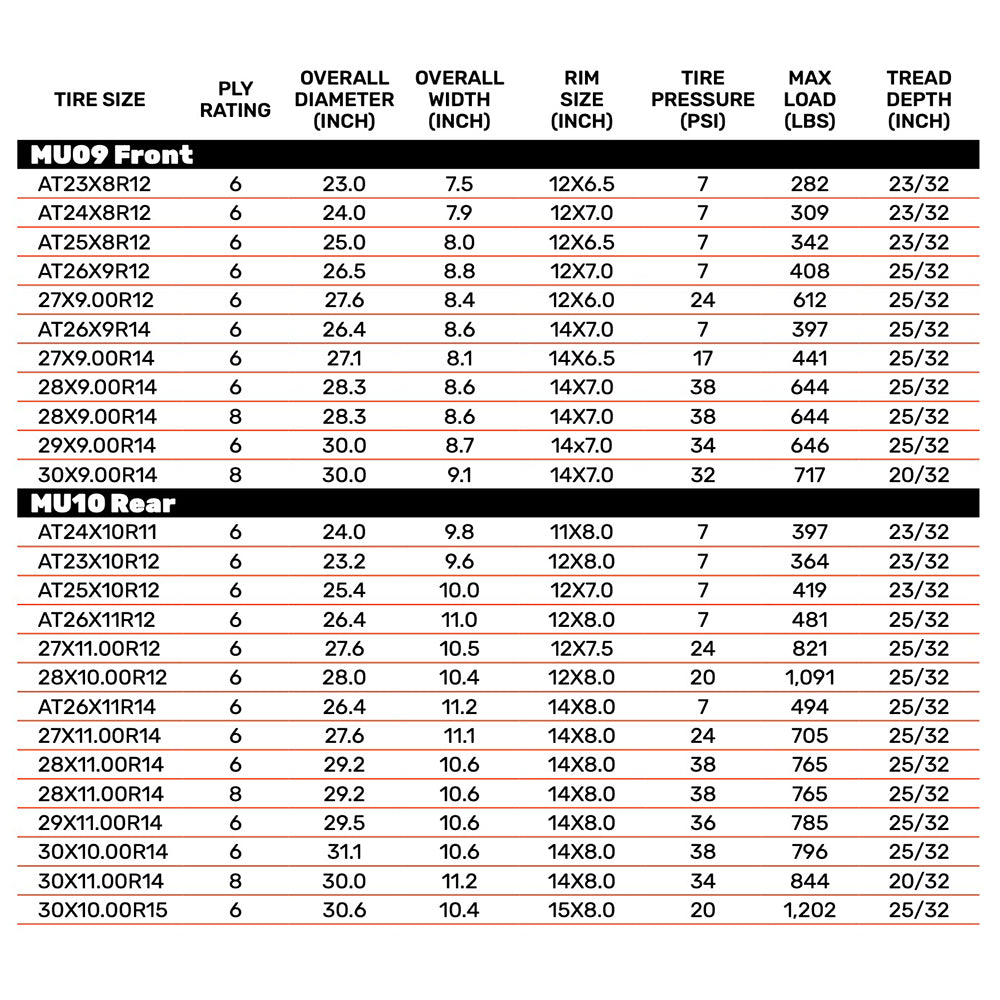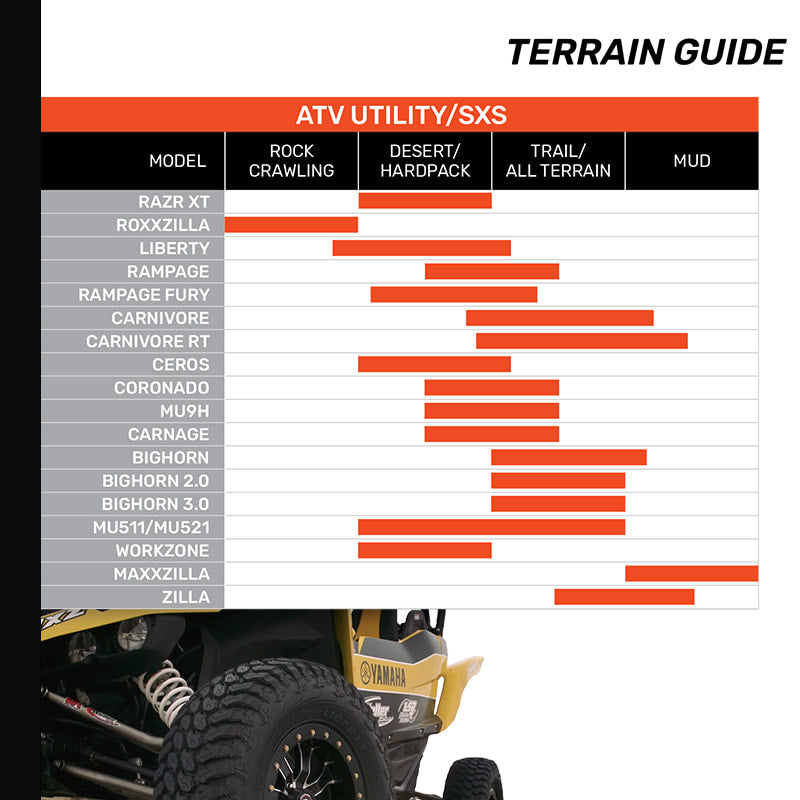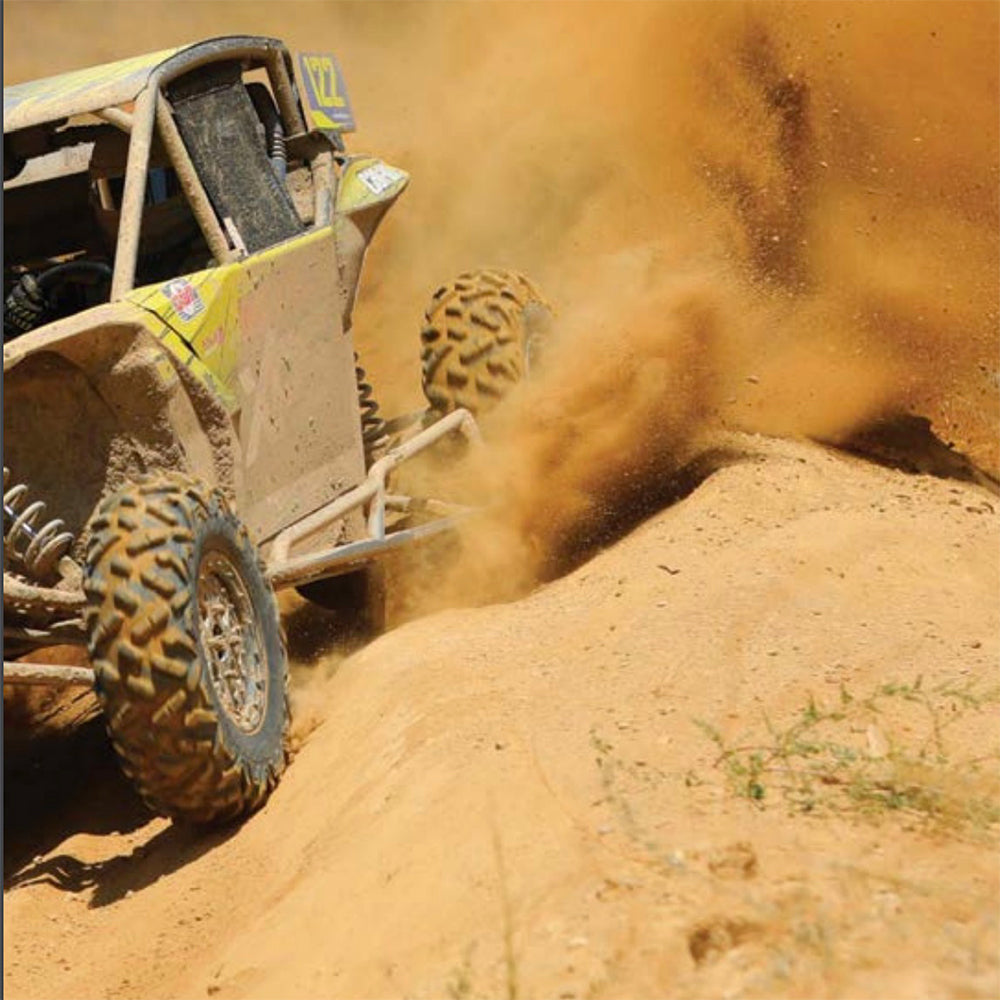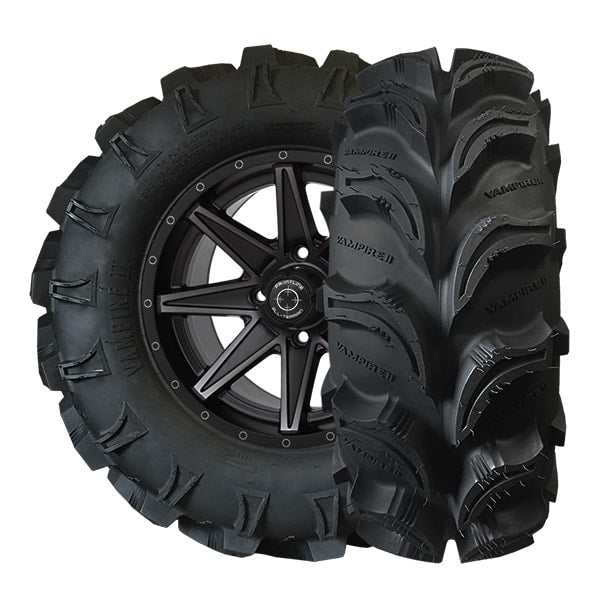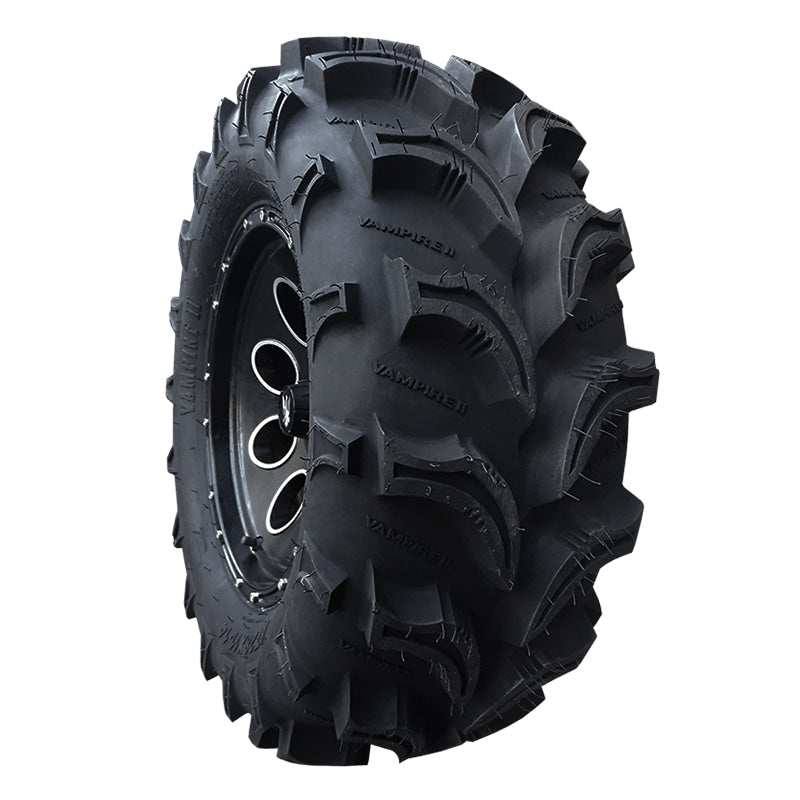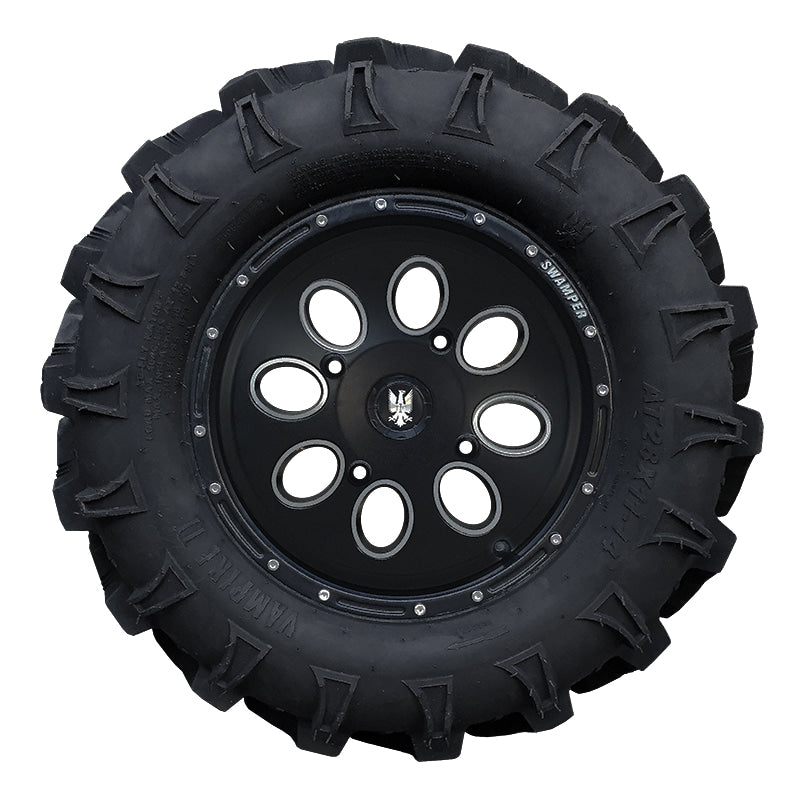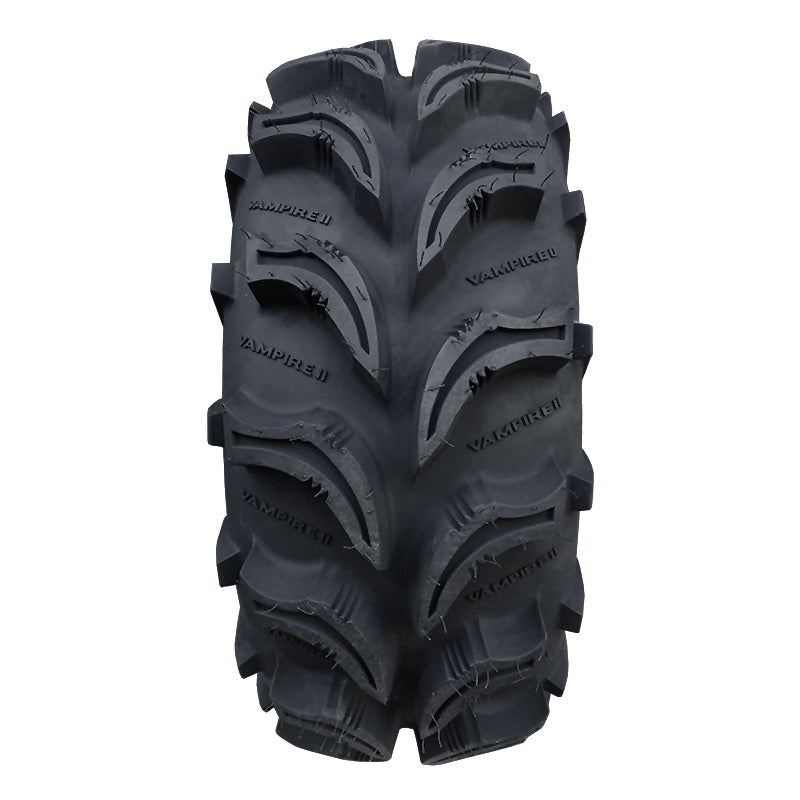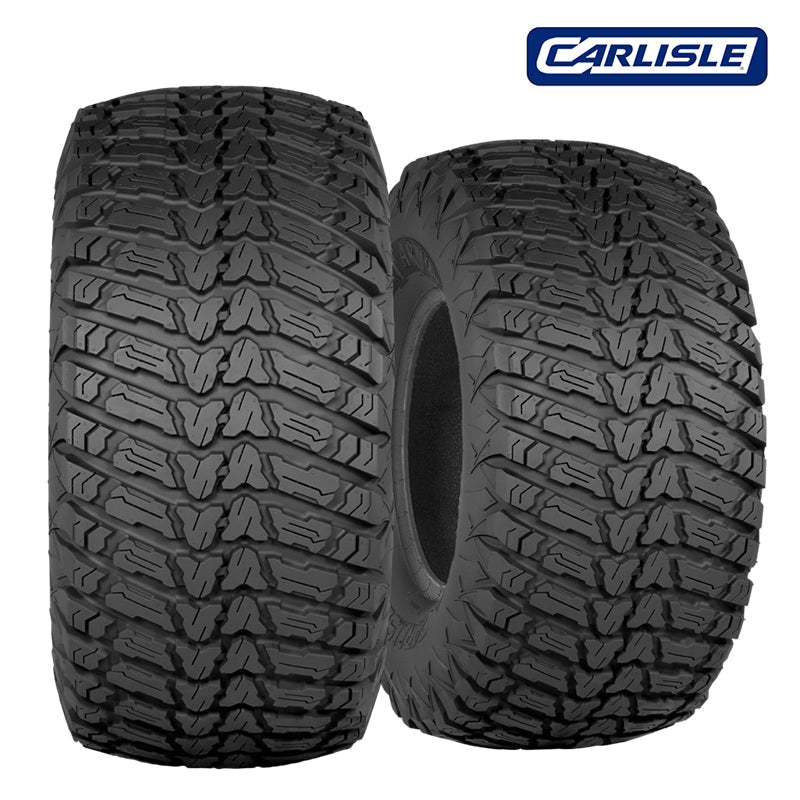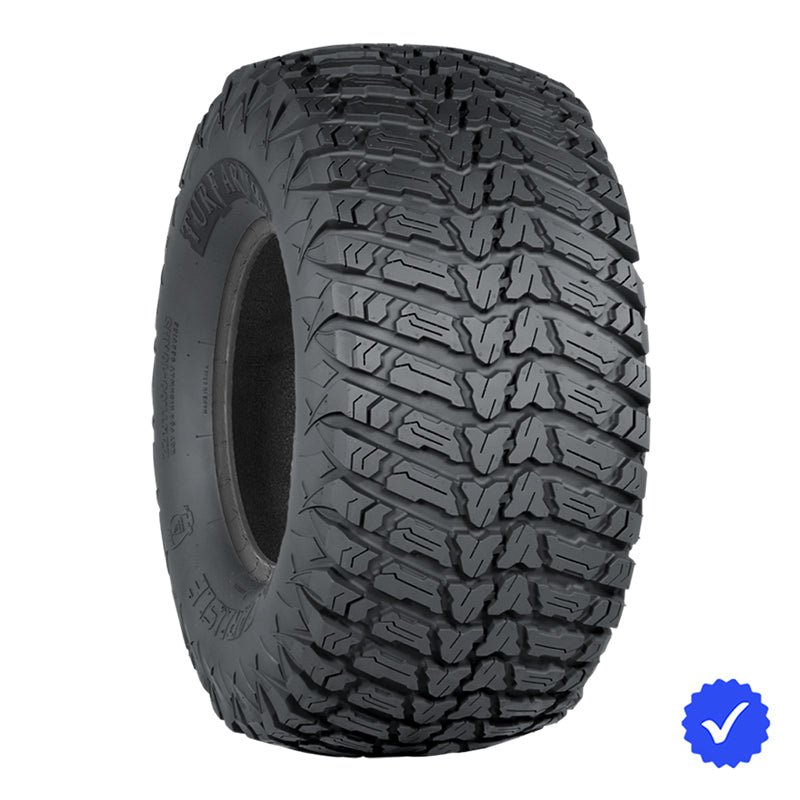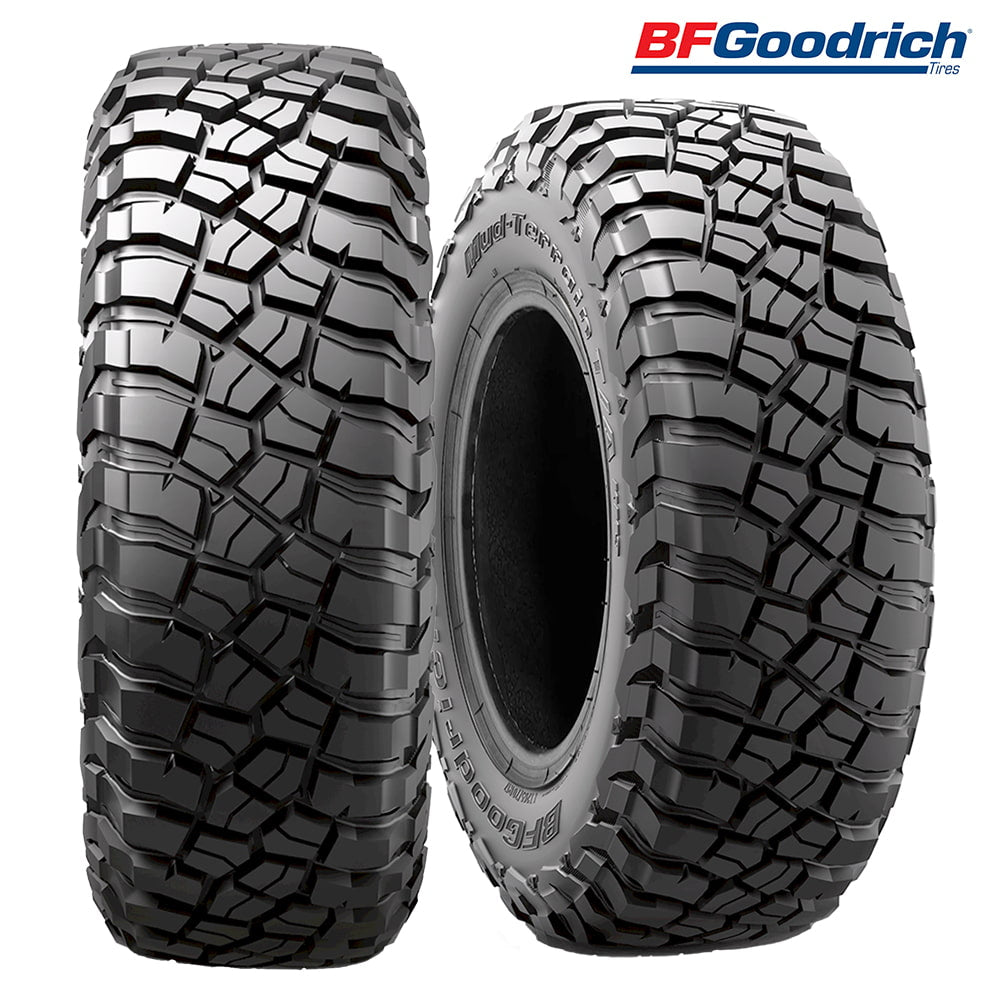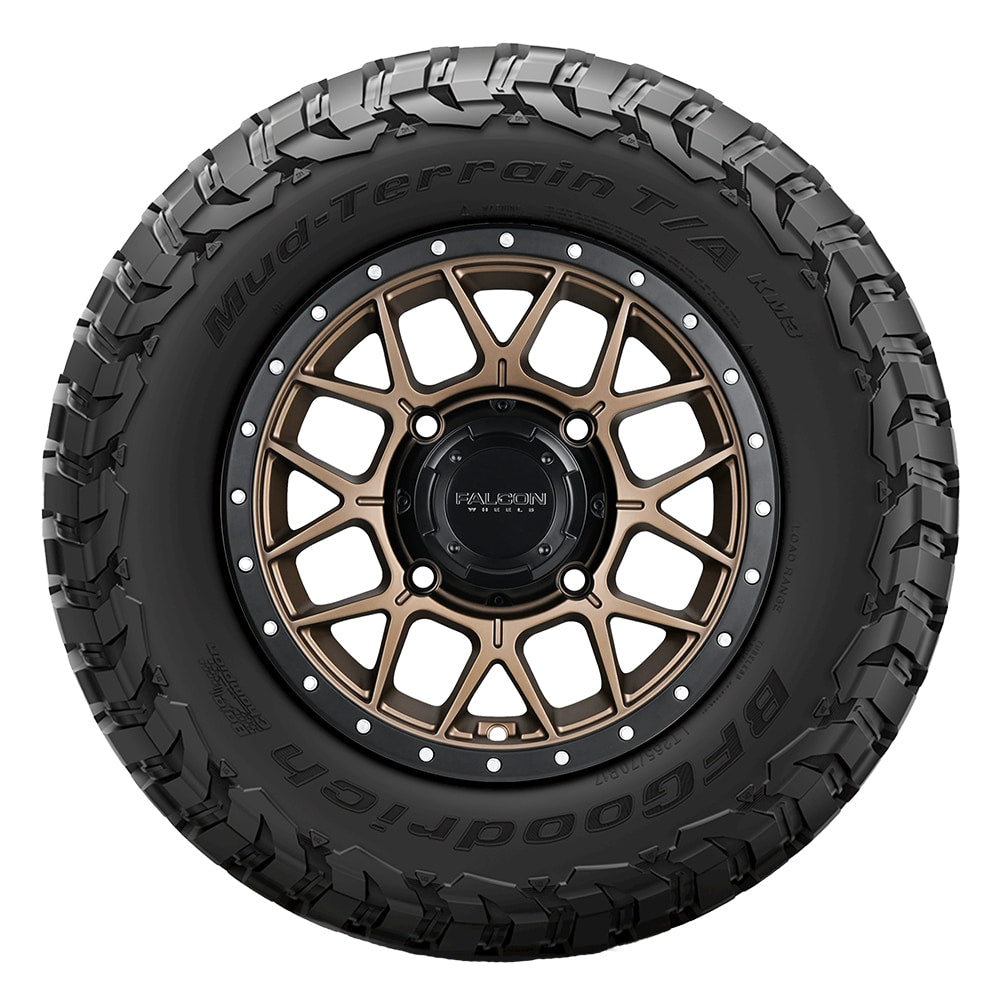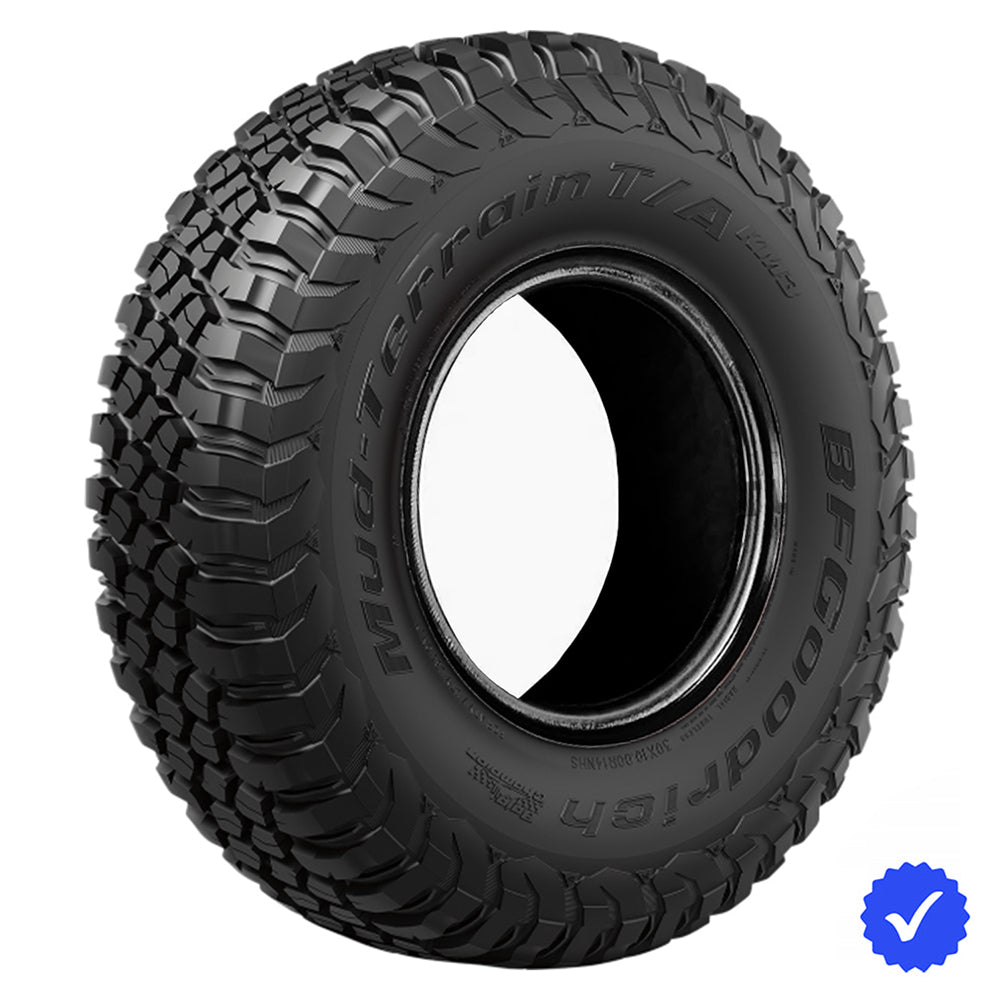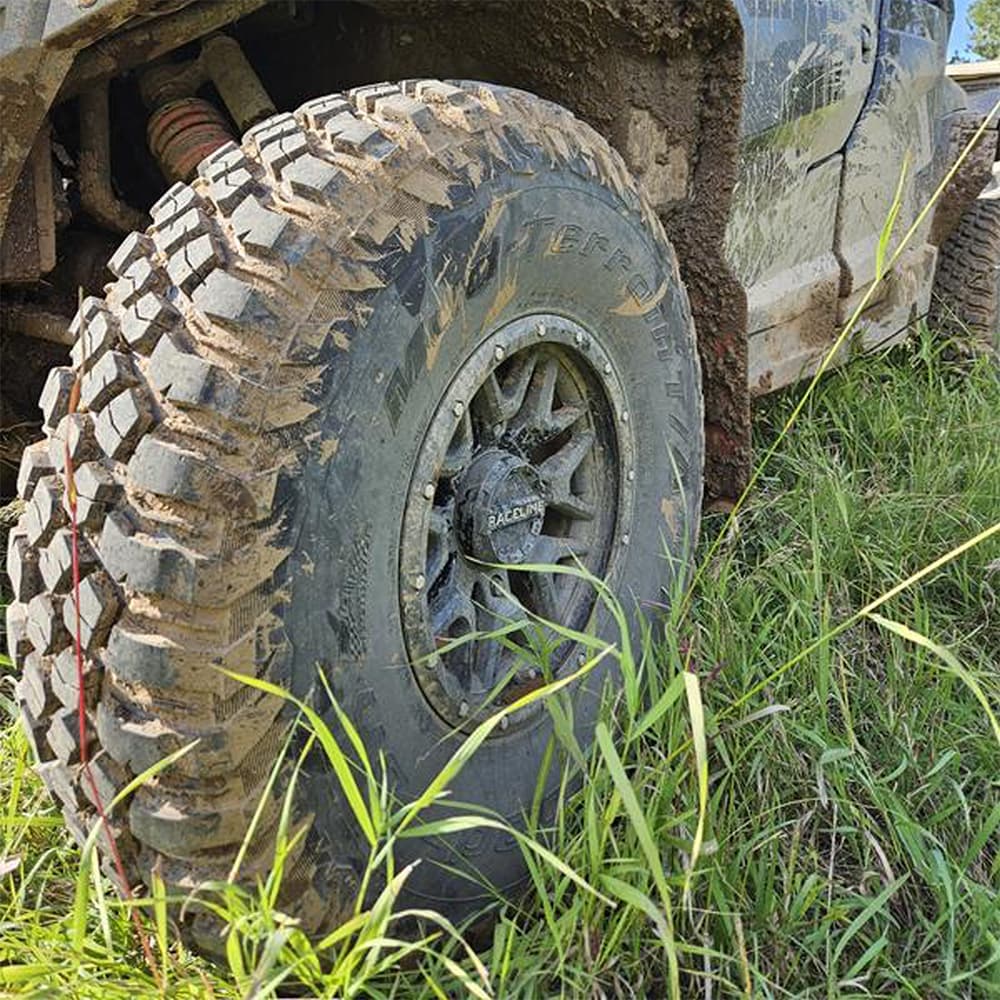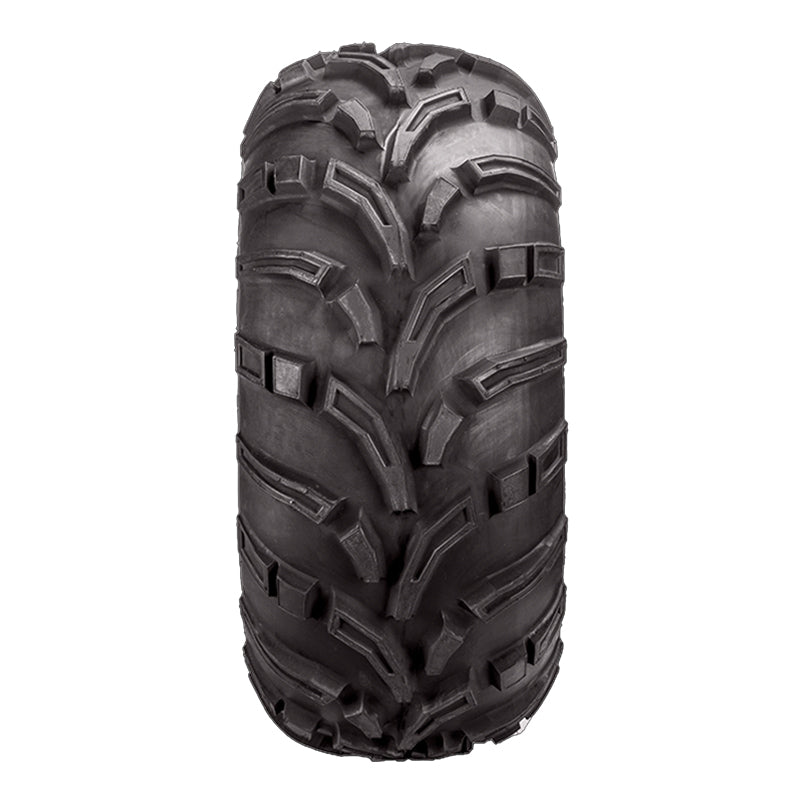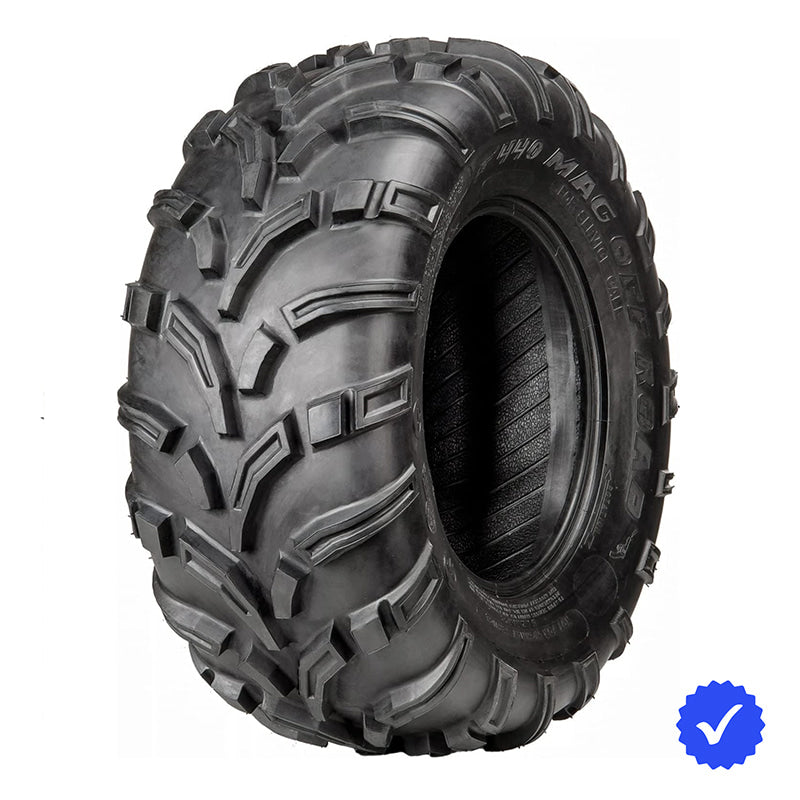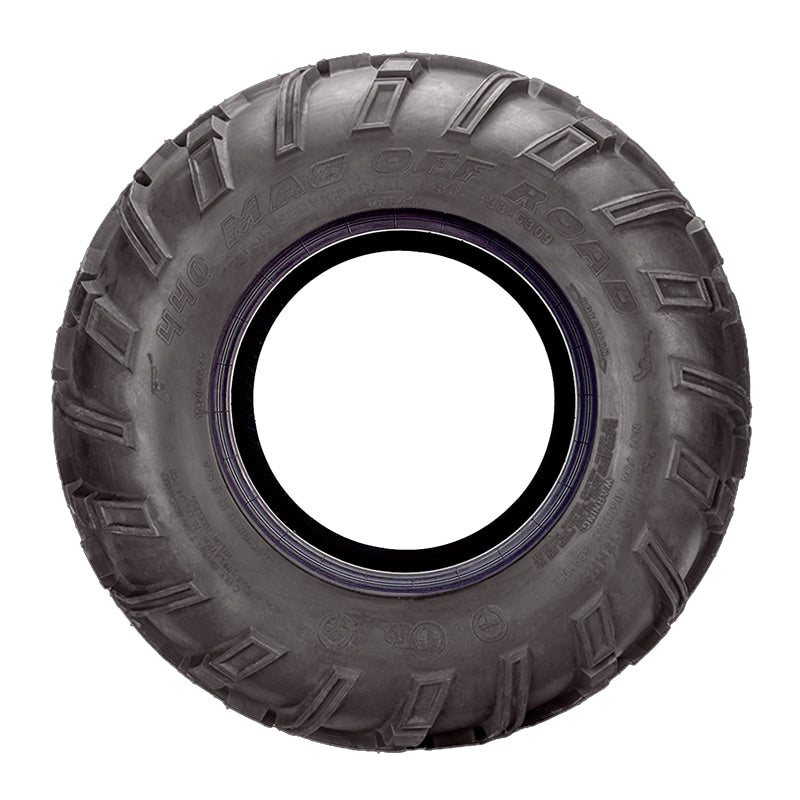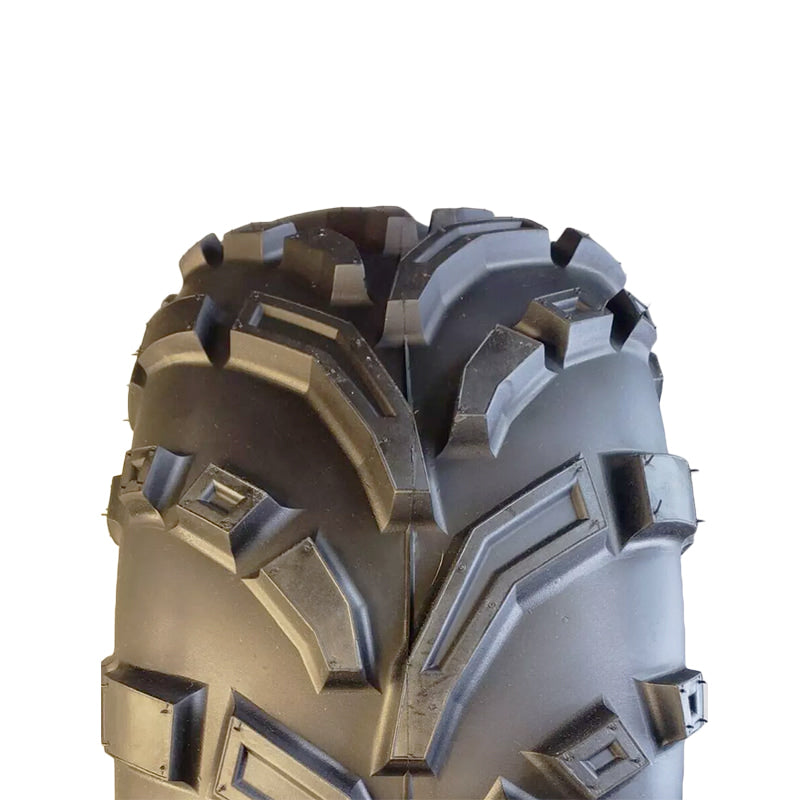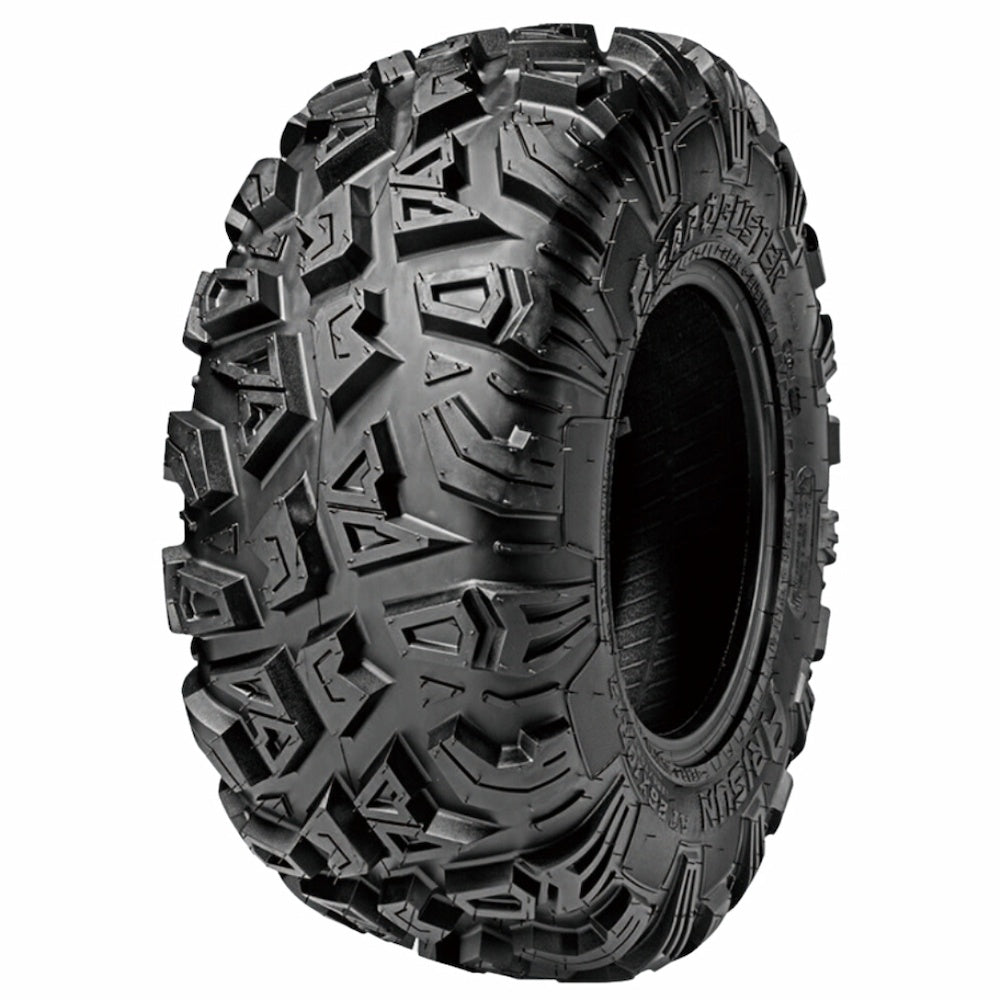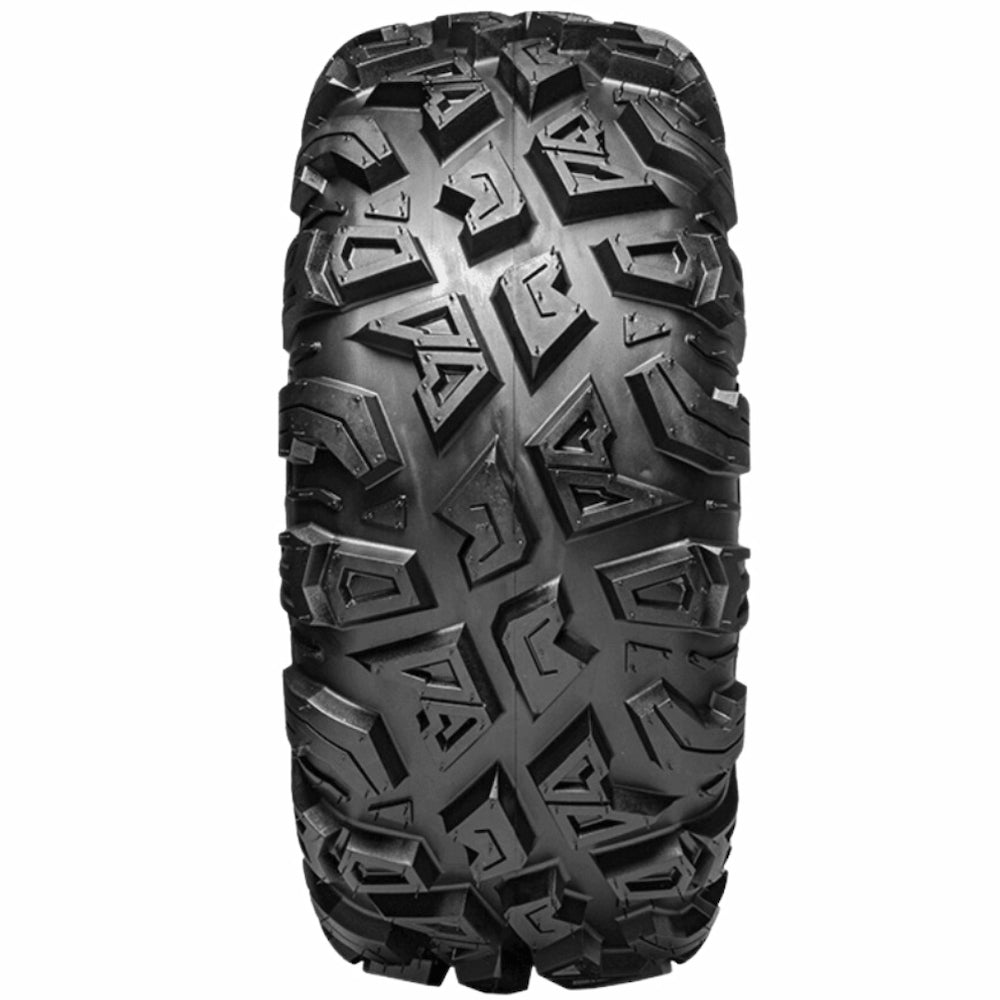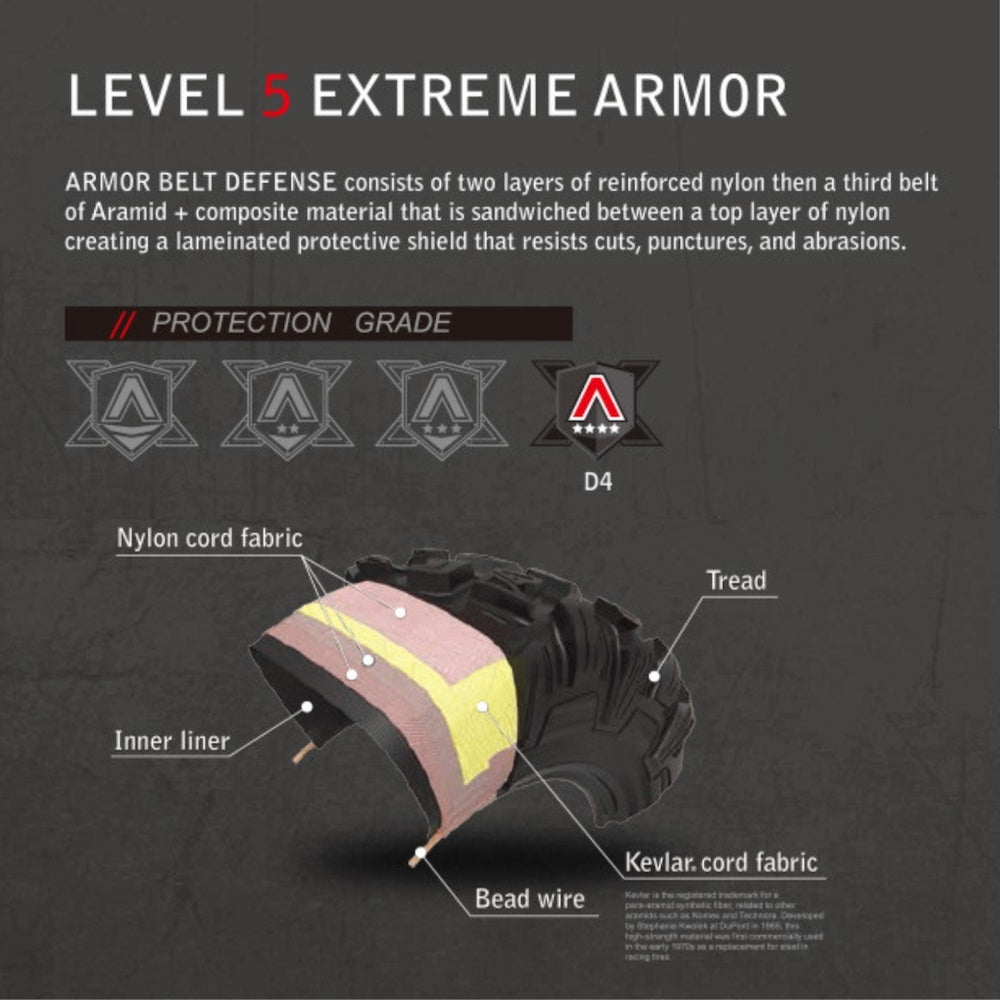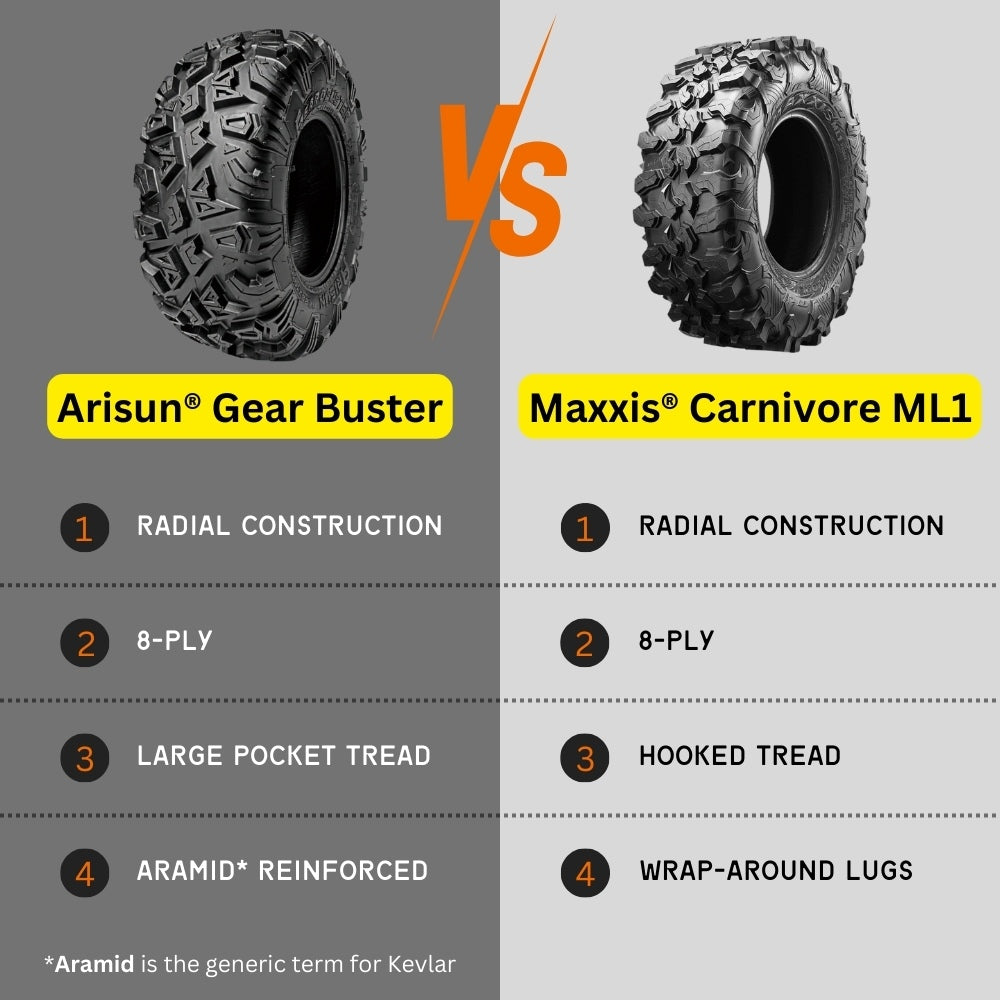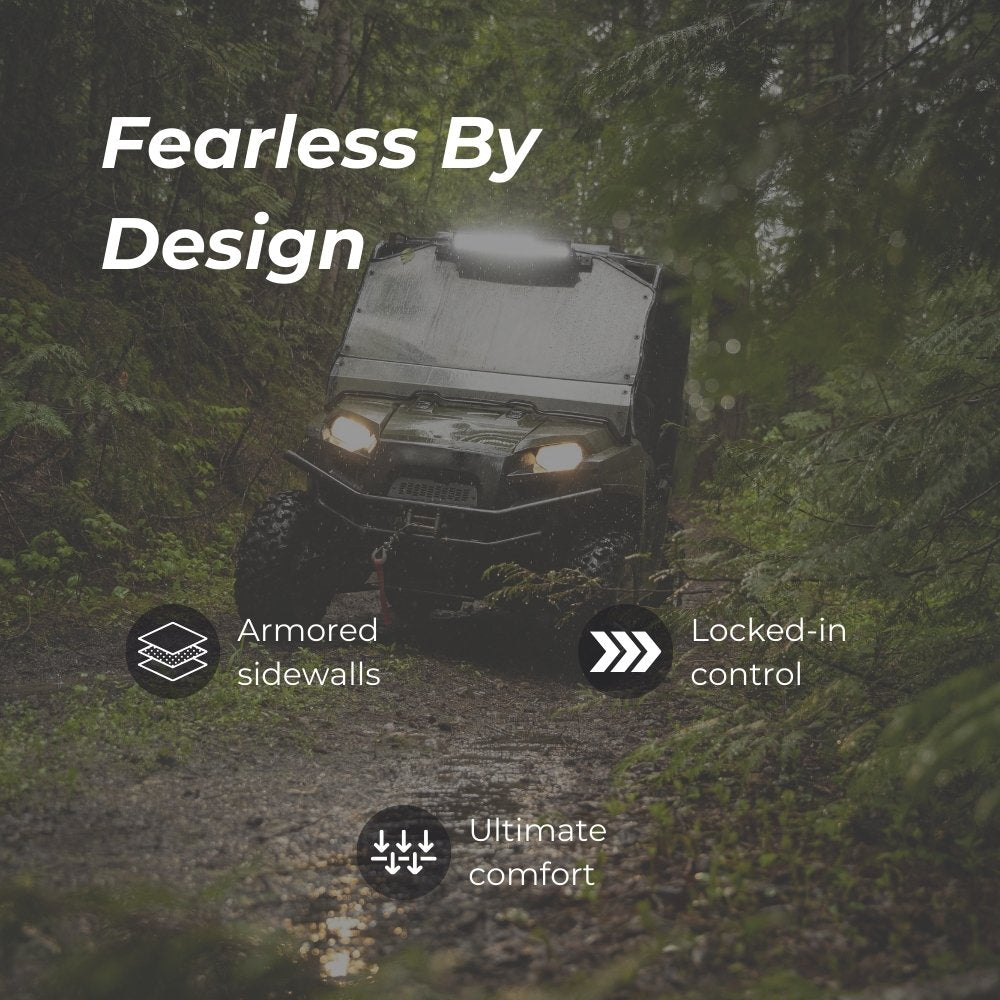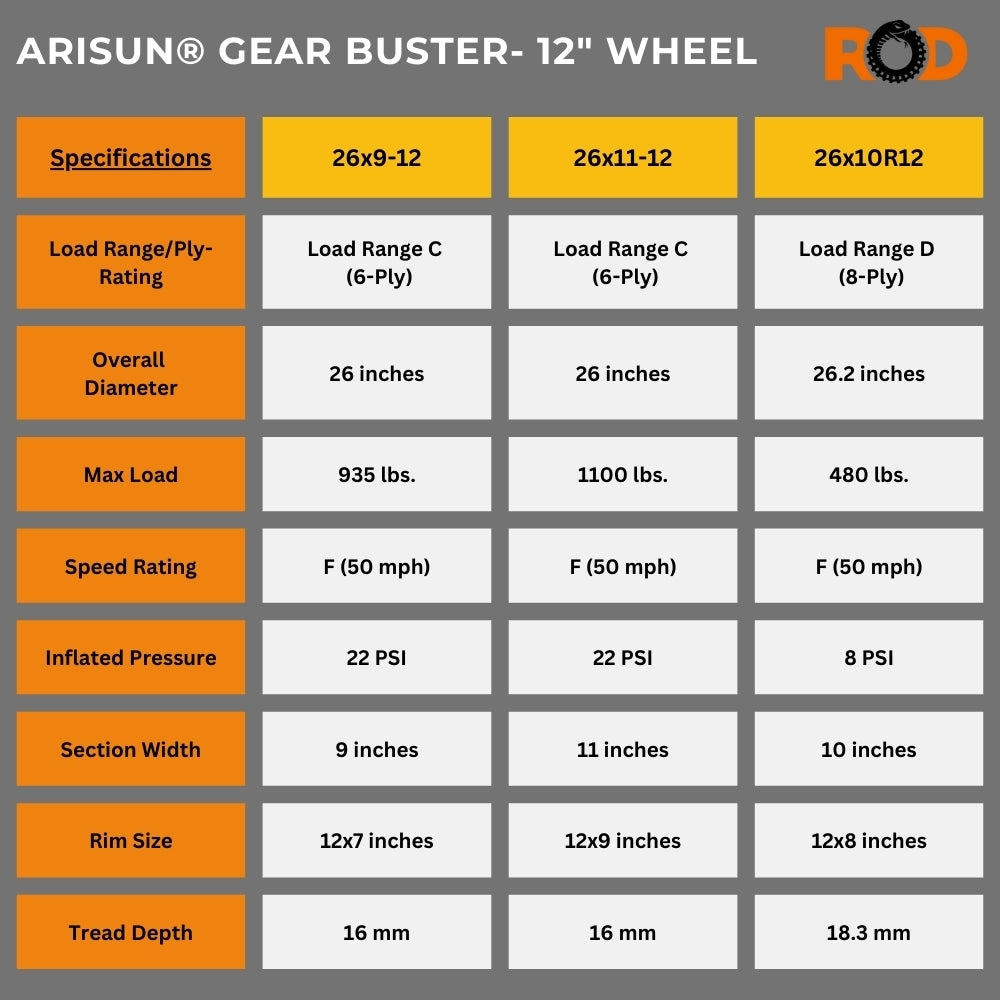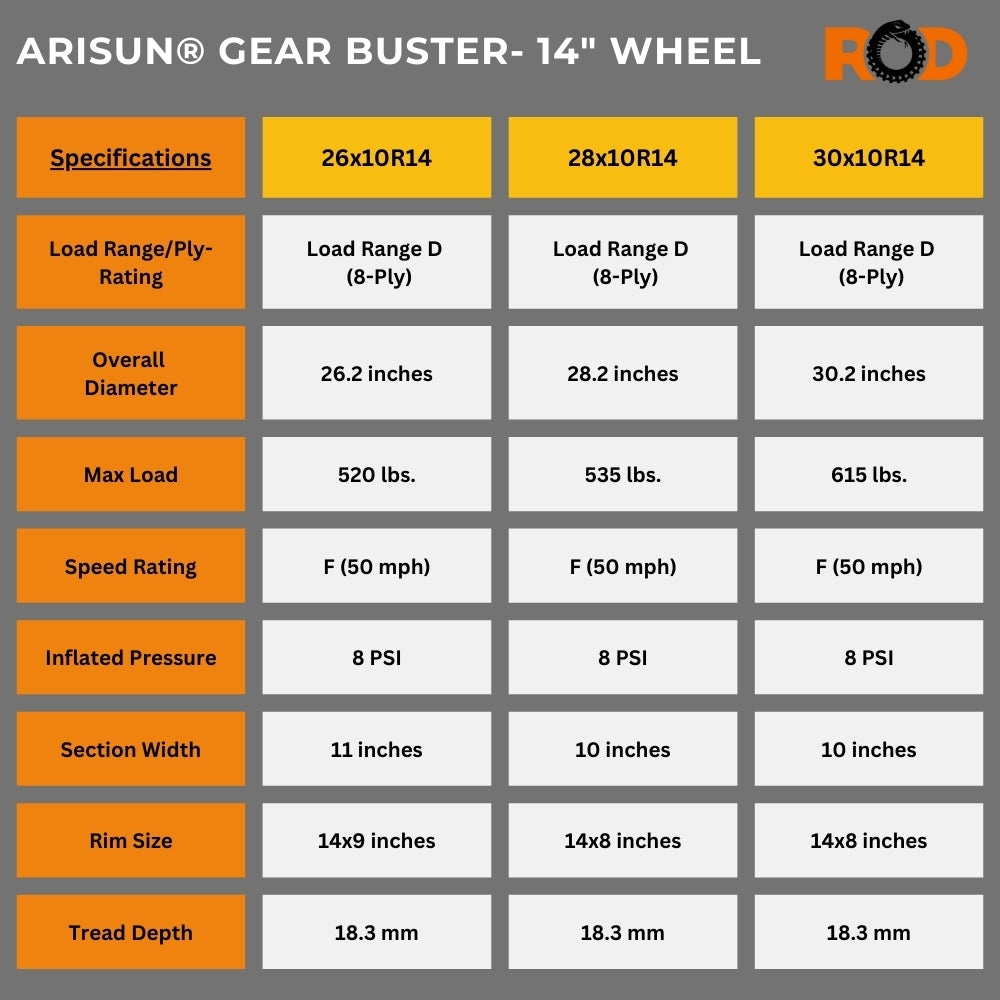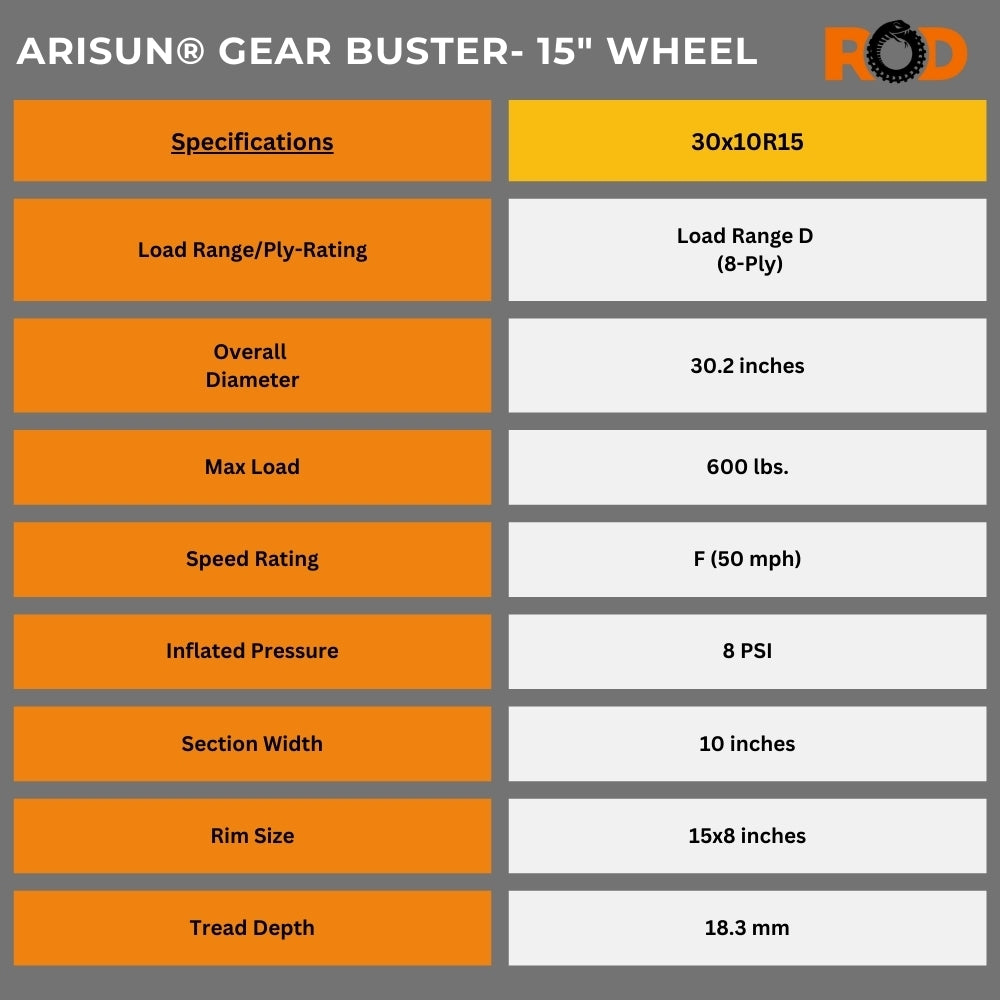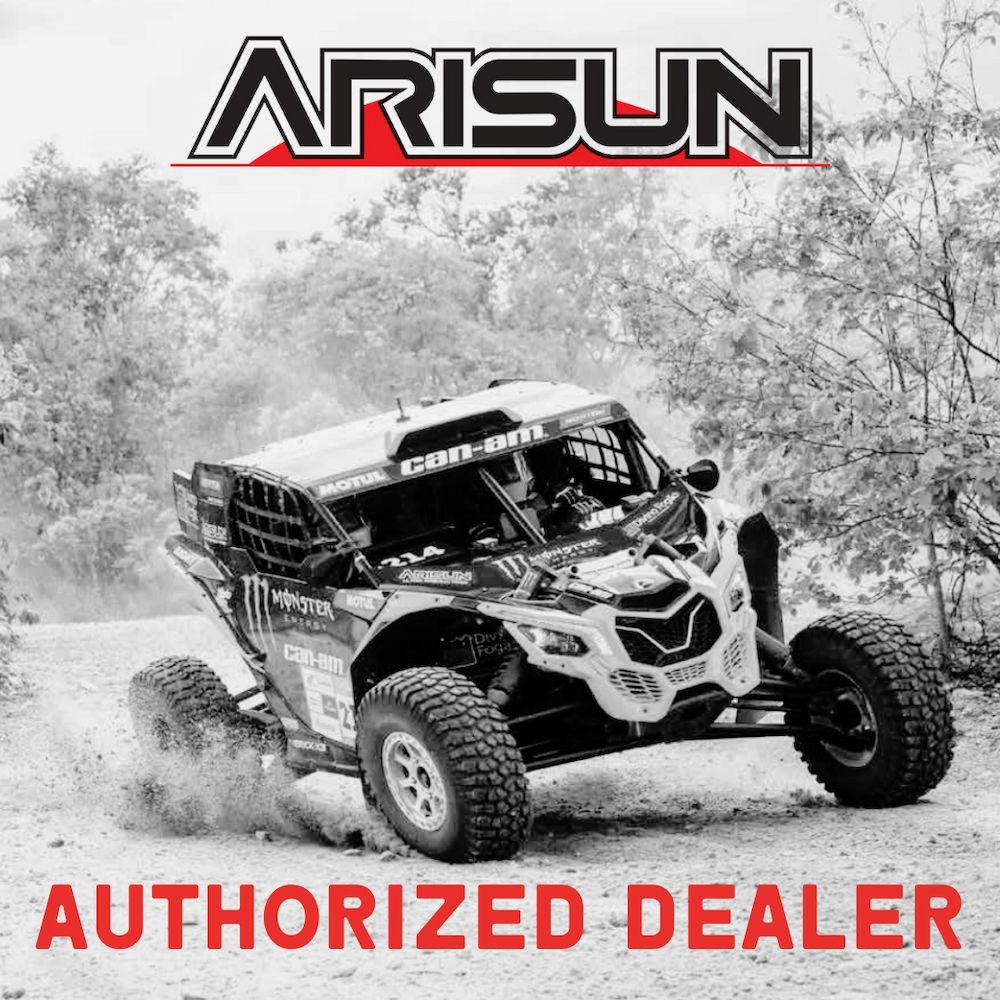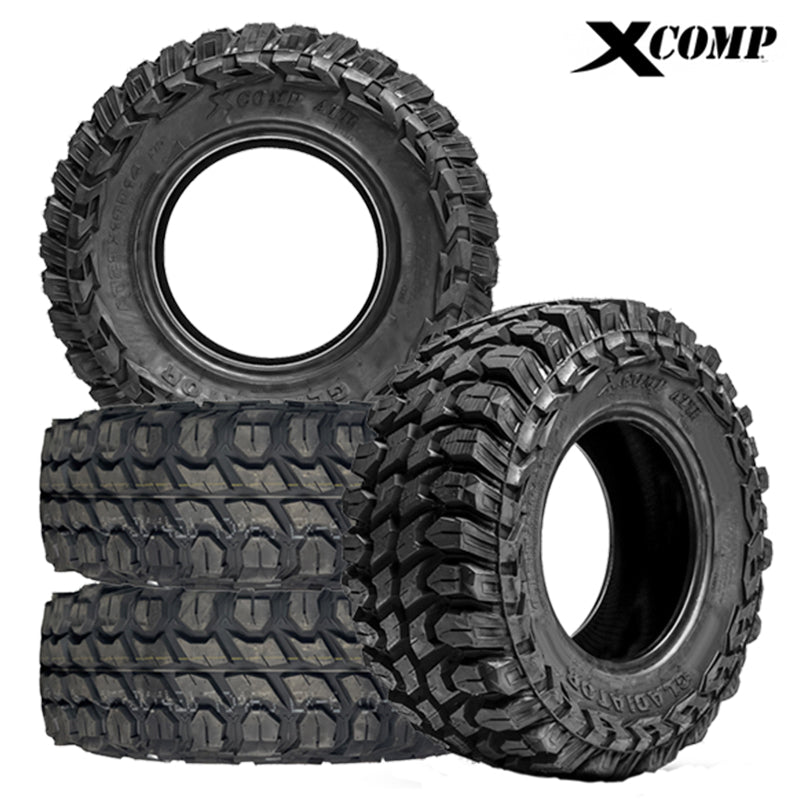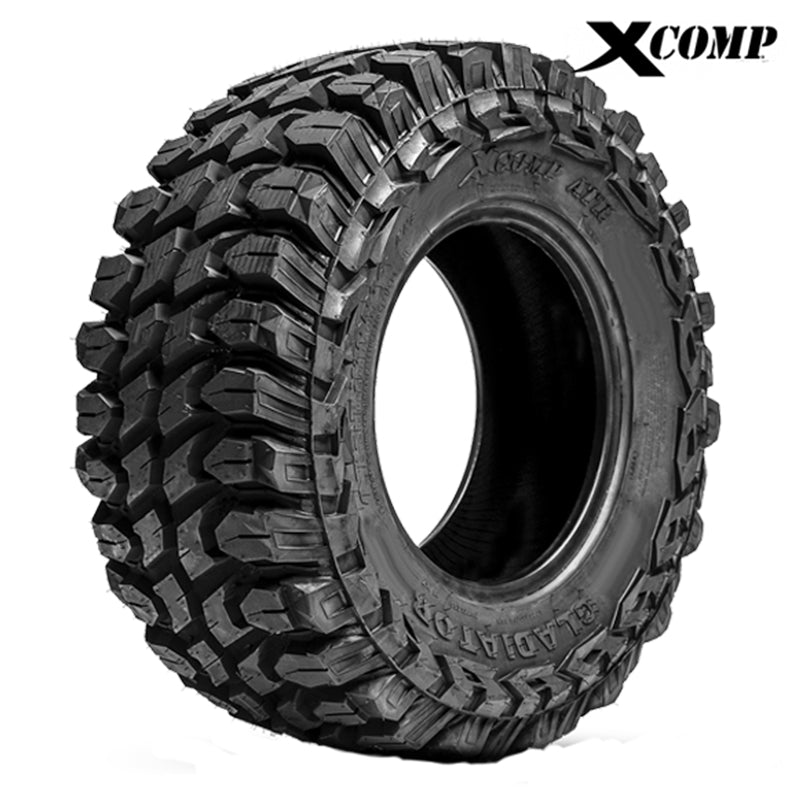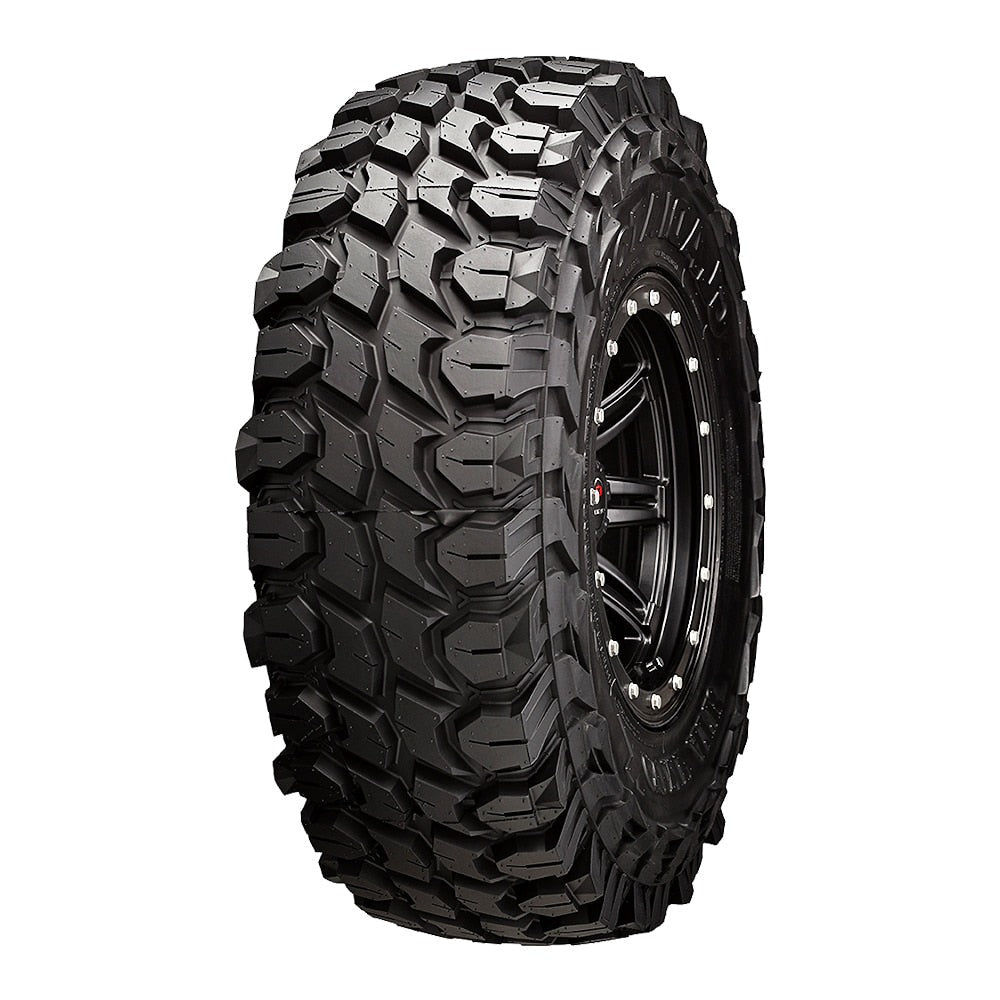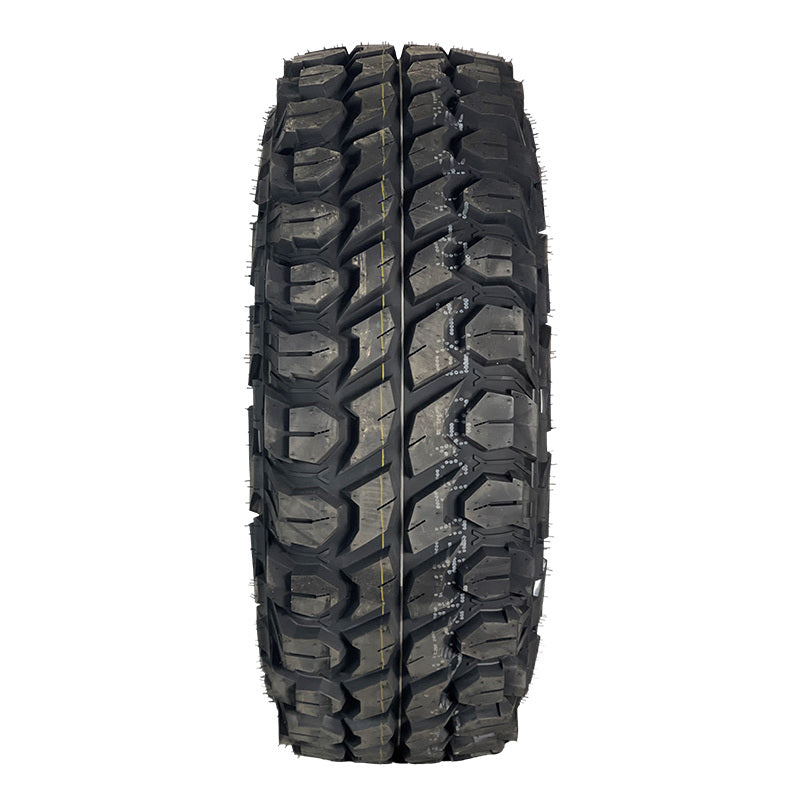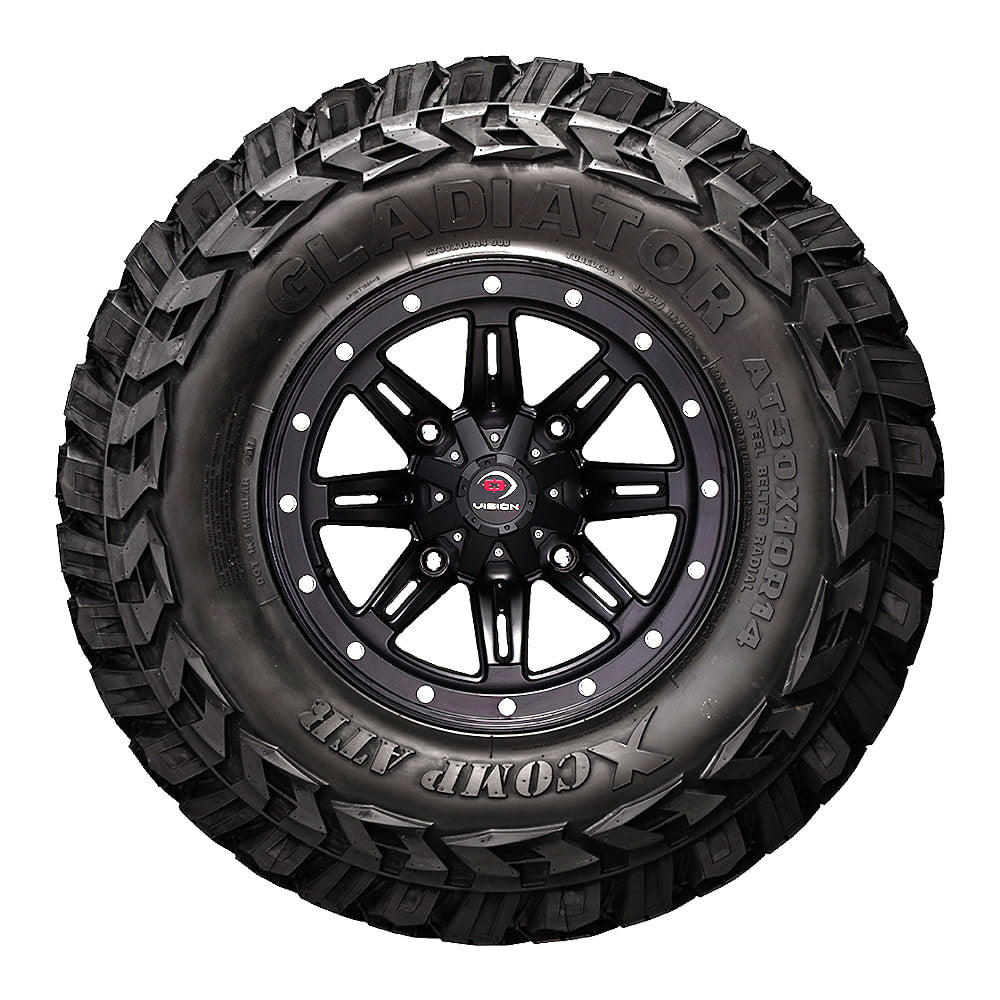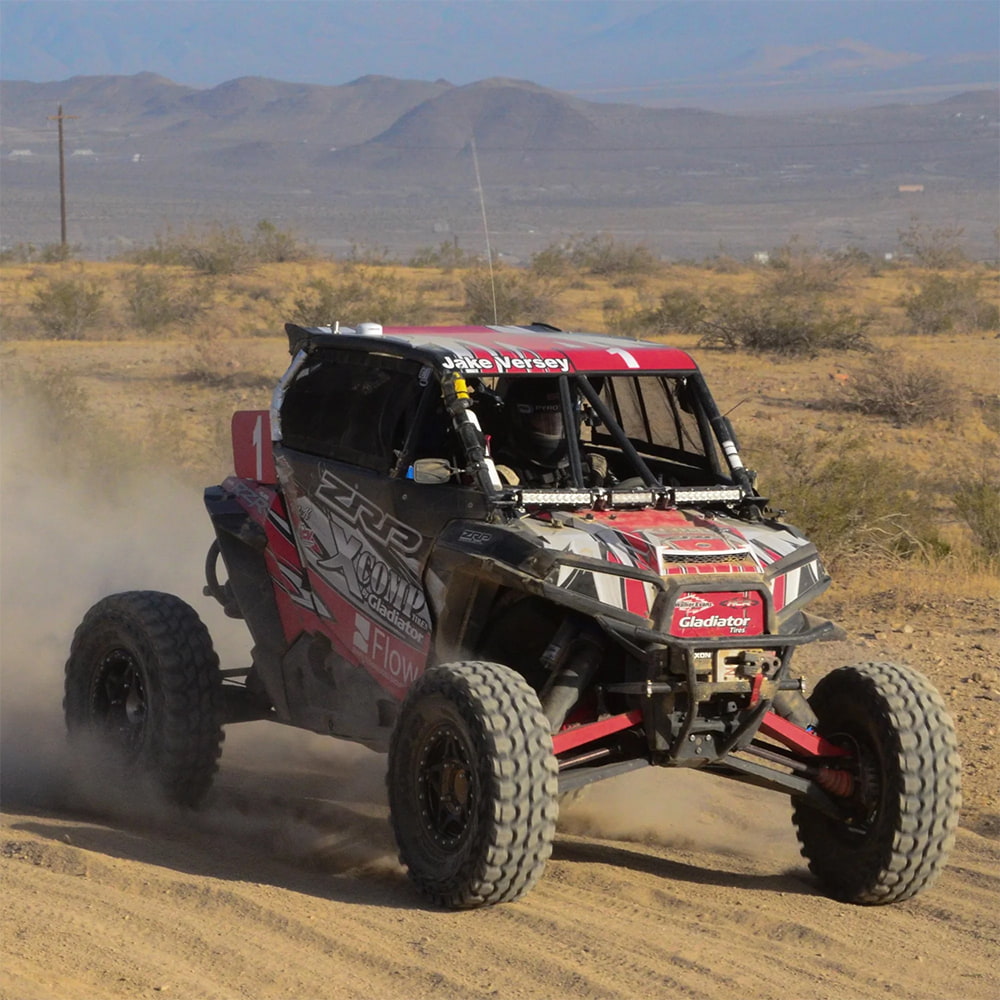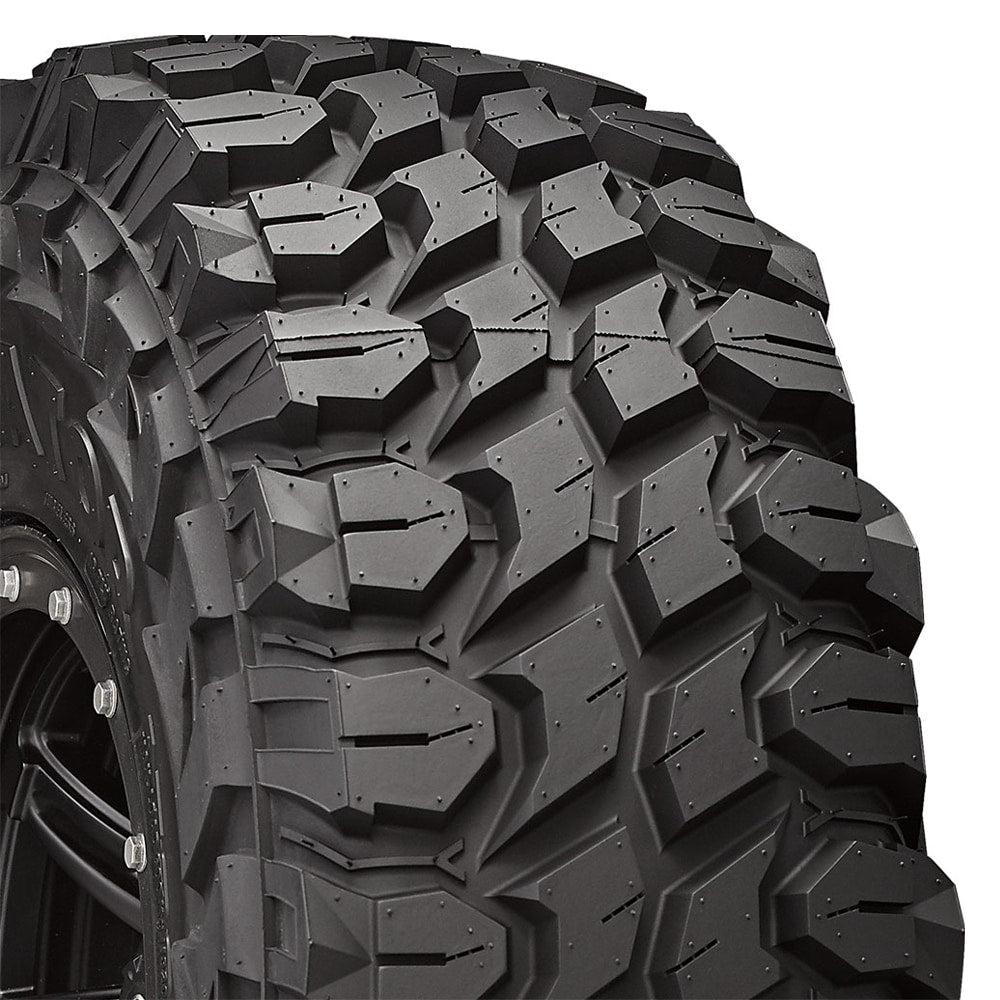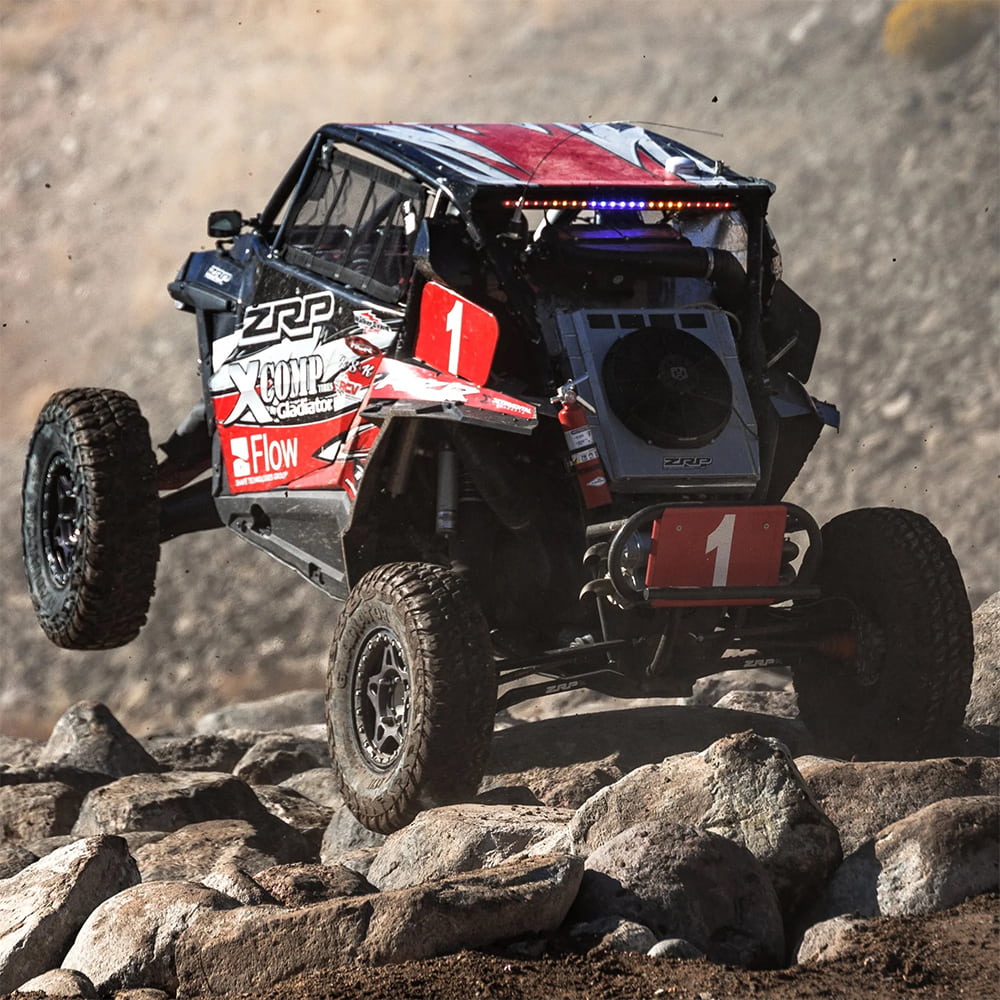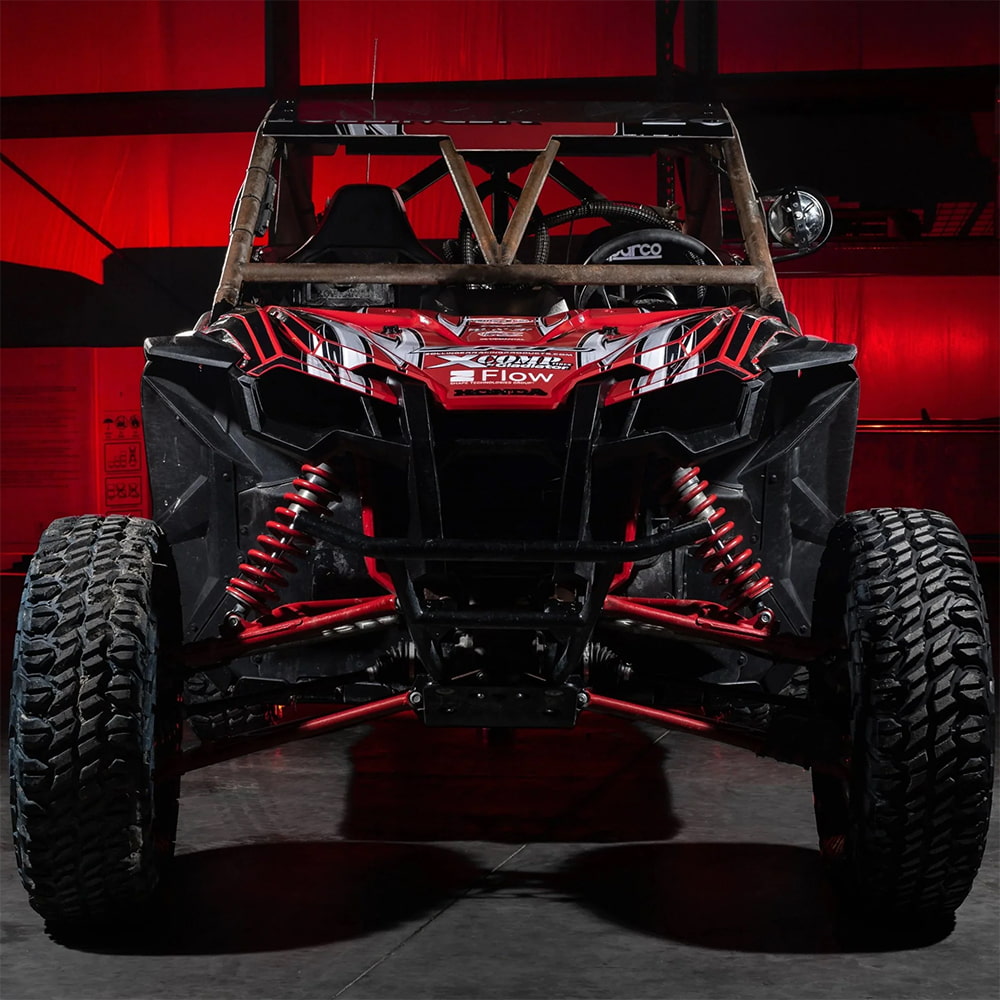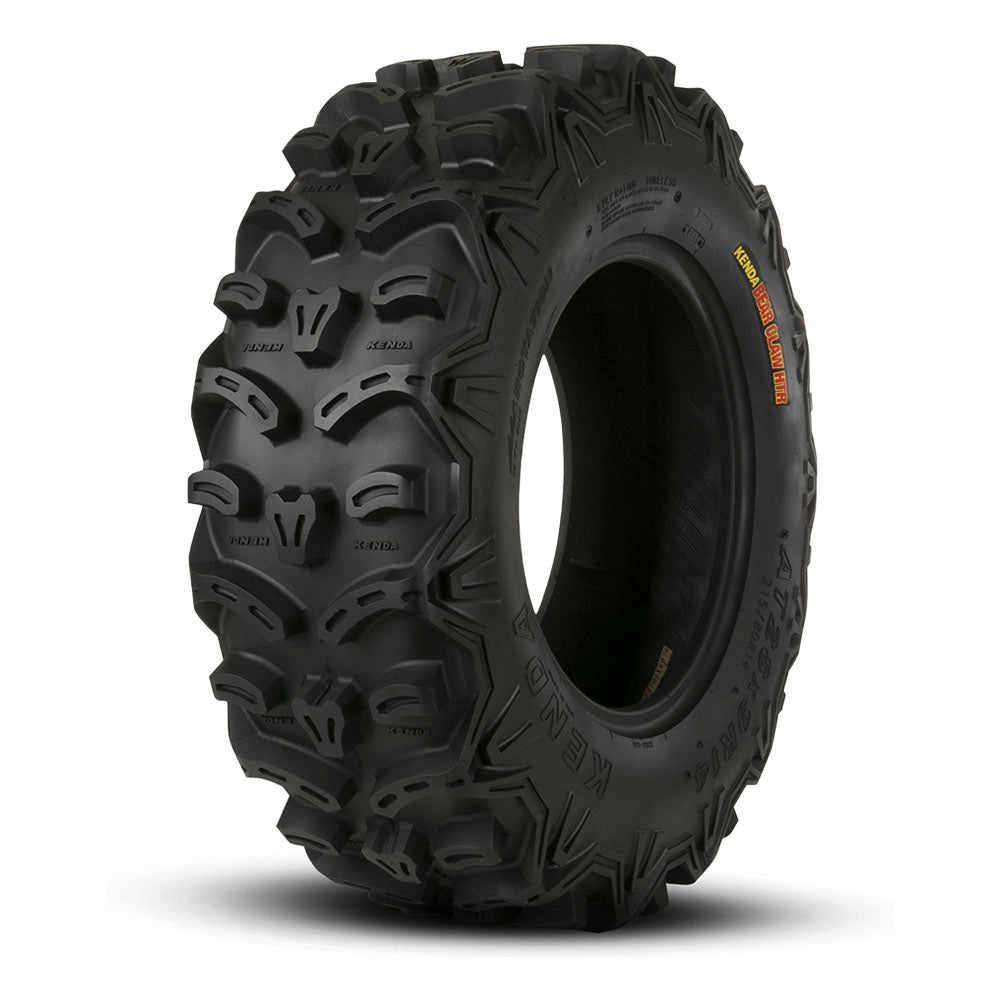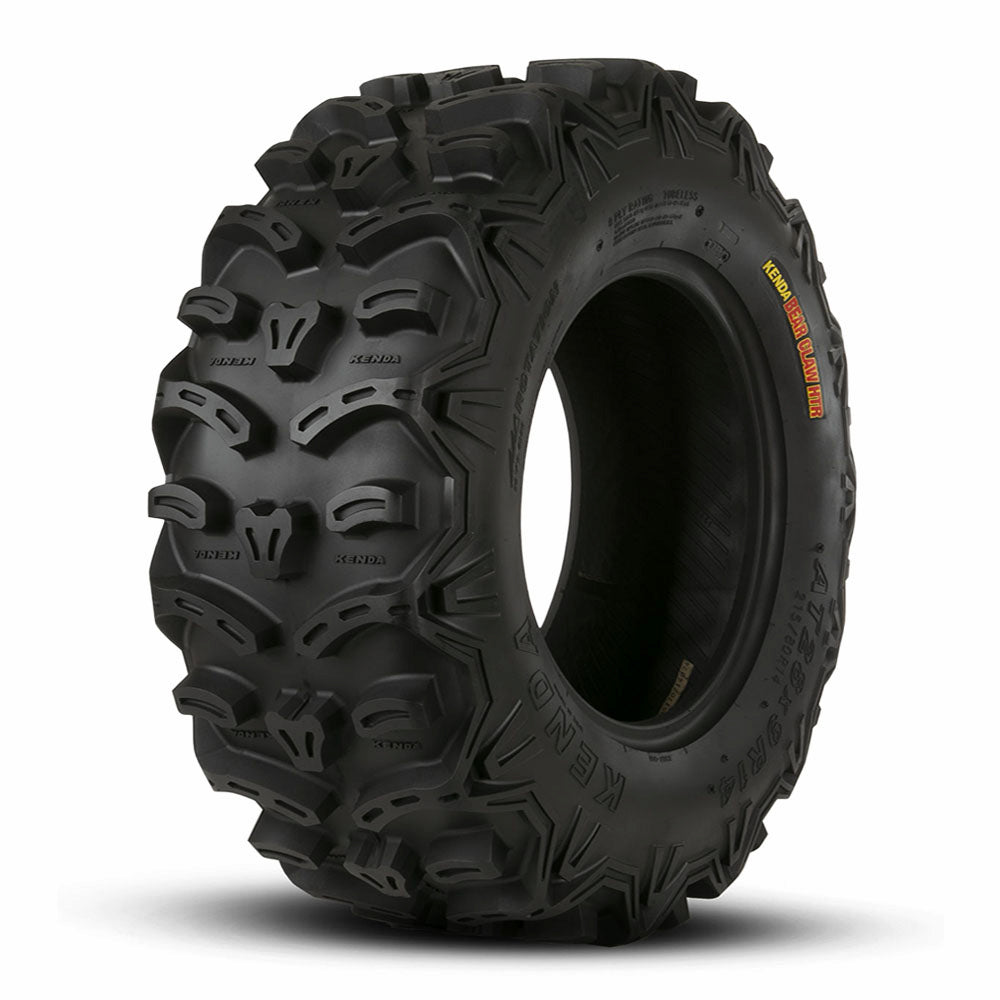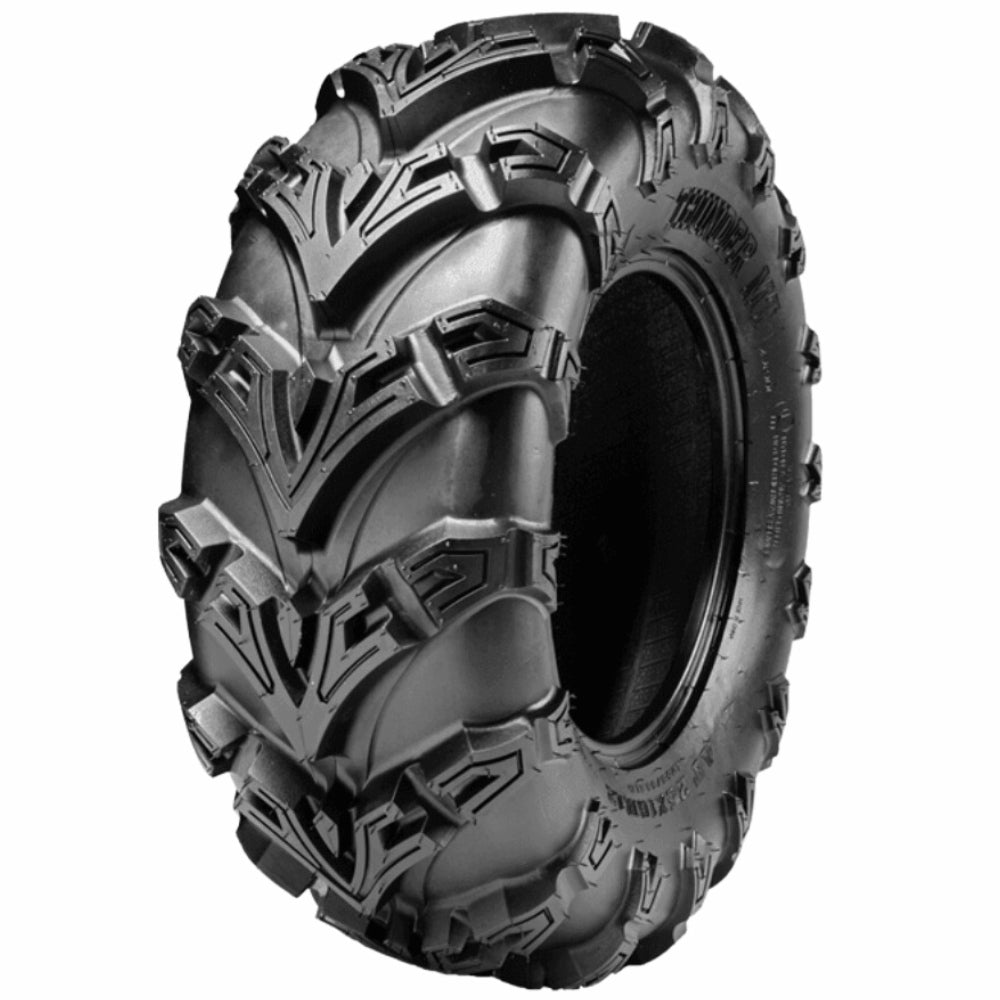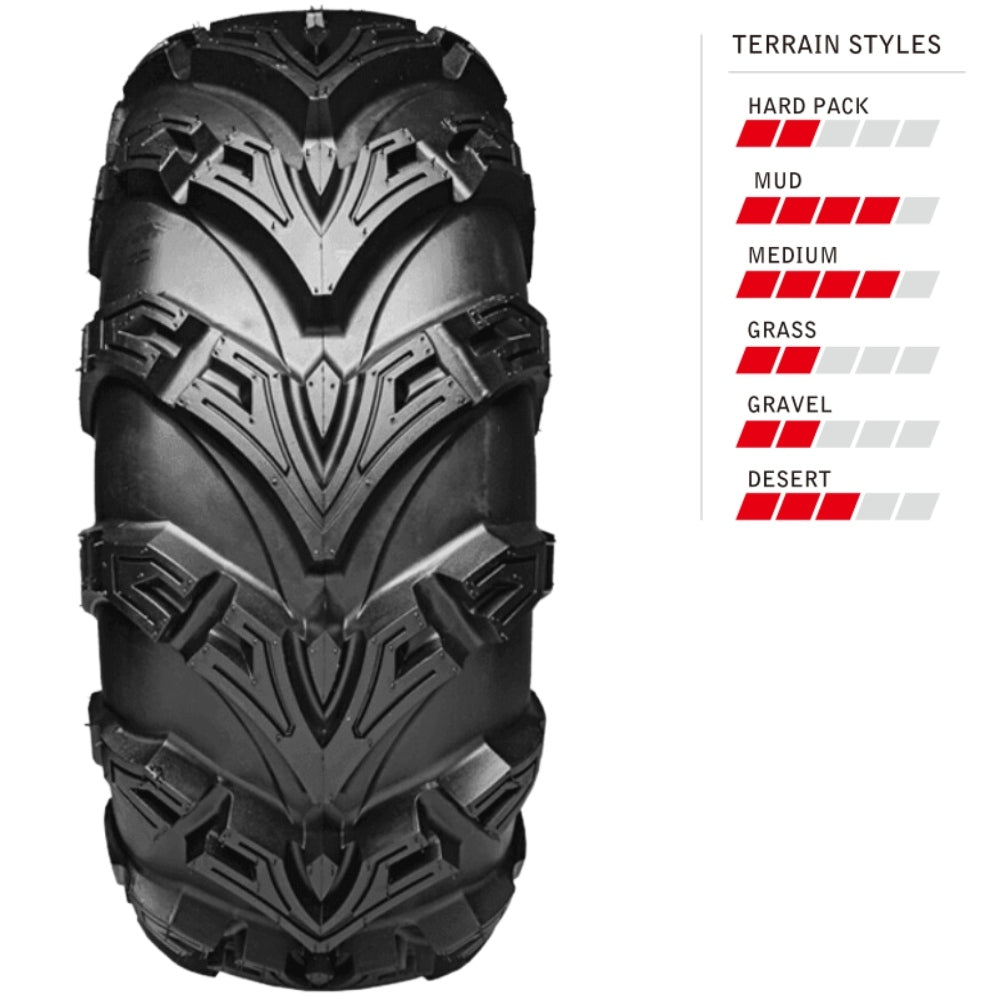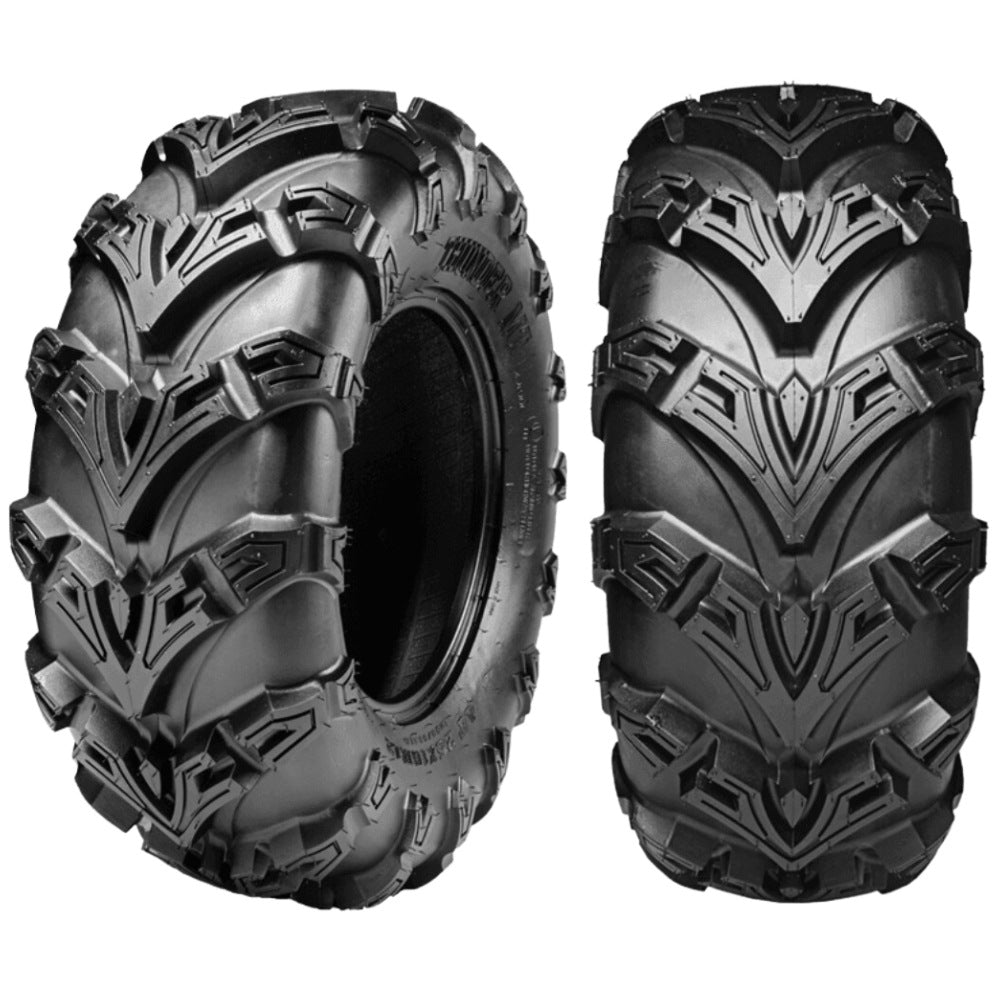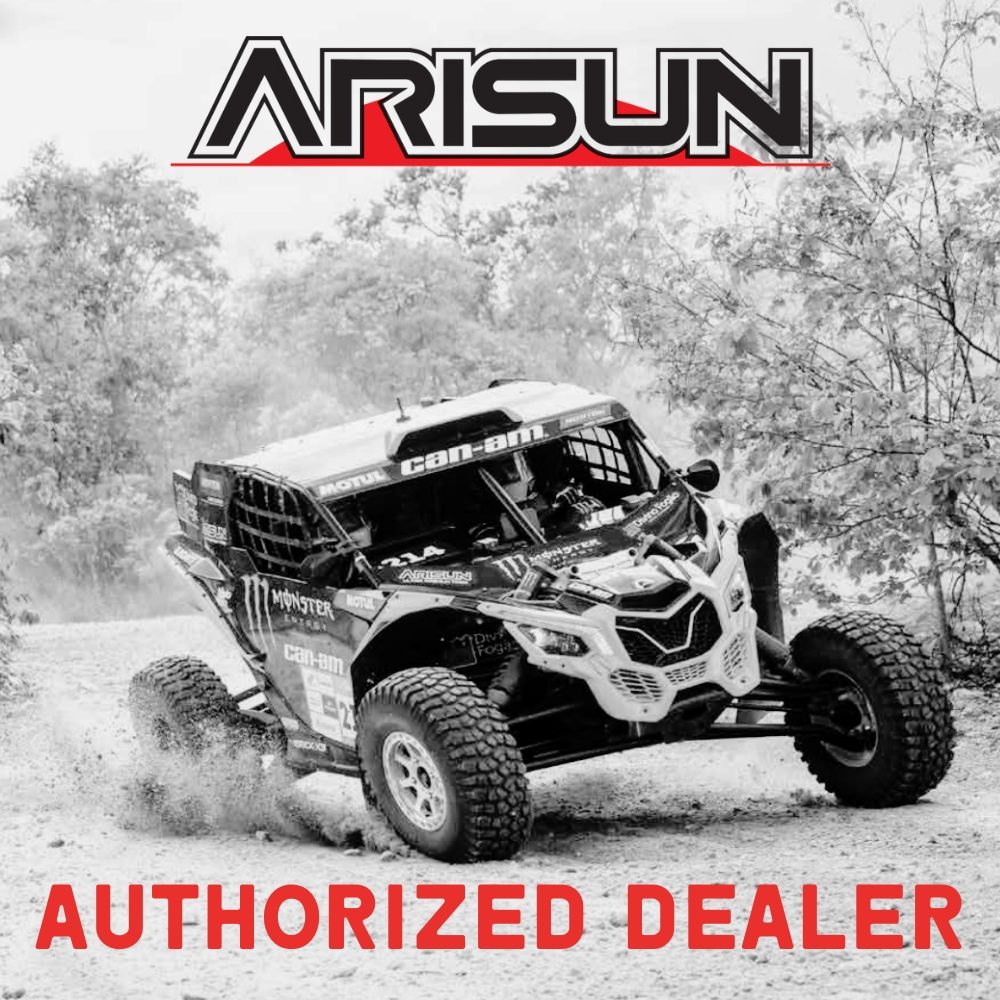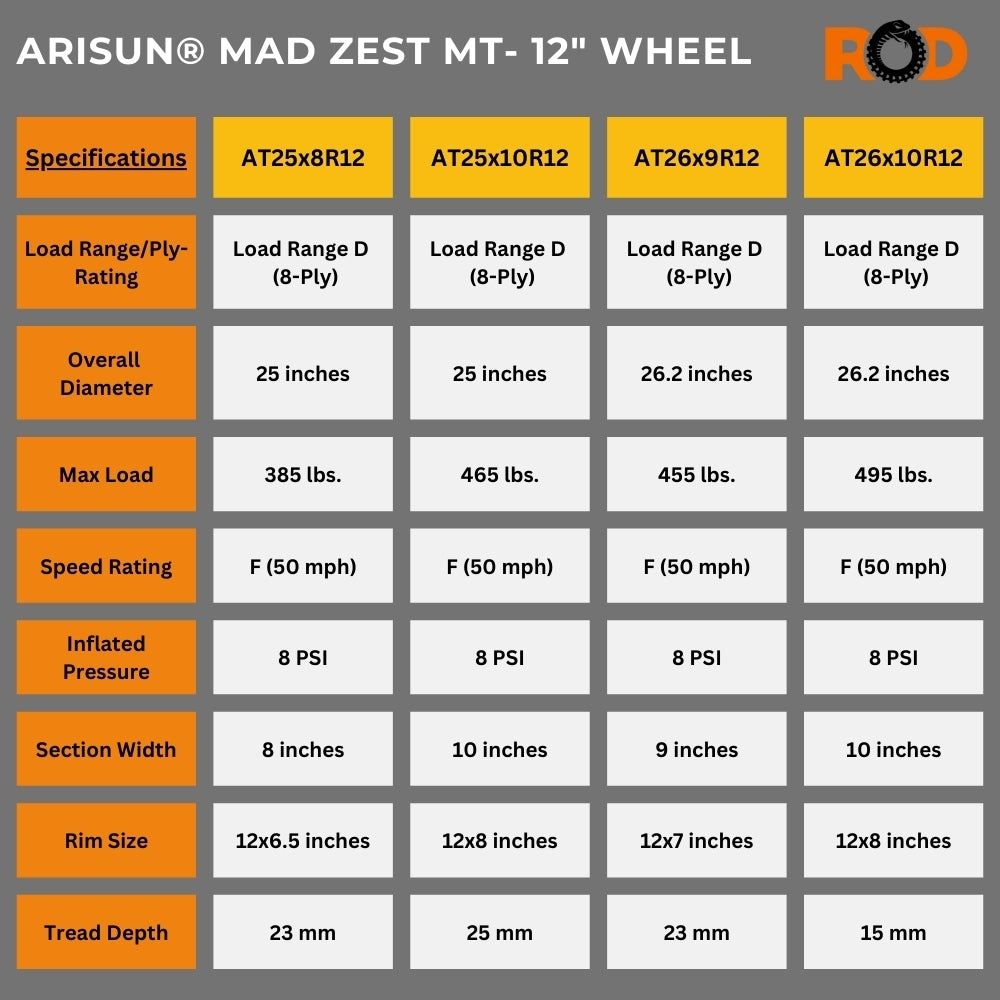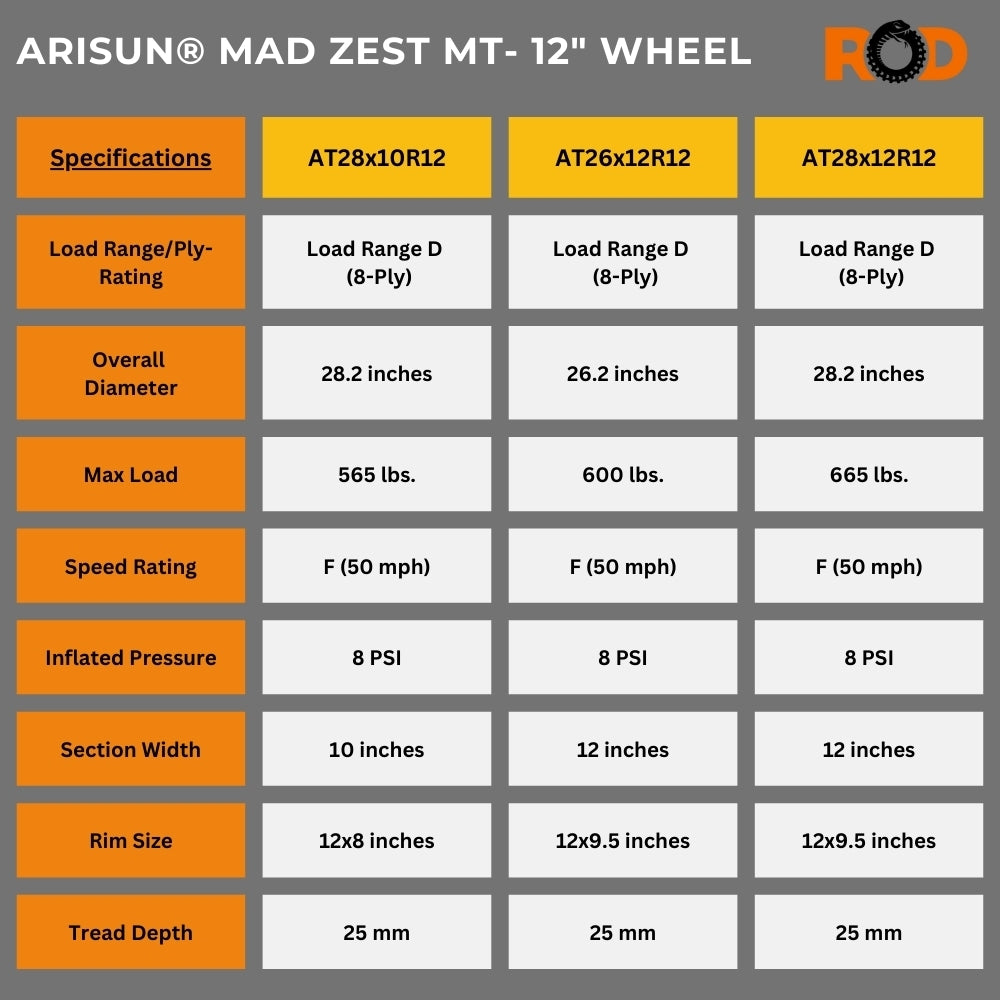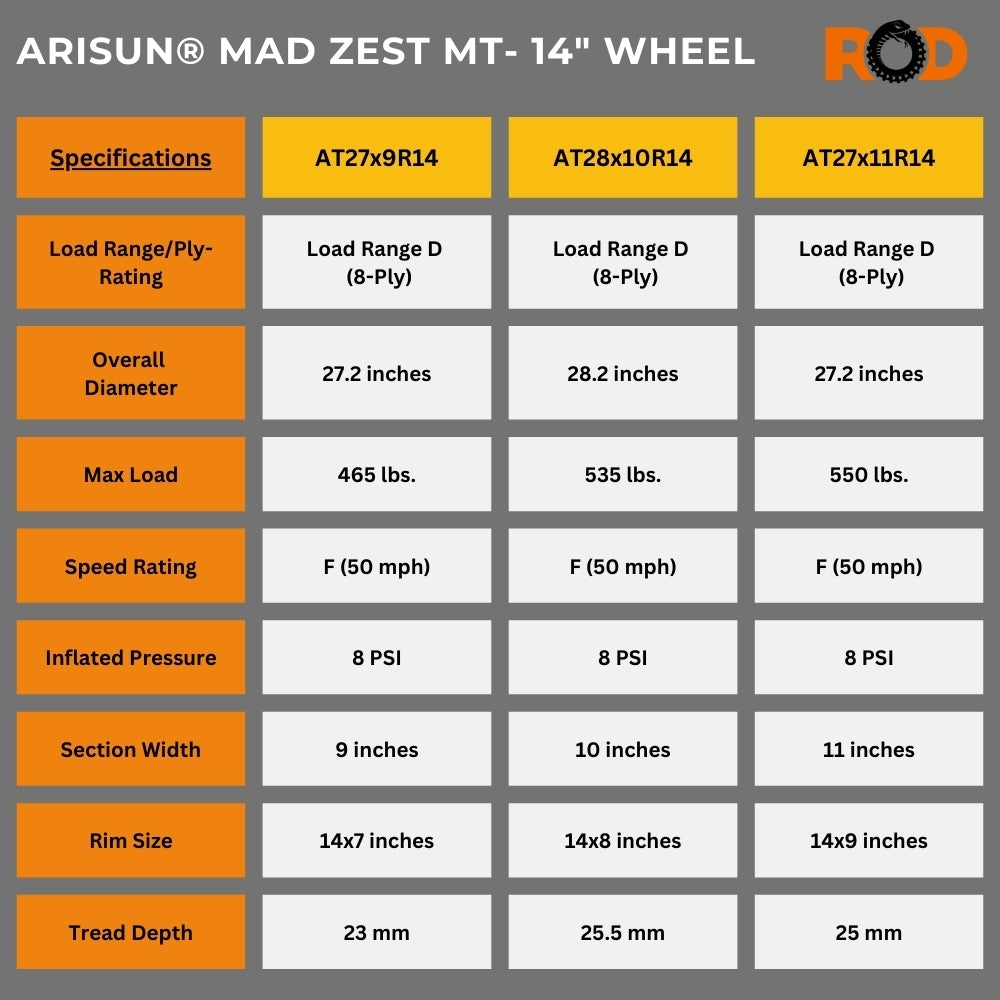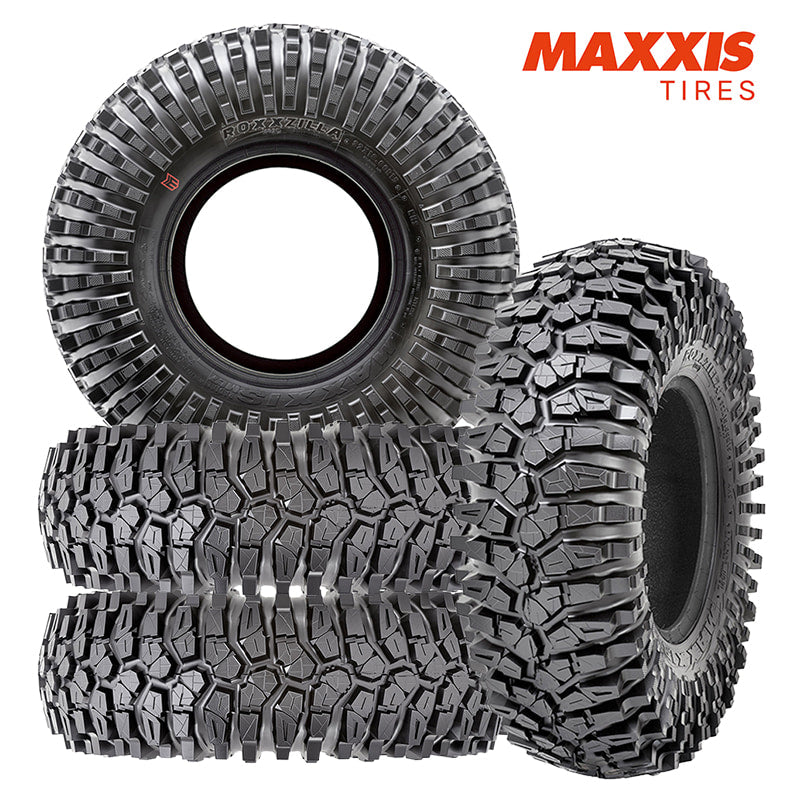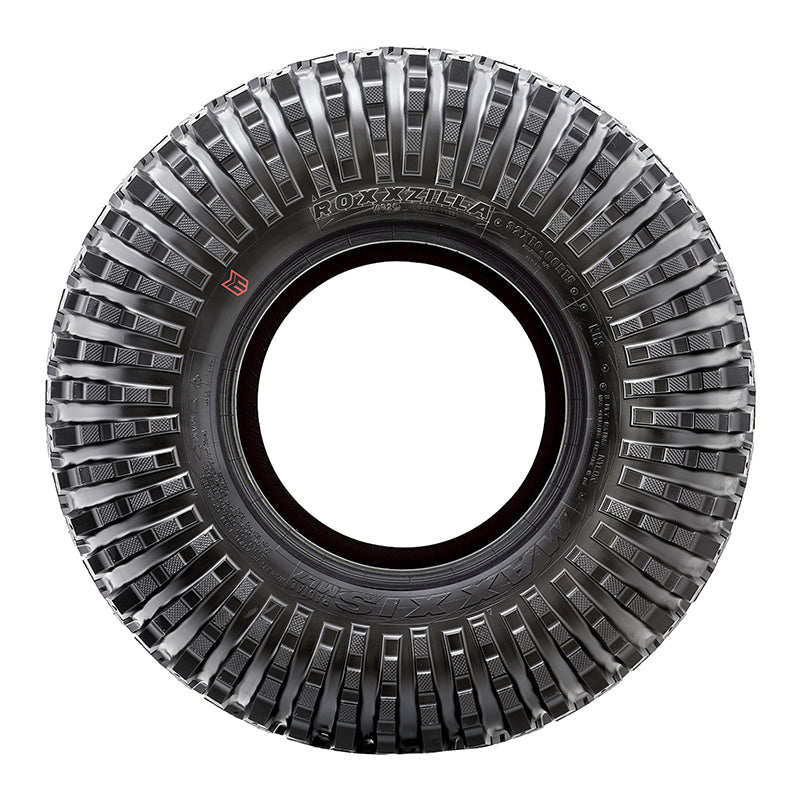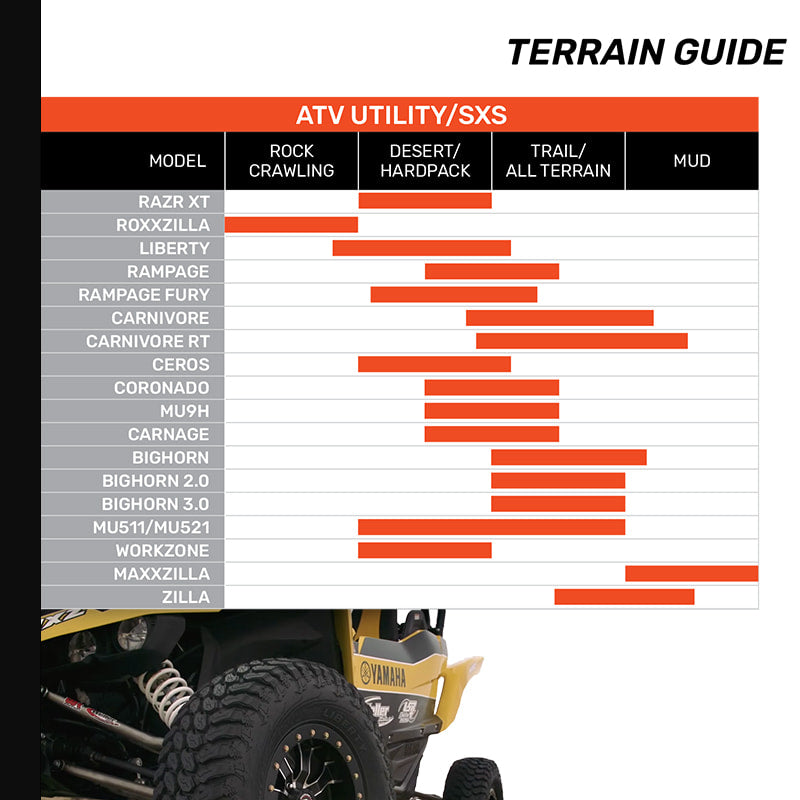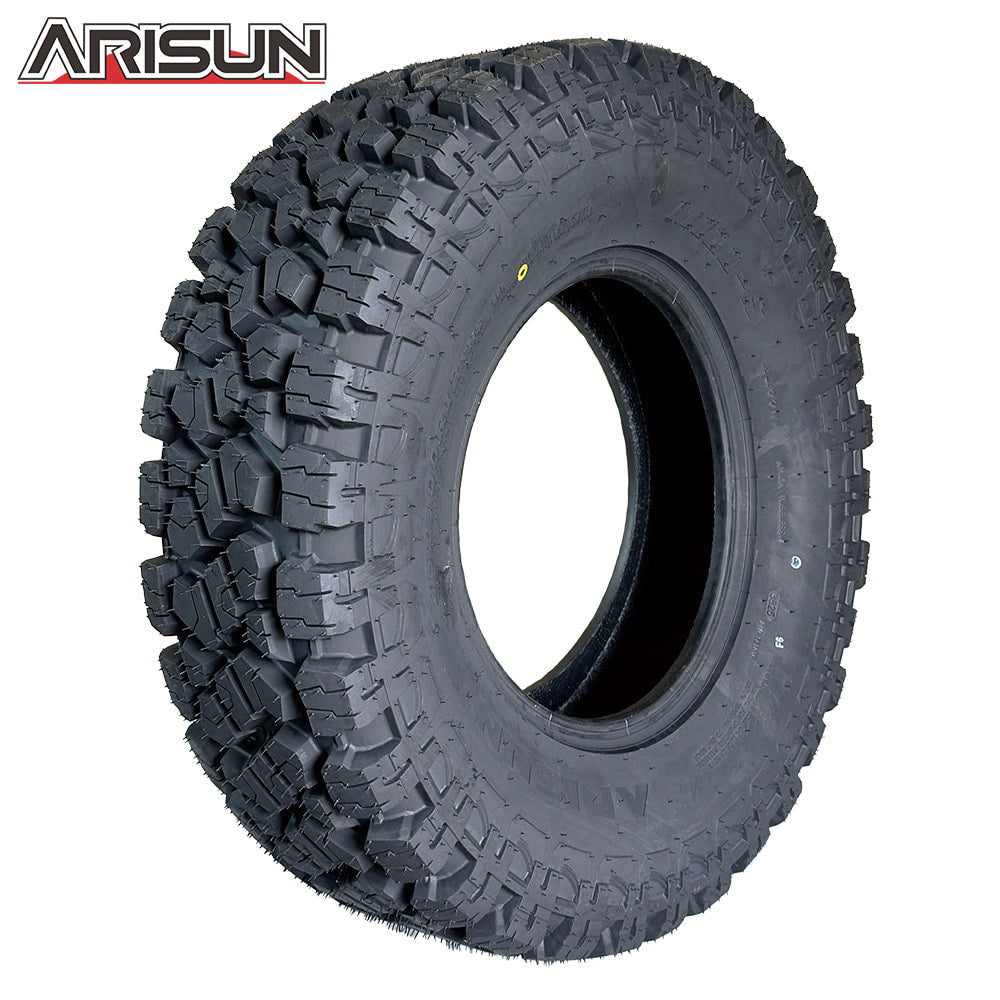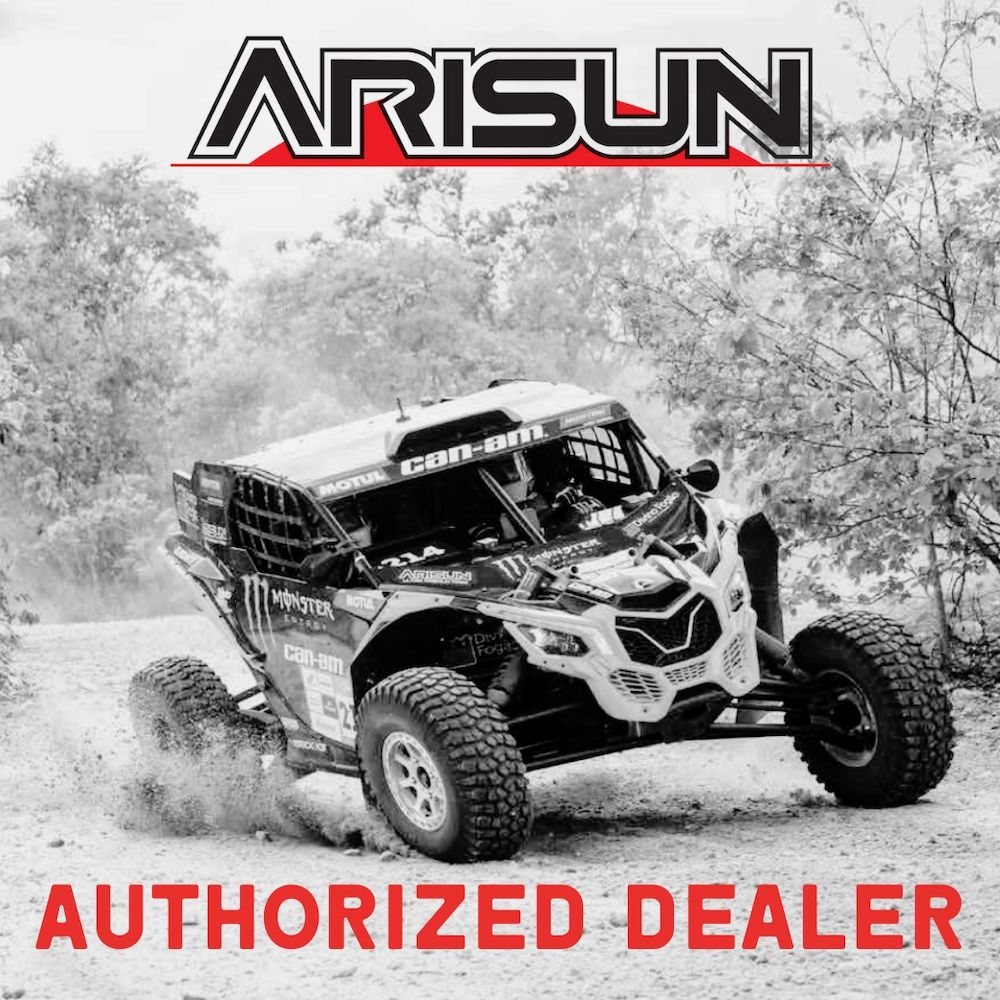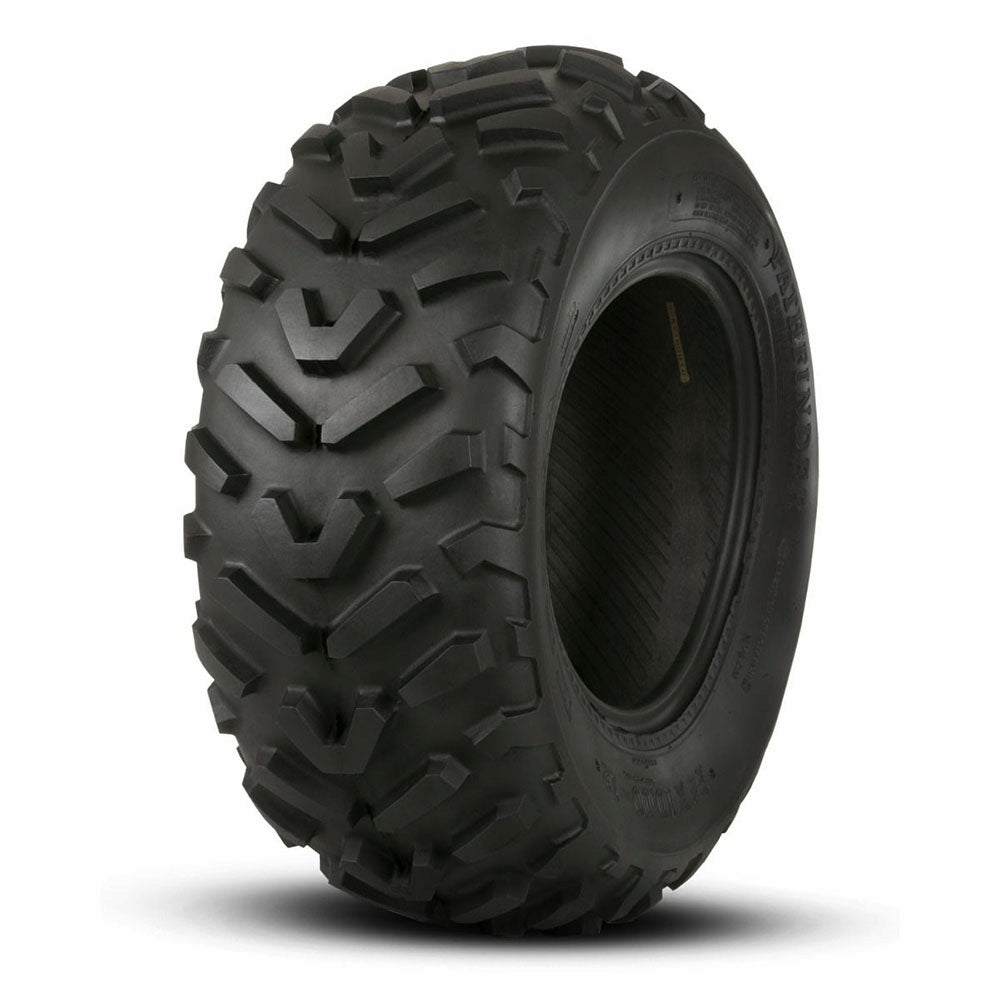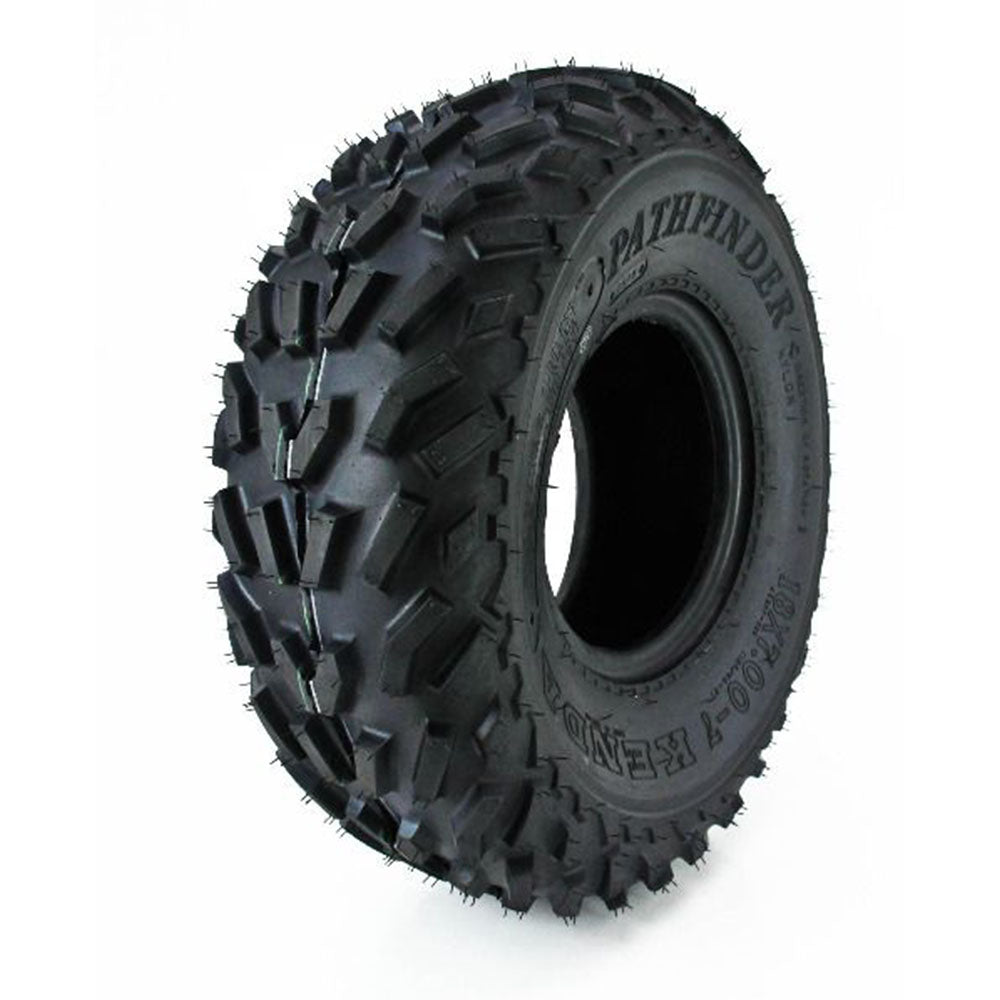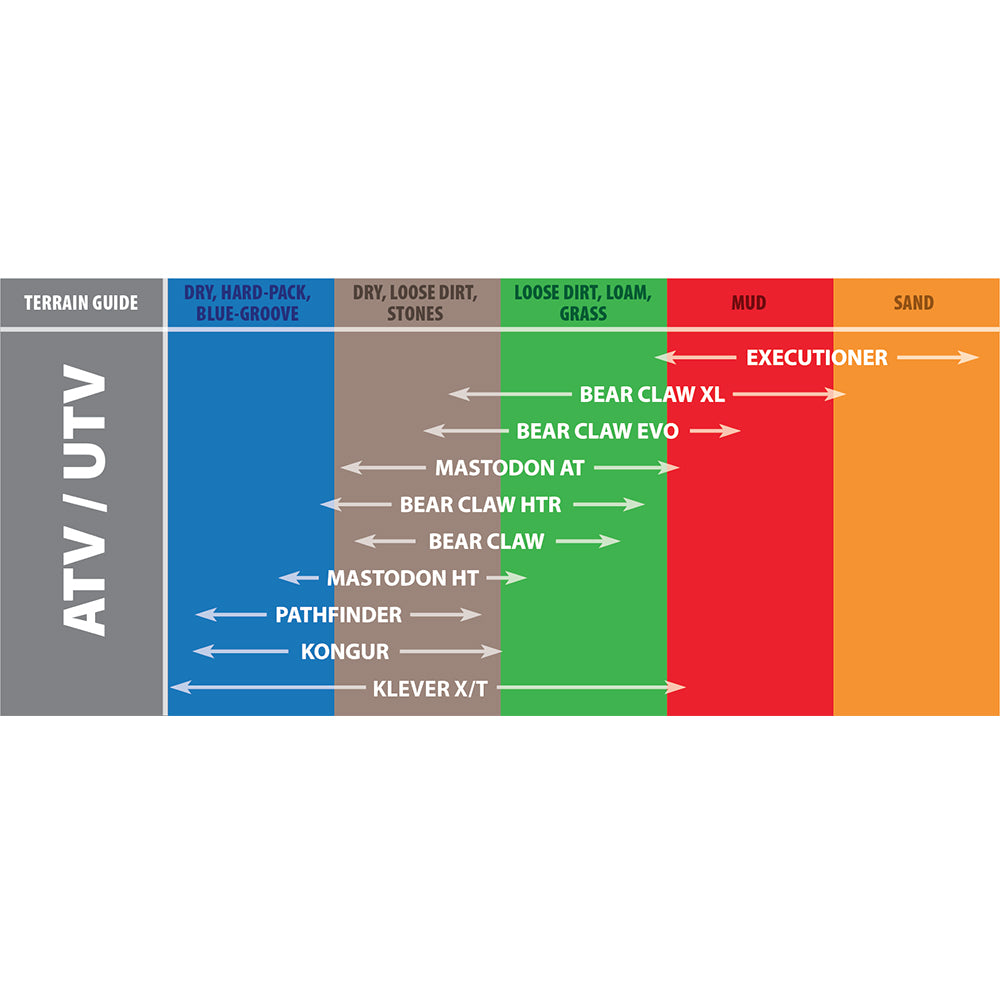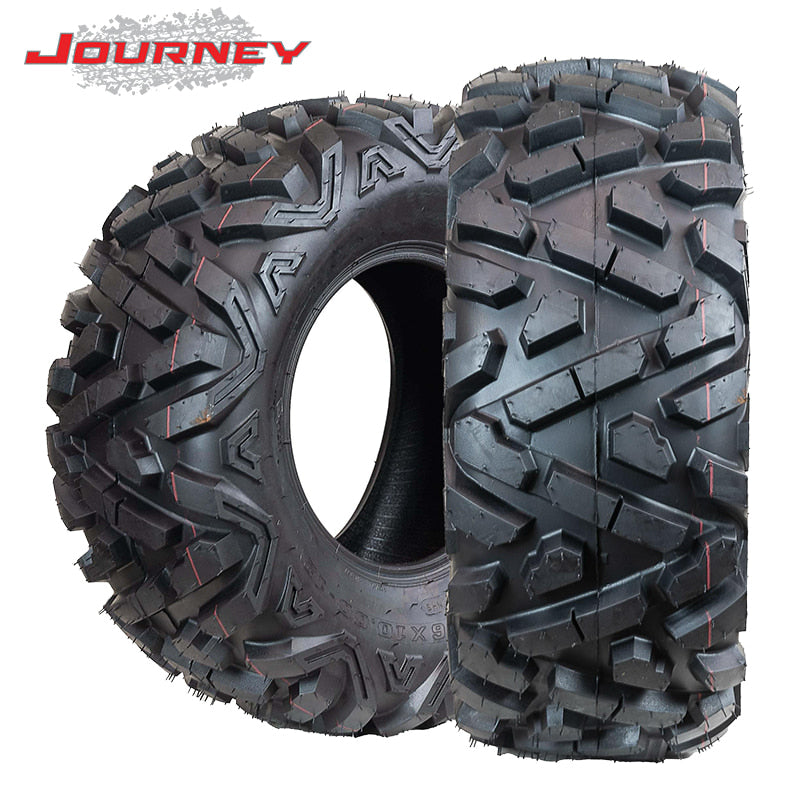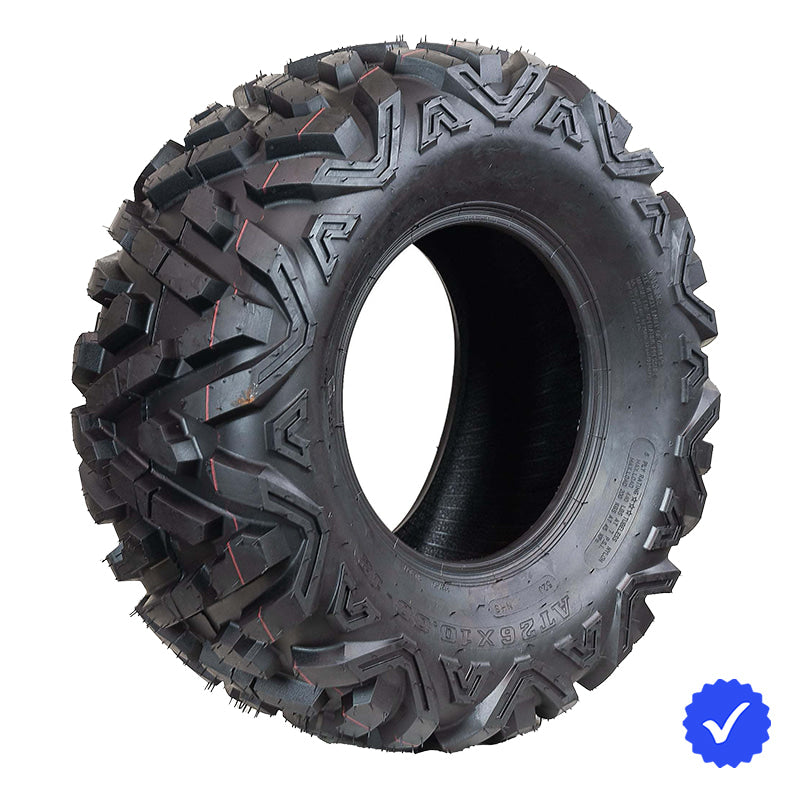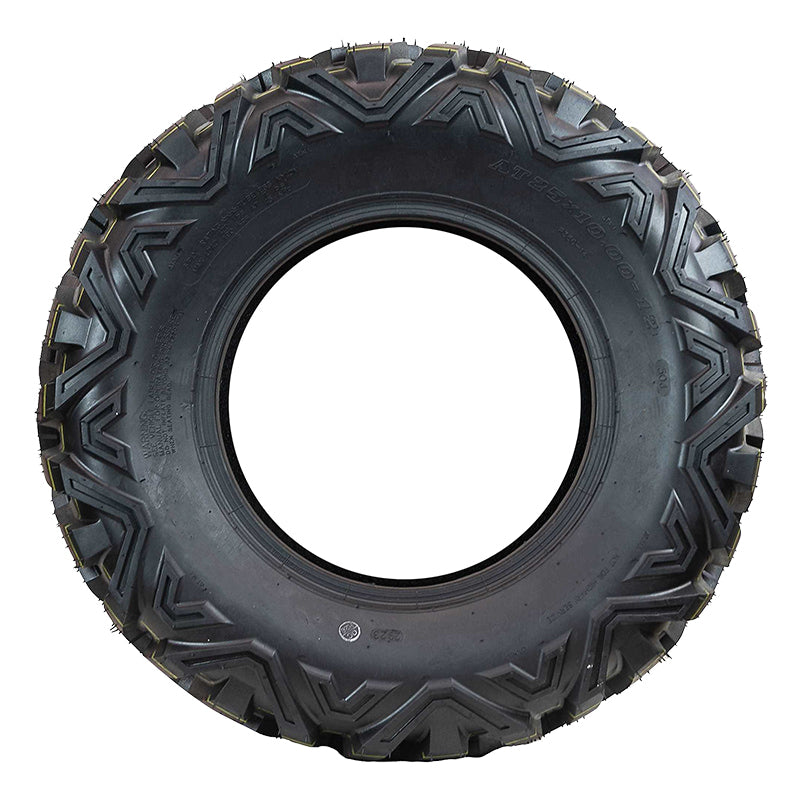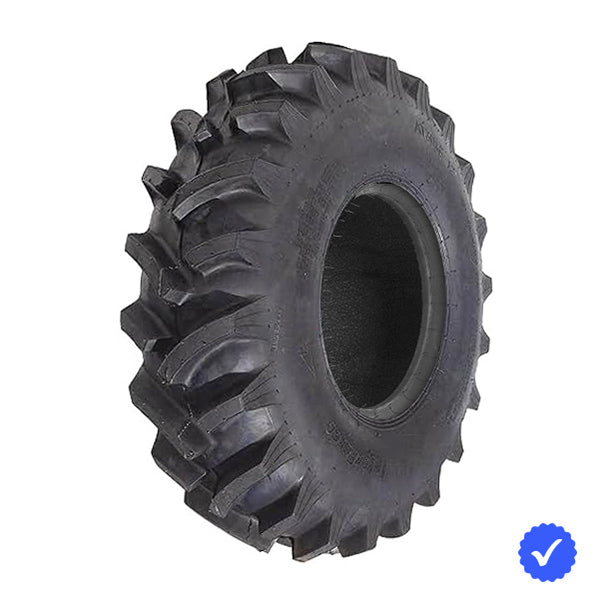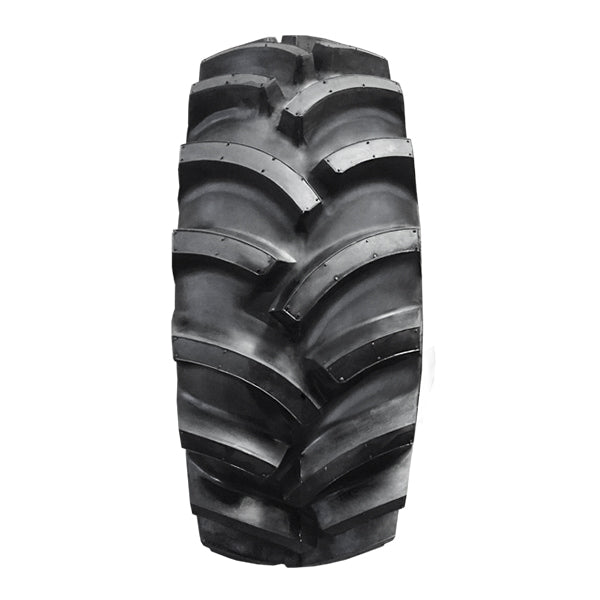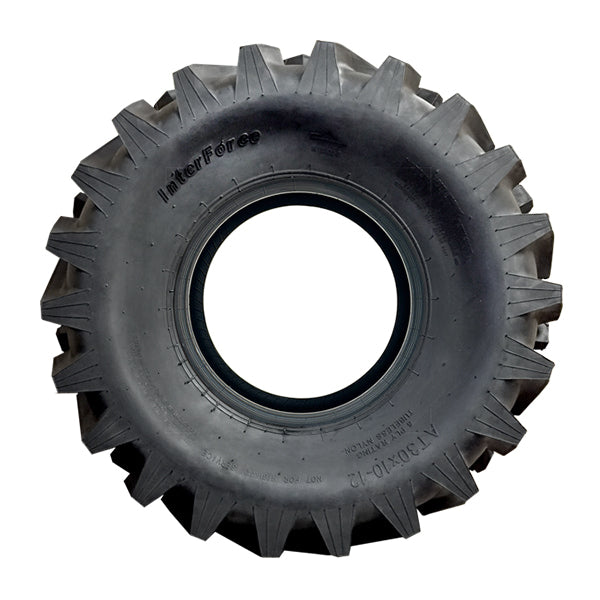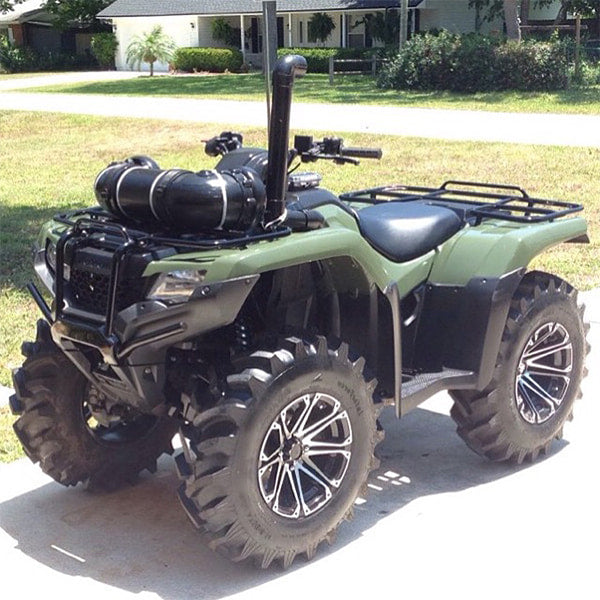UTV Tires
Conquer any terrain with high-performance UTV tires built for mud, rocks, trails, hardpack, street, and more. From deep-lugged mud tires for extreme traction to directional options for quiet street riding and versatile all-terrain choices for everyday use, we’ve got you covered. Our collection features premier brands like Maxxis, BFGoodrich (BFG), QuadBoss, ITP, Kenda, Frontline, and more. Plus, we offer a wide range of side-by-side tire sizes, making finding the perfect tire for your machine simple and easy.
Choosing The Right UTV Tire
Type: which UTV tire is right for you?
UTV tires are purpose-built for different terrains. Here is a breakdown of some of the most popular UTV tire types:
- Mud tires- These tires feature deep lugs with wide voids for maximum bite and traction. They also usually feature angled tread blocks for self-cleaning. You know a mud tire when you see one.
- All-terrain tires- AT tires come with balanced tread to handle all types of terrain. The tread blocks feature a mix of depth, spacing, and edges to handle a mix of surfaces. Great for trails, hardpack, and light mud.
- Rock crawling tires- These tires often have reinforced sidewalls and tread that extends further around the tire for grip at all angles. In addition, there are often plenty of tread blocks to ensure lots of "biting" edges. Extreme rock tires are often manufactured with a softer compound to ensure the tire's "stick".
- Racing/performance tires- Racing tires use lightweight compounds or lower ply ratings to reduce weight and maximize speed. They commonly have directional tread for increased handling and stability.
- Street tires- Less aggressive and tighter tread blocks allow for quieter, predictable handling on pavement and hard surfaces. Many street tire models feature directional tread patterns for a smoother ride.
Choose the tire type that matches your primary terrain and load needs to get the best traction, wear life, and ride feel.
Price: what UTV tires typically cost (per tire)
Tire prices vary widely depending on size, ply rating, tire compound, and brand. Larger diameters, high ply ratings, and specialty compounds will push the prices toward the top of the range. Here is a breakdown of the average price of budget, mid, and premium UTV tires:
- Budget/entry tires- $35-$100
- Mid-range tires- $100-$175
- Premium/specialty tires- $175-$300
These ranges reflect averages across the industry. Individual tire prices can vary widely.
Brands: popular, reliable UTV tire makers
Market leaders you’ll see most often include Maxxis, ITP, Kenda, BFGoodrich (BFG), QuadBoss, GBC, Carlisle, Pro Armor, Interco plus a number of specialty and value brands. These brands have built a reputation for quality, and their tires receive high praise from users. Brand choice is a matter of personal preference, and each brand has its own strengths and weaknesses. Review tread patterns, ply rating, and user reviews when choosing a UTV tire.
Weight / Load: how much each tire can handle?
UTV tires list load capacities on the sidewall or in manufacturer specs. Typical load ratings vary by model and size, but many UTV tires support several hundred pounds per tire (examples commonly in the 500–1000+ lb per-tire range depending on size/ply). Add up the four tires to approximate gross vehicle carrying capacity and choose higher load-rated tires if you frequently carry passengers, cargo, or roof/bed accessories. (Always confirm exact ratings from the tire maker for your chosen model.)
Traction: Where do UTV tires perform best?
As we discussed in the first question, UTV tire treads are designed to perform on specific terrains. Here's a breakdown of different terrain types and which SXS tires work best for each.
Mud/Sand/Snow/Loose Loam
Side-by-side tires that excel in snow, loose loam, sand, and other soft terrains are characterized by tread blocks with wide spacing and significant depth for maximum traction. This extra-deep spacing allows the tire to "sink" and grab large chunks of terrain, which is essential when the landscape is loose and easily displaced. Tires for this terrain also typically operate at lower PSI to increase the tire contact patch and maximize flotation.
Hard Pack/Trail/All-Terrain
Tires for this terrain type are often characterized as "AT" or "All-Terrain" tires. They feature an ideal mixture of tread depth and spacing that isn't too deep to fit the mud category, but still offers plenty of grip and traction for handling some loose soil and light mud. With numerous tread block edges, these tires provide excellent "bite" on densely packed dirt, small rocks, roots, and unsteady, slightly muddy ground.
Rock/Extreme Off-Road
Tires that excel in rock crawling feature very aggressive tread patterns paired with softer ("sticky") rubber compounds to maximize gripping power*. Similar to mud and loose loam tires, rock and extreme off-road tires feature deep lugs with wide voids. They also include reinforced sidewalls to prevent punctures and sidewall lugs that increase traction on steep and/or sideways angles. Finally, rock crawling tires are typically taller to improve ground clearance and increase approach and departure angles, helping prevent your UTV from scraping and bottoming out.
*This can often come at the expense of tread life, so be aware of the trade-offs.
Street/Pavement/Concrete
UTV tires designed for use on streets and other hard surfaces feature shallow, closely packed tread blocks. The closely packed tread prevents the loud hum that occurs with more aggressive tires at higher speeds. This design also ensures consistent ground contact, which is critical for sensitive steering and handling while preventing the floating and wobbling that can occur when driving on hard surfaces. There aren't many "pure" street tires designed for UTVs or side-by-sides, so you often need to find a less aggressive all-terrain tire instead.
Air pressure: recommended PSI ranges
Recommended PSI depends on tire model, load, construction, and terrain. Each tire has a manufacturer’s recommended PSI that serves as the optimal starting point. UTV tires typically range between 7–20 psi, though some heavy-duty models can go into the 20–30+ psi range. Bias-ply tires usually have lower recommended pressures, while radial and steel-belted tires can handle higher pressures. Ply rating affects load capacity, which in turn can influence how much PSI a tire can safely carry. Always start with the manufacturer’s recommendation, then fine-tune for load and terrain.
Width / Fitment : what size tires will fit my UTV?
UTV tire fitment is determined by tire diameter, section width, wheel diameter, and wheel backspacing/offset. Common side-by-side tire diameters include 27", 28", 30", 32", and 34", but fitment limits vary widely by model. As a general rule of thumb, utility side-by-sides come stock with larger tires compared to sport UTVs. It's best to use OEM recommendations as your baseline. If you decide to upsize or downsize your tires, be sure to confirm clearance for steering, suspension travel, and fender/bodywork, and consider whether a lift or gearing change is necessary.
Lifespan: how many miles will UTV tires last?
UTV tire life is highly variable and is impacted by terrain, riding style, tire compound, and maintenance. Extremely aggressive off-roading will shorten your tire's lifespan, while careful trail riding will extend the service life of your tires. On average, UTV tires will ride between 1000-6000 miles and, depending on usage, last between 2-5 years. As a best practice, maintain proper air pressure and regularly check for any cracks or abnormalities in your tires before each ride.

